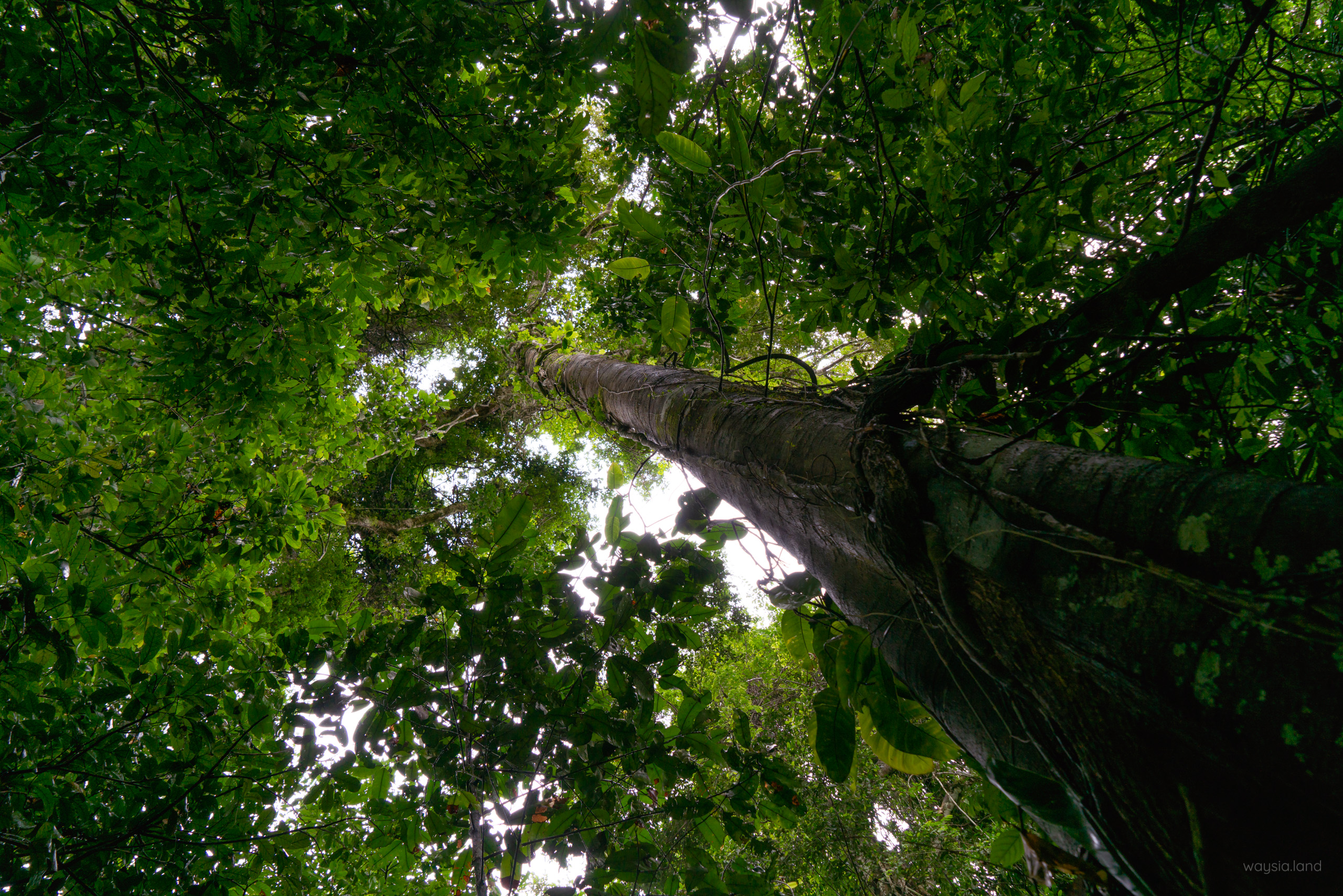Manu, Peru – The Amazon Rainforest
Giant Otters, Capybaras and Caimans, oh my!
Ah, the Amazon Rainforest, full of jungle, intrigue and wildlife.
Due to the remoteness and cost, most people will probably only ever visit the Amazon once in their entire life. As such, researching where to begin your Amazon journey is quite an effort in itself. Multiple entry points in multiple countries, all with varying degrees of accessibility, remoteness, budget, luxury facilities and wildlife. Not only that, but since most people only ever go to the Amazon once, comparing experiences across different areas is difficult, to say the least. Experiences are also definitely coloured heavily by the wildlife people do see which can often be like winning the lottery.
I went for a 6-day 5-night Amazon journey into Peru’s Manu with 2 of the nights in the highly coveted Manu Reserve Zone. Being quite protected and remote, it has arguably some of the most wildlife density of all the main areas, the primary reason I chose to go here.
In case you’re wondering, an Amazon trip isn’t a crazy Jumanji style adventure. You won’t be running for your life from a giant anaconda or treasure-seeking banditos. An aggressive native tribe won’t rain a hail of arrows on you, at least not if you stick to the program. While camping does exist in some areas, most people are staying in the comfort of well-equipped jungle lodges or on river cruise ships. Walking in the jungle is not an expedition but is a scenic potentially wildlife spotting walk on established trails.
Manu Amazon – Day 1 – Cusco to the Amazon
The ride began early, about 6am departing from Cusco, Peru. Having had many early starts, I was now quite adept at sneaking out of my hostel room in the wee hours of the morning. From having the day’s clothes on the foot end of the bed to toiletries at arm’s reach to everything else pre-packed except whatever was charging the night before.
Amazon tours from Cusco will usually go to either Manu, Tambopata or the more wallet-friendly Puerto Maldonado. This tour leaves with a minimum of 2 people and our group would have 5 in total. I met a nice Austrian couple Daniela and Andreas in the van and the other 2 would join us later. We had a slightly modified program to suit, of which the main difference was which lodges to stay at for the first and last nights. In hindsight, this didn’t really impact the trip.
On the outskirts of Cusco we stopped at a huge market, Mercado Vinocanchon to pick up supplies for our 6-day adventure. If you want to support local individuals and get the freshest produce, this is the place to do it.
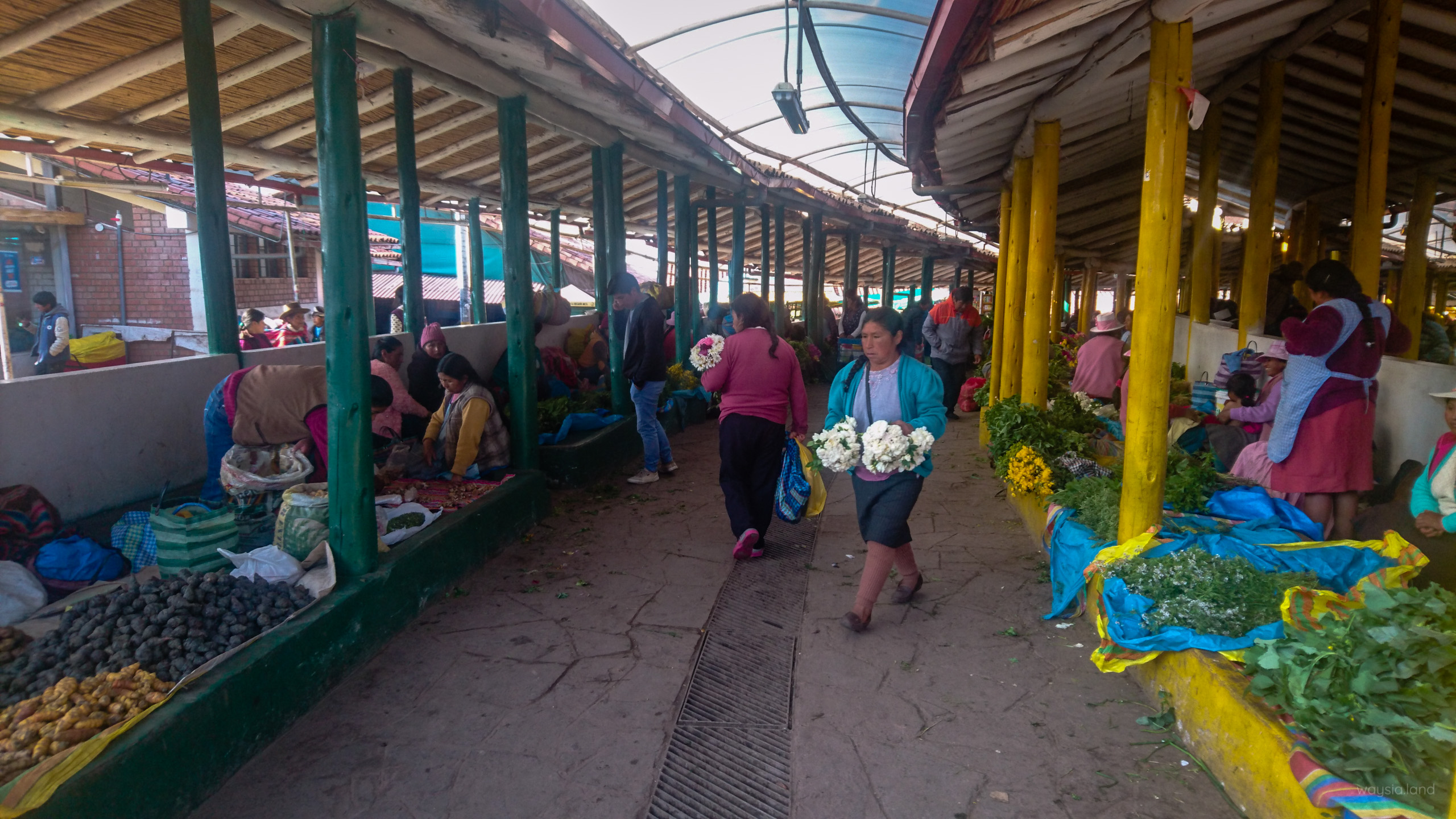
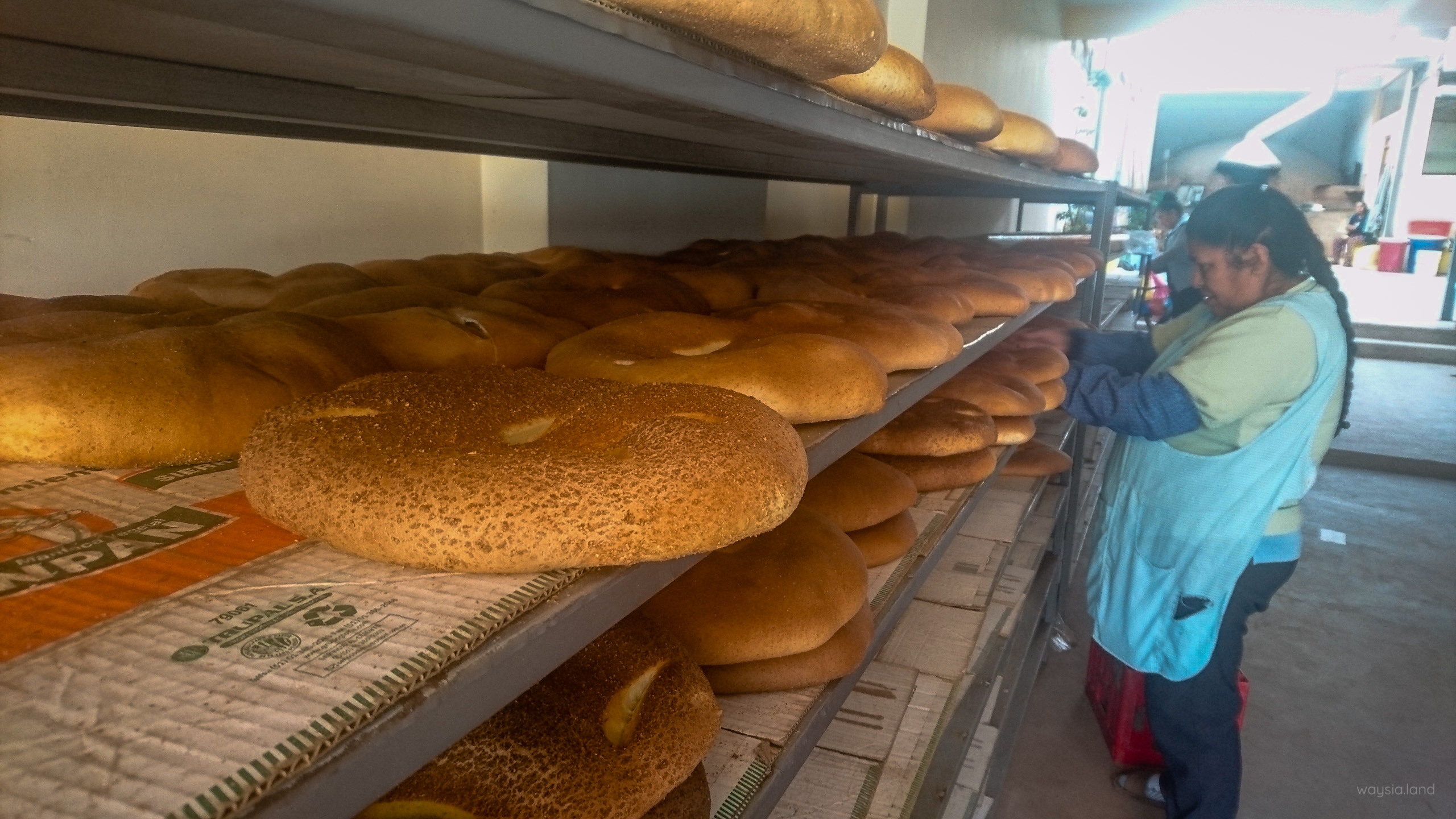
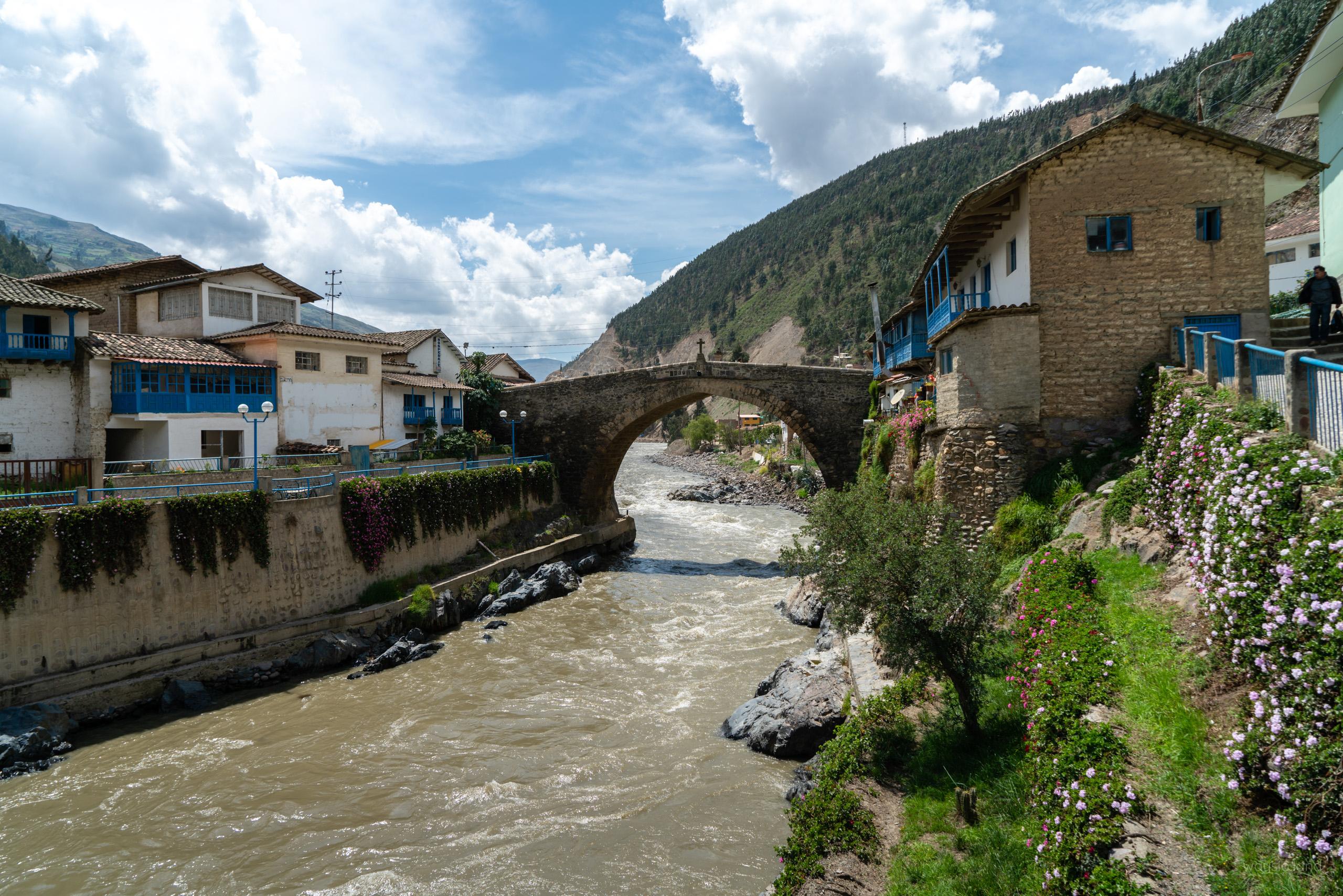
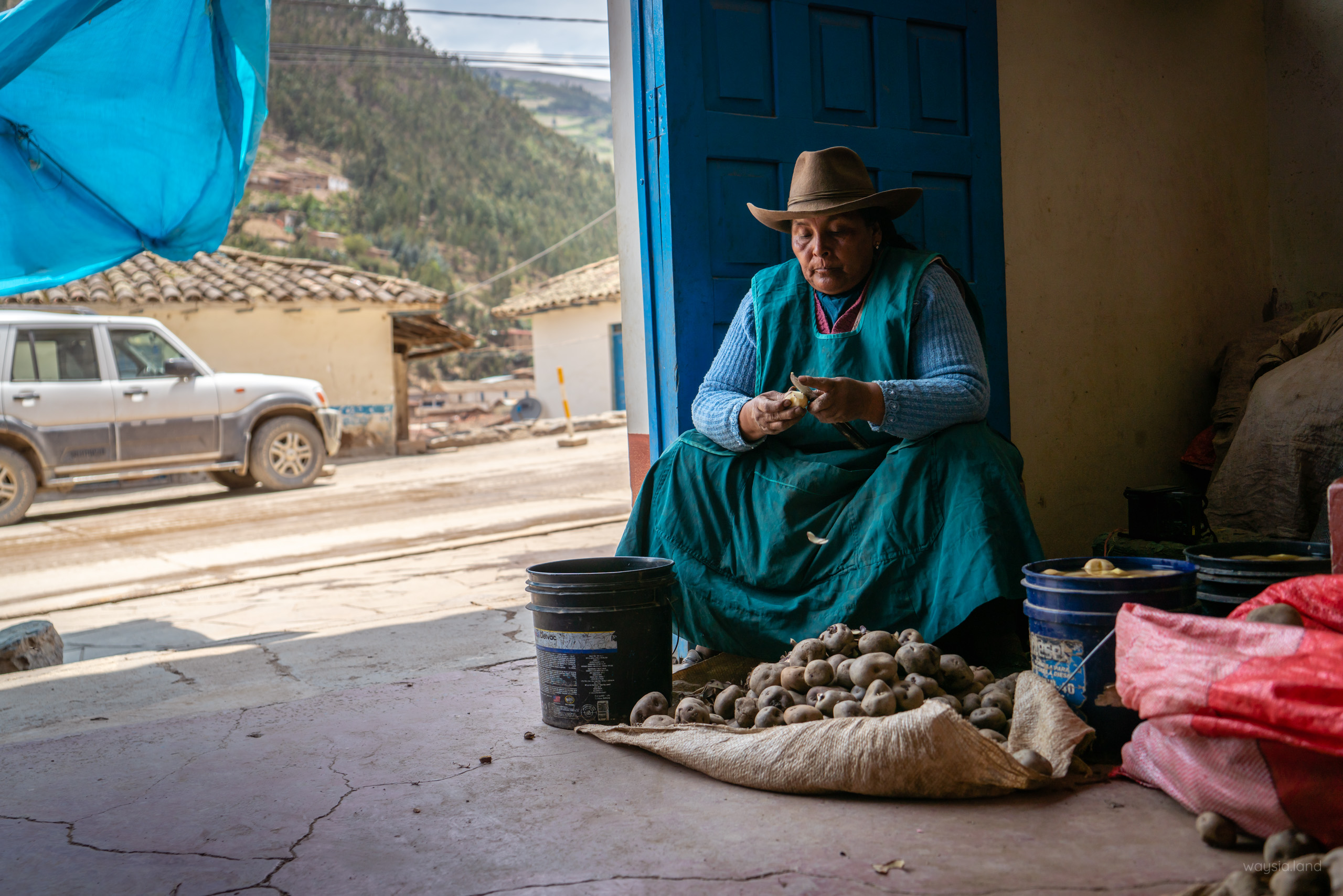
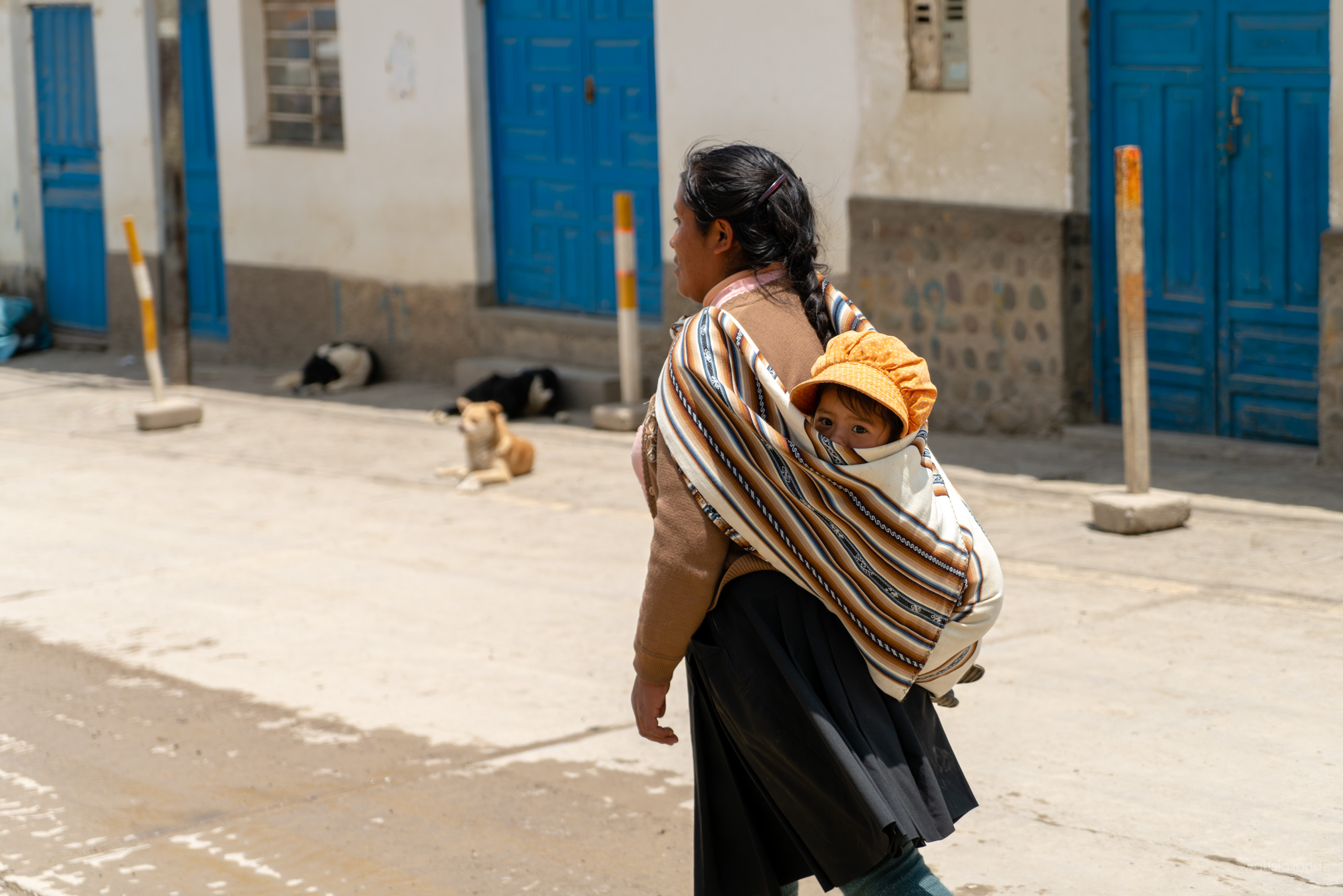
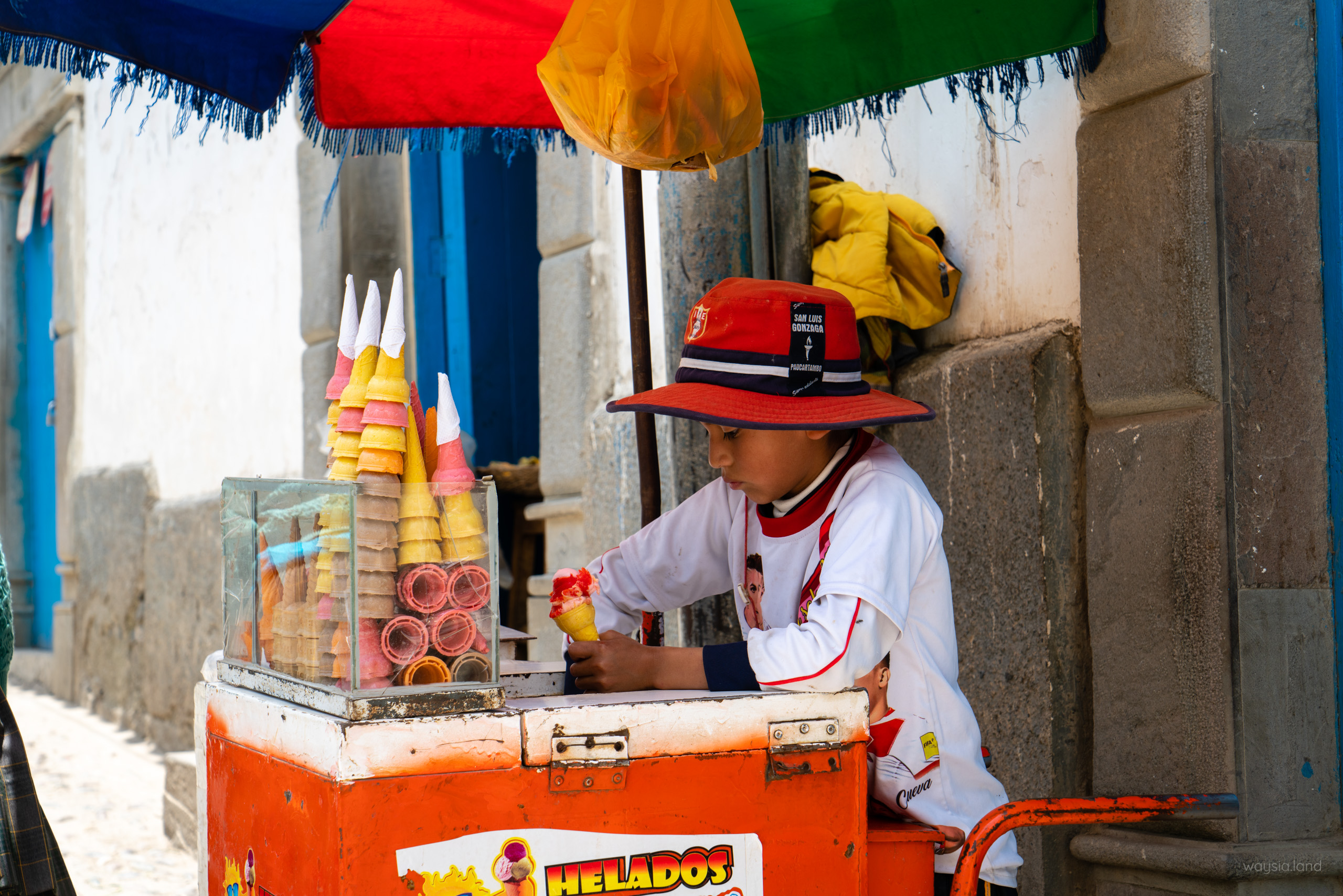
We continue our journey over Acjanaco Pass (3550m) and stopped along the way down into the cloud forest.
We were in the Amazon now.
Here was an ideal location to see if we could spot the red and black Andean cock of the rock bird. It unfortunately wasn’t the season for it but we did see a family of monkeys and this instead:
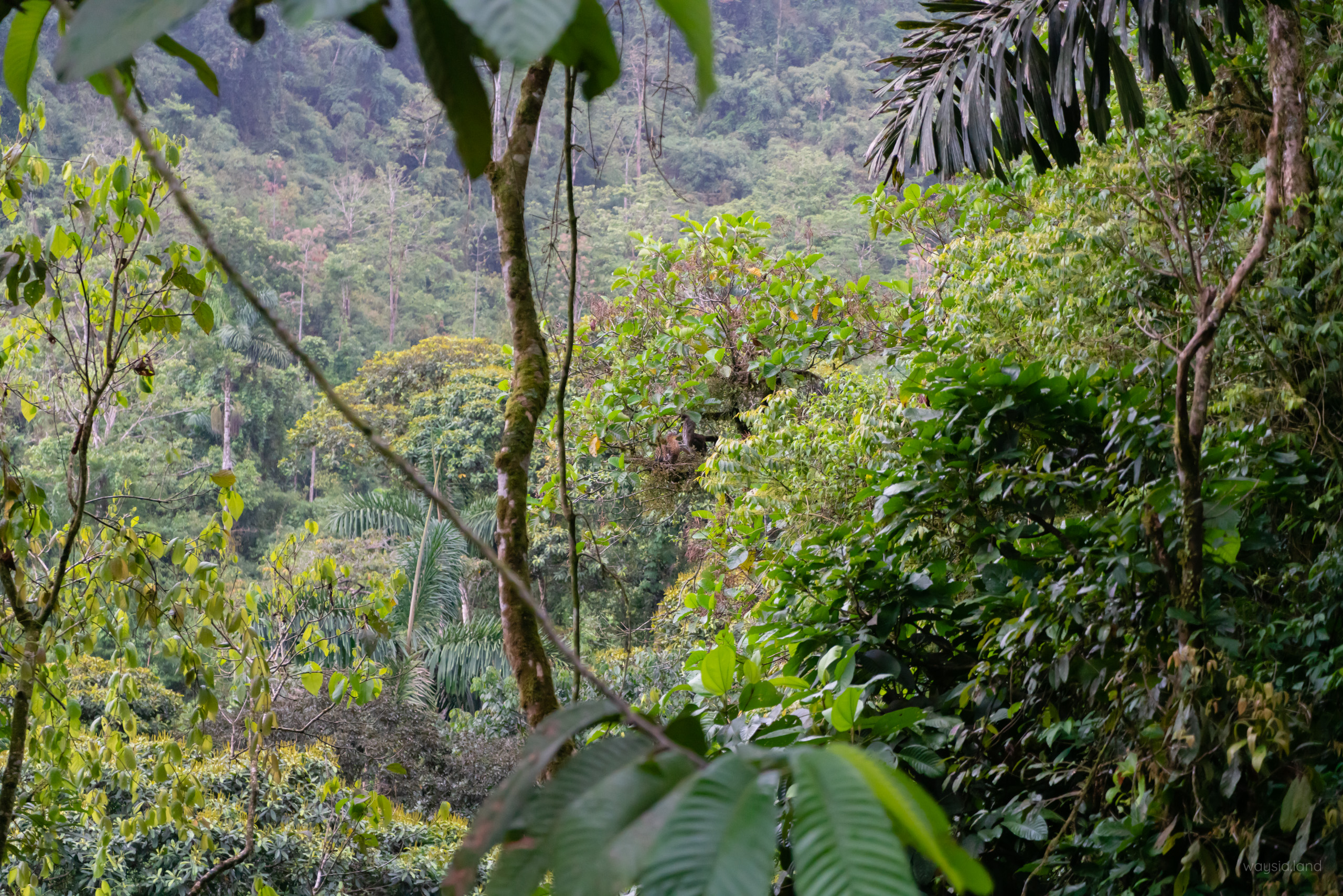
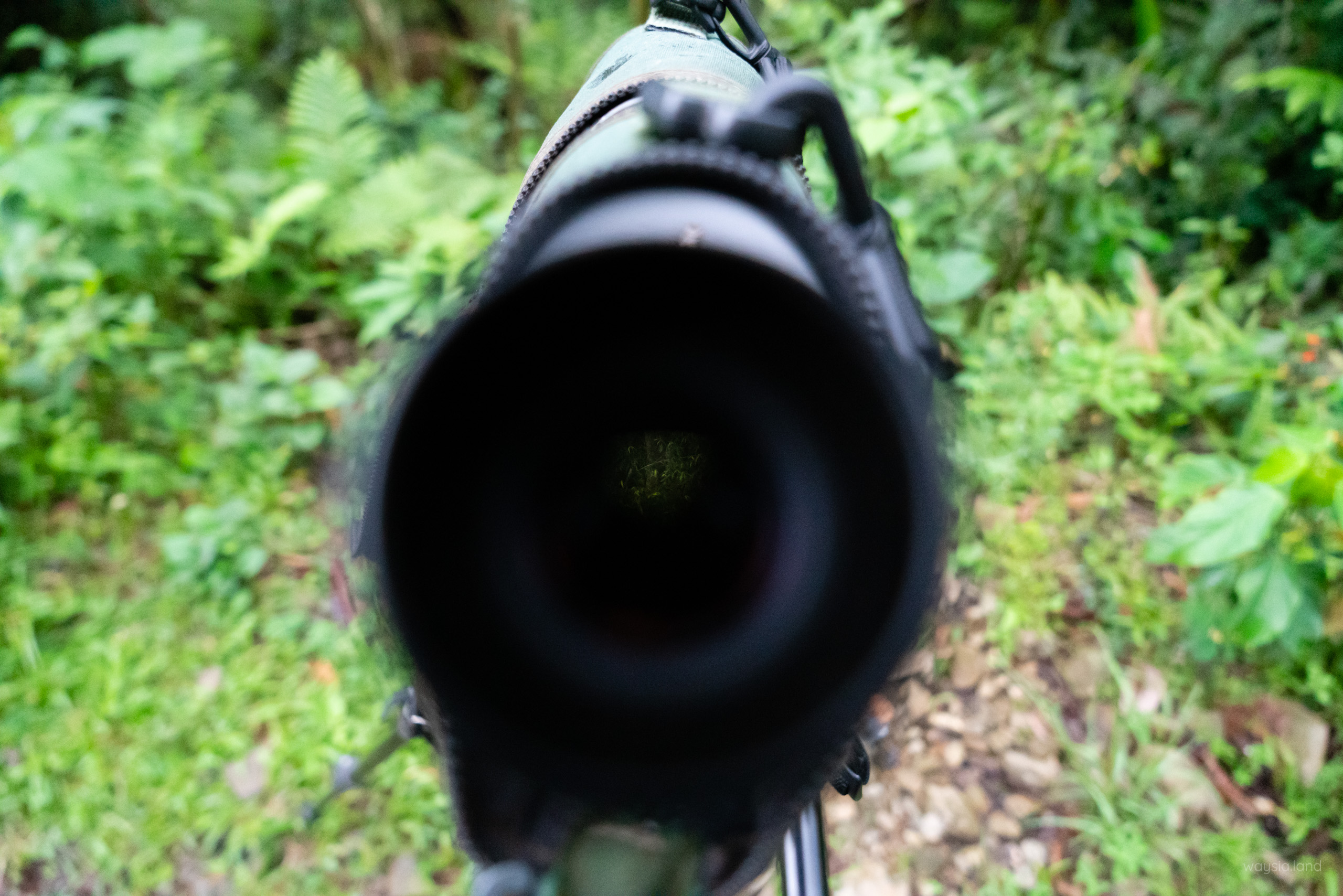
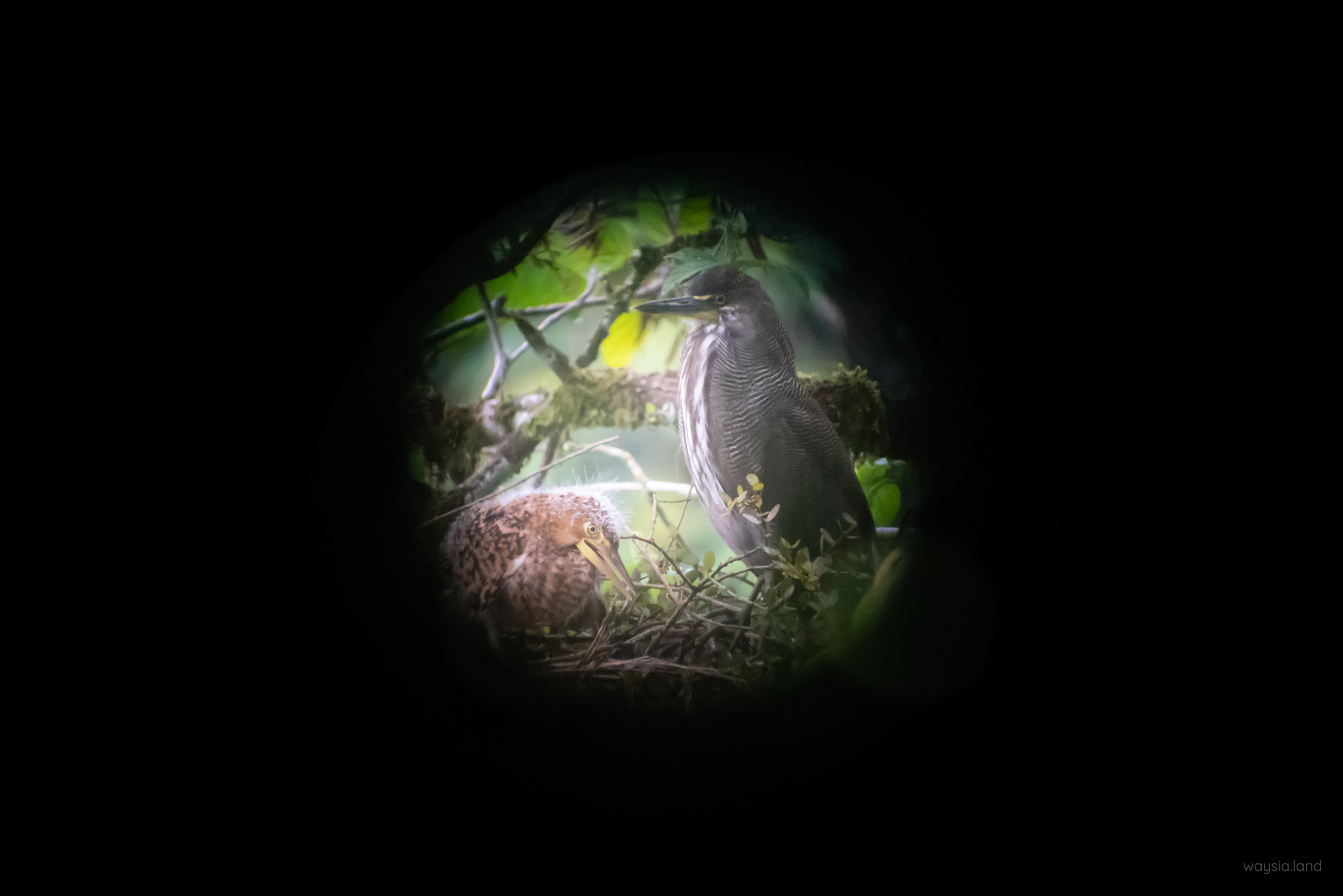
One of the first of many things we would see on this on this trip, neat! You can also see how much difference a huge zoom or binoculars makes in both seeing and photographing the wildlife.
Further along, we stopped off at a very small market. we had our veggies, we had our bread and now it was time for our fruit. Our cook, went around smelling different pineapples. I don’t usually buy pineapples so I should have taken notes. Later in my trip, I was faced with choosing a good pineapple but couldn’t remember what to do other than to smell it. And what was I supposed to smell? Pineapple? Nothing? It looked like he picked green ones as well which didn’t help.
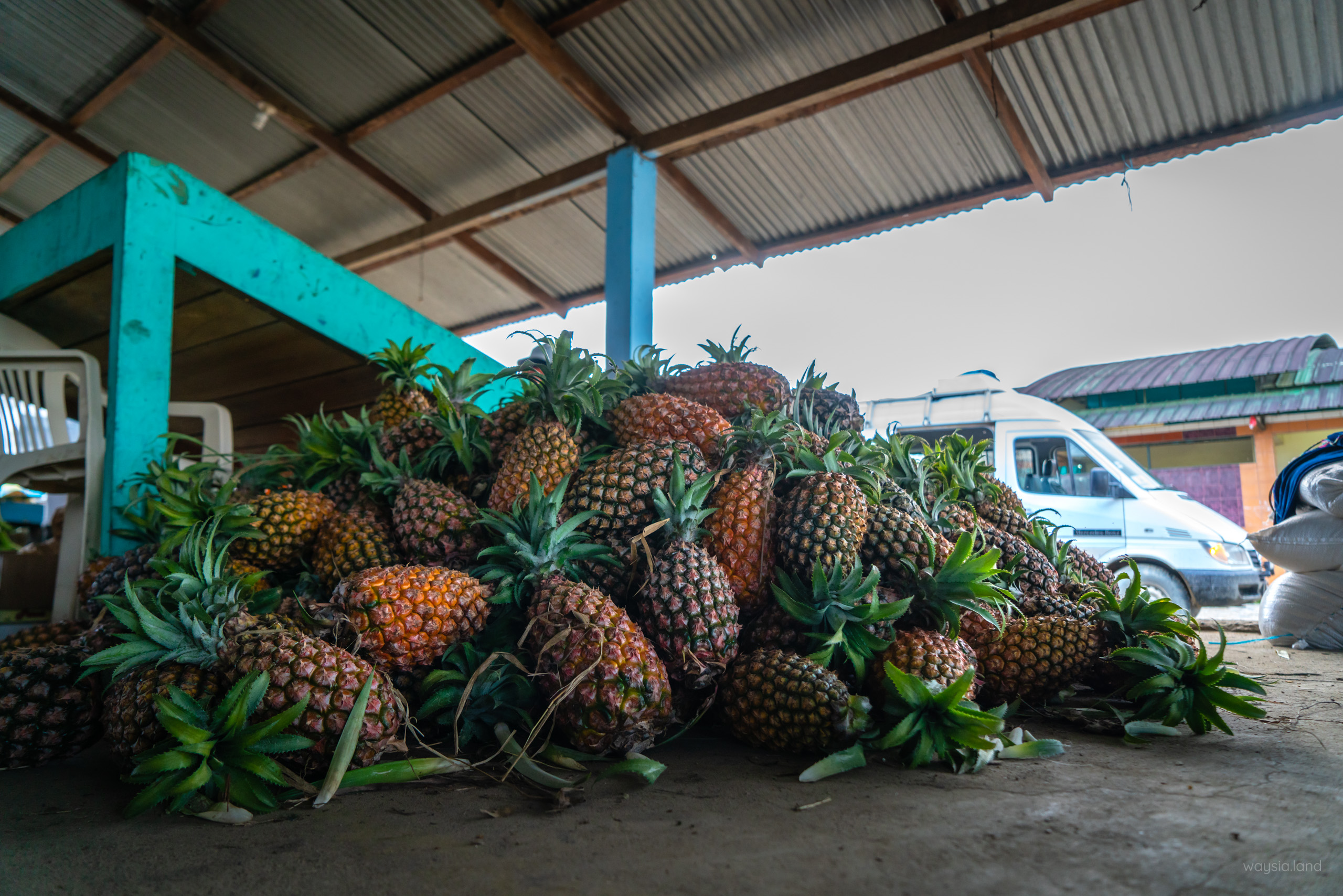
We eventually arrived at our accommodation, Guadalupe Lodge, around 12 hrs later including stops. It was a fair way out from the town of Pilcopata where we got the pineapples and other fruits, nice and remote. I didn’t really look at photos of where we would be staying ahead of time and it was surprisingly nice. We would be staying at jungle lodges throughout the trip so this was a good indication of things to come. I even got my own room and didn’t even have to pay the solo traveller tax! (the bs single supplement fee some places charge)
The room had an ensuite, the beds were nice, they had mosquito nets and there was hot water (solar). Other than having to keep one eye open while having a shower due to insects making their way into the toilet from the outside, everything was pretty good all things considered. At the time I didn’t realise it but I later found out there was a cave on the property which would have been neat to check out.
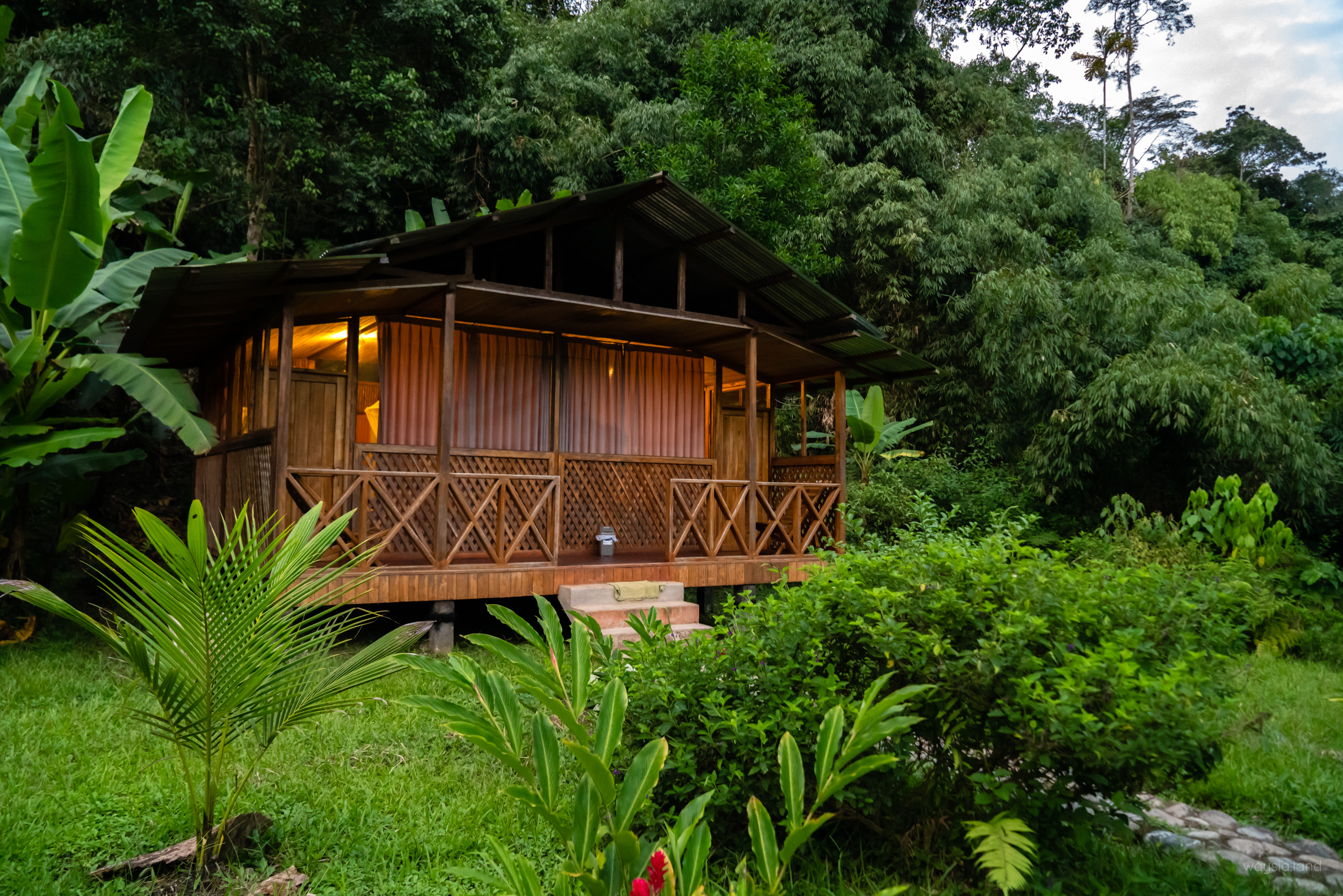
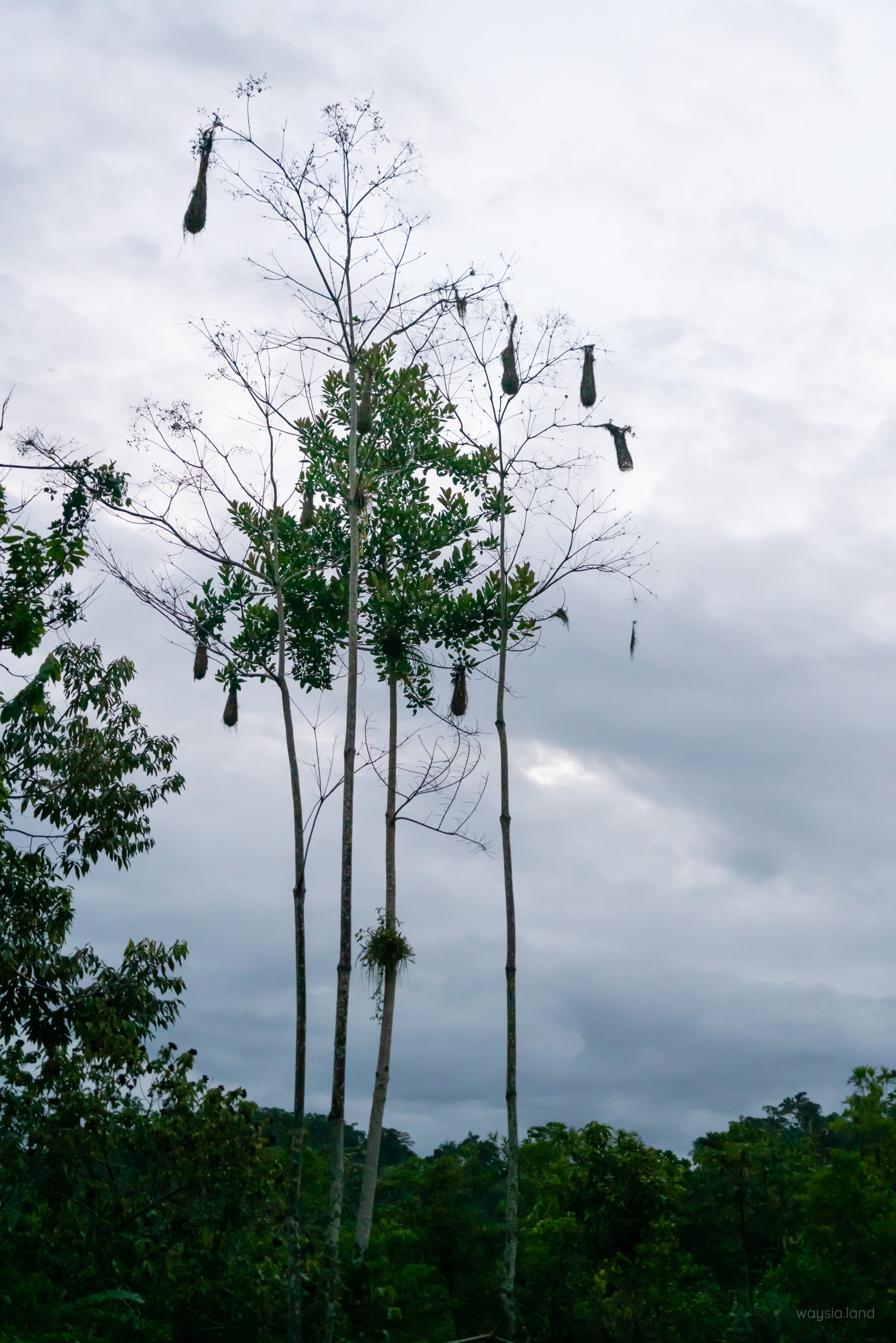
Manu Amazon – Day 2 – To the Manu Reserve Zone
It was raining on and off that night which continued into the next day. After they hacked away some branches that had drooped across the road blocking our path, we arrived in Atalaya Port. Here’s where we would transition from the van to a riverboat. We tried on some rain boots (included in the tour) which ended up getting a lot of good usage. For now, it was us 3, our guide, the boat driver and a couple of helpers. First stop was to pick up the other 2 people who were already partway down the river.
The best seat in the house (boat)?
I had originally wanted to sit in the front mainly to take photos and videos with the bow and no other people in it. The boat couldn’t have been moving more than 1 minute before I was like “nope”. The roof wasn’t long enough to prevent the rain pellets from belting me in the face while the boat was in motion. Even if I could withstand it, there’s no way I’d be able to take a video or photo without a ton of water hitting the lens ruining whatever photo or video I was going to take. So I promptly hopped over to the back.
In terms of animal sightings, it’s almost always going to be to the left or to the right so it doesn’t really matter. I almost always had a row to myself, if not I was sitting with the guide. The others came together and sat in pairs so there wasn’t really an issue on whether left or right was better as it was easy to look past just 1 other person. But if you really must have an answer, sit on the left.
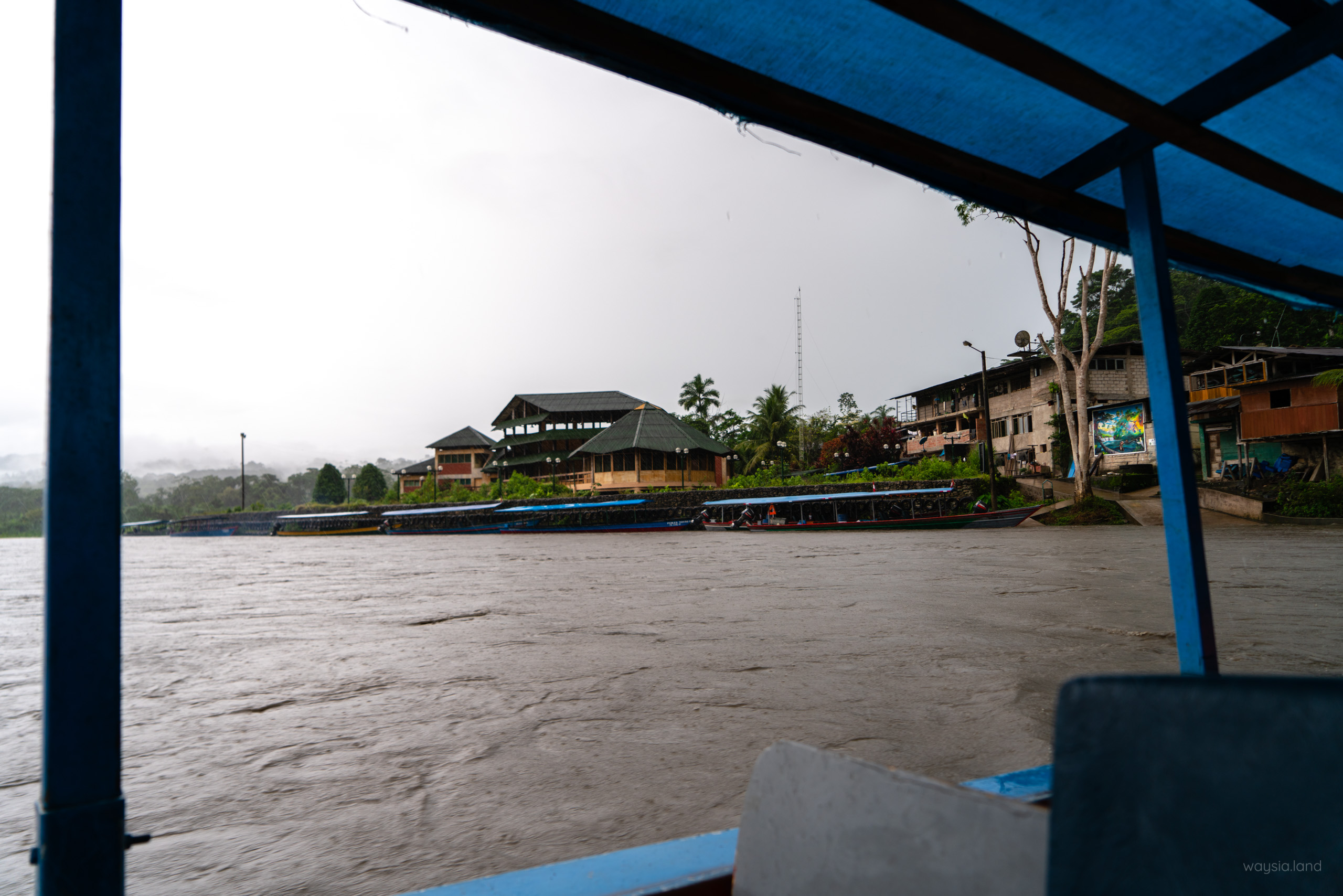
Eyes a bit more open than before on the lookout for wildlife, we cruised along the river Madre De Dios for a while before reaching the research station Audrey was working at. She was temporarily studying the natural flora and fauna of the area and basically lived here in the Amazon. Her mother Kathy had made her way to the station earlier and this is where we would be picking them both up.
With the amount of rain recently, the river was quite high. It turns out the river’s depth can vary by a few metres! Not only that, but it makes the sandbar hidden (our boat driver still somehow managed to navigate through them) making this river look really wide.
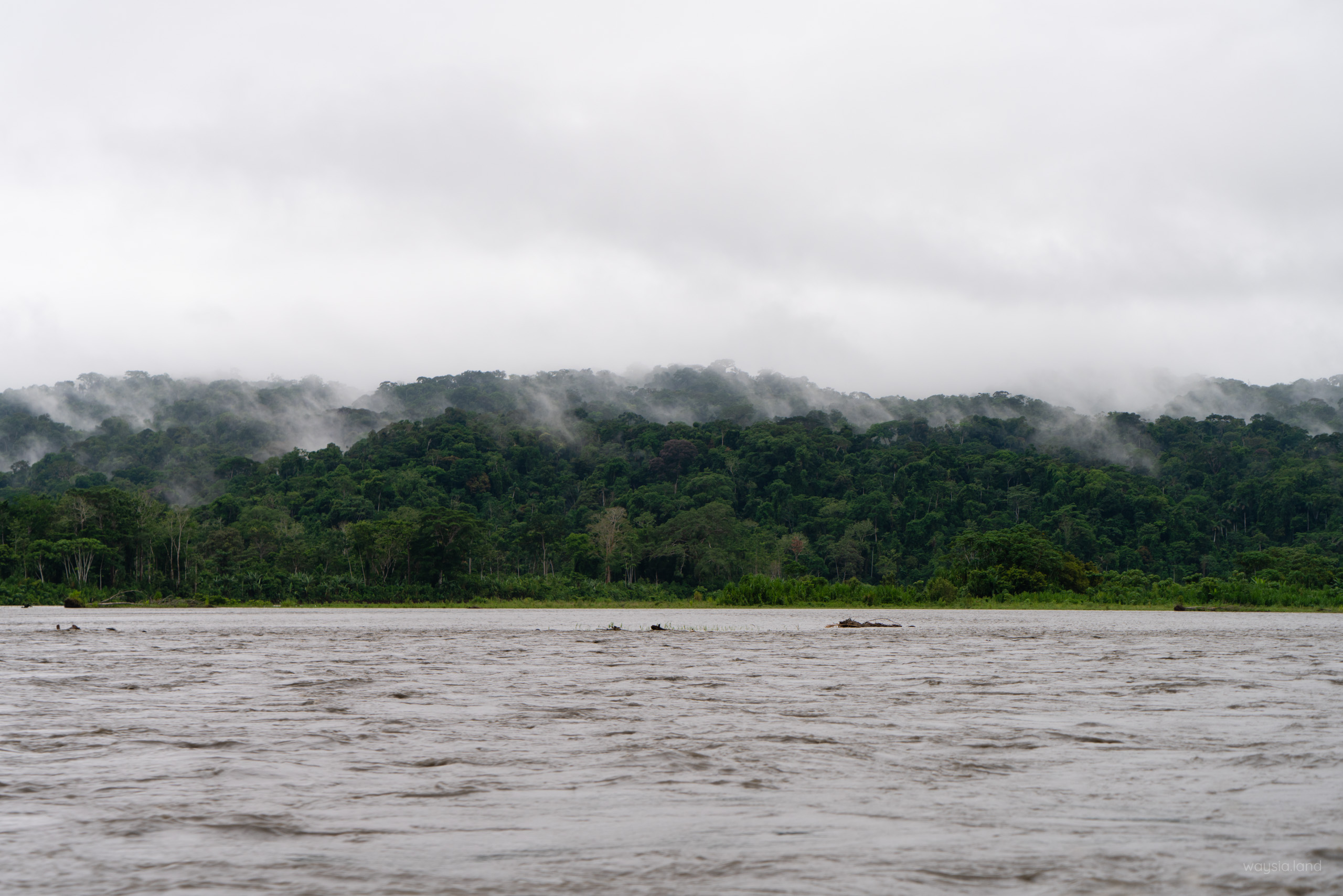
I hope you brought those binoculars.
On the bright side, this is still ‘close to civilisation’ and the river at it’s widest. It does get thinner significantly and the boat can navigate closer at points. It eventually connects on to the even thinner Manu river which is situated in the Manu Reserve Zone. This is where the action is.
For comparison, based on my poor eyesight, the above picture is around 300 metres to the shore. Around Rio Negro where cruises from Manaus in Brazil are is a crazy 2km wide! My mind still can’t comprehend it.
Where’s Wally?
Now it’s the true test of ‘jungle eyes’. The deeper into the Amazon we get the better our chance of seeing wildlife is. As I found out, if you’re not used to spotting wildlife, it’s going to be hard. But that’s where the guide, the helpers and the other people all help chip in to spot things. If anyone sees anything it’s called out. It’s typically followed by me going “where?”, then me going “I don’t see it?”, then usually ending up taking a photo in the general direction and looking at my screen going “oooooh”.
Audrey, who was spotting birds and monkeys left and right, said her secret is to not looking for any and all animals. Look at a certain level such as treetops or ground level but not both. If you’re looking for something specific, knowing their colour also helps significantly too. A jaguar is yellow with black spots, thank me later.
All along this river, there are boats that go up and down the river likely scaring most things away. There aren’t endless streams of boats and we only saw several but it’s enough to create a visible impact when you compare it to what I saw later in the Manu Reserve Zone. Birds are by far the most common thing we see but the prospect of seeing anything including a jaguar is there.
People without contact
During the ride, we are told about ‘people without contact’ that live in the area and there was a chance to see them from the boat during a certain portion of the trip.
I’m now thinking “Wow, there are people like that still on this planet!?”
Now I’m looking for wildlife and my head is telling me I should keep an eye out for something that probably looks like a half-naked person covered in war paint and armed with a bow and arrows.
After getting the run down, I don’t think ‘people without contact’ is the right term. Some tribes converse with the government by literally shouting across the river. It’s probably more like ‘people frozen in time in the past’. They are aware that an outside world exists and some tribes want to join in. They aren’t allowed as previous tribes that have done so have a mortality rate of 80-90%. Diseases, bacteria and viruses à la European settlement of North America. It’s also not that simple due to the different way of life, such as concepts of property ownership. Your banana is their banana.
Now entering the Manu Reserve Zone
A fair way down the river we turn left where it forks from Rio Madre De Dios into Rio Manu (Manu river). The transition from clear to brown water is sudden. We stop off at the ranger station where we all had to sign in. This is now Manu National Park territory and in this area, you must be accompanied by a guide.
If we continued down the previous river we would actually arrive at Puerto Maldonado after a few days.
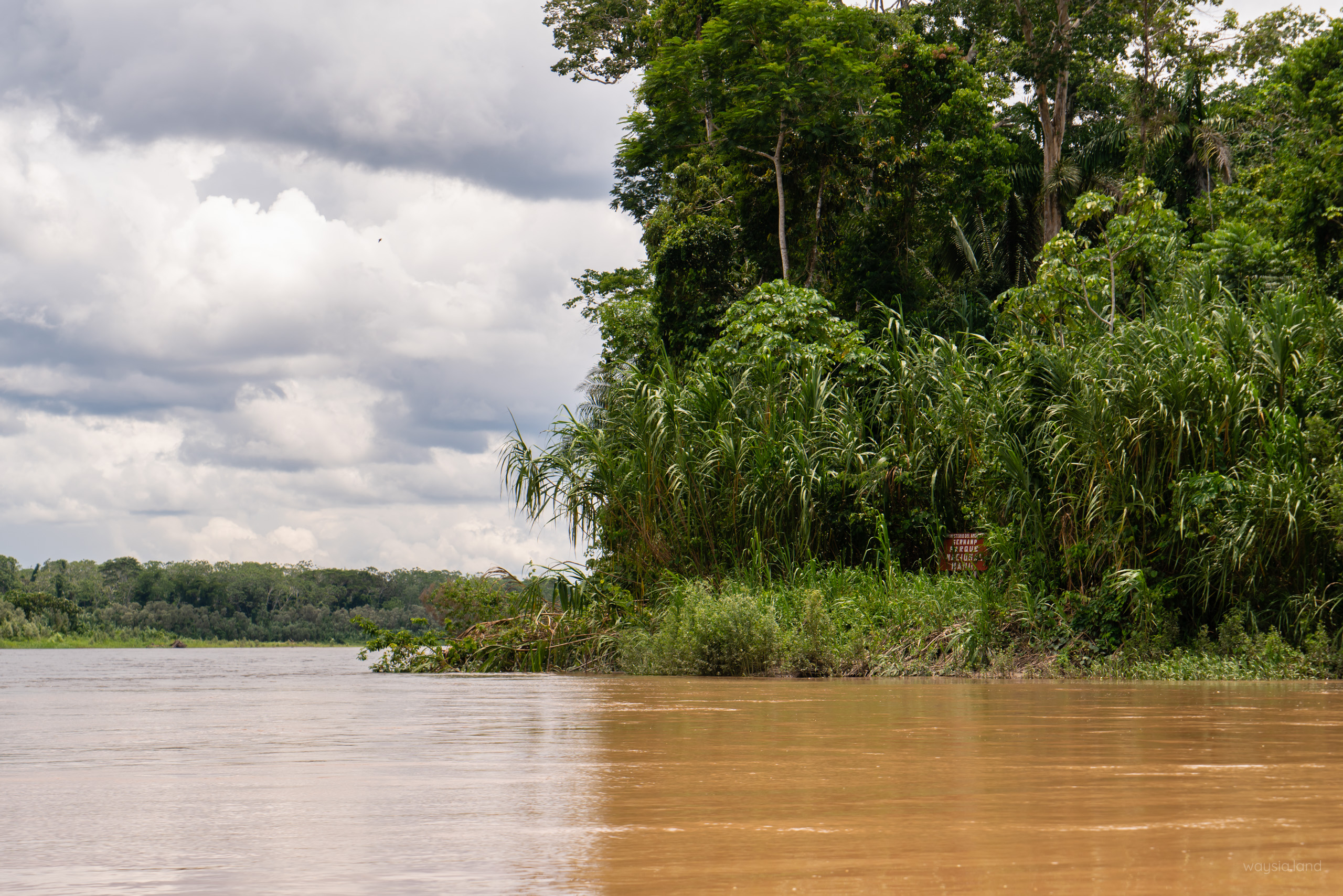
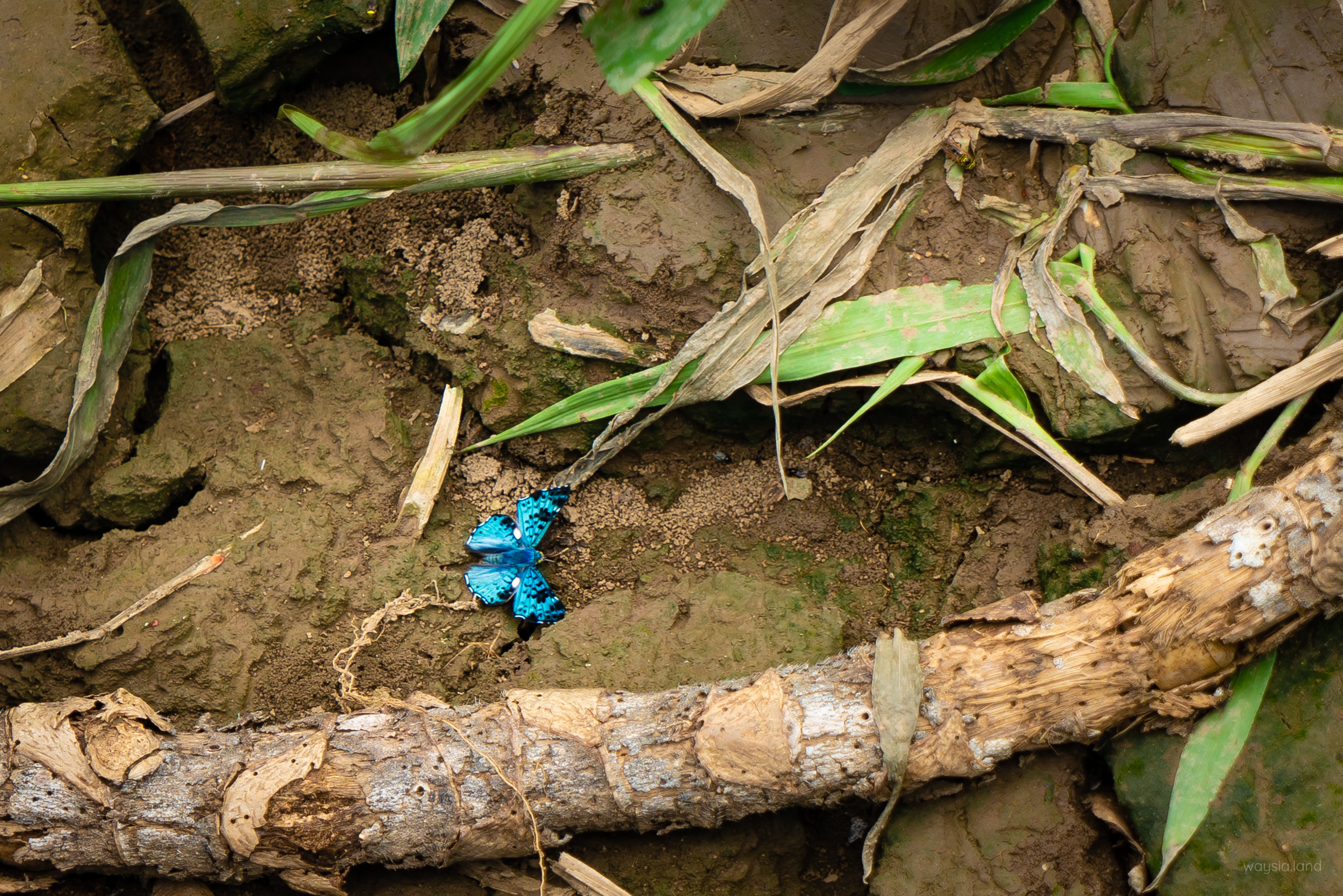
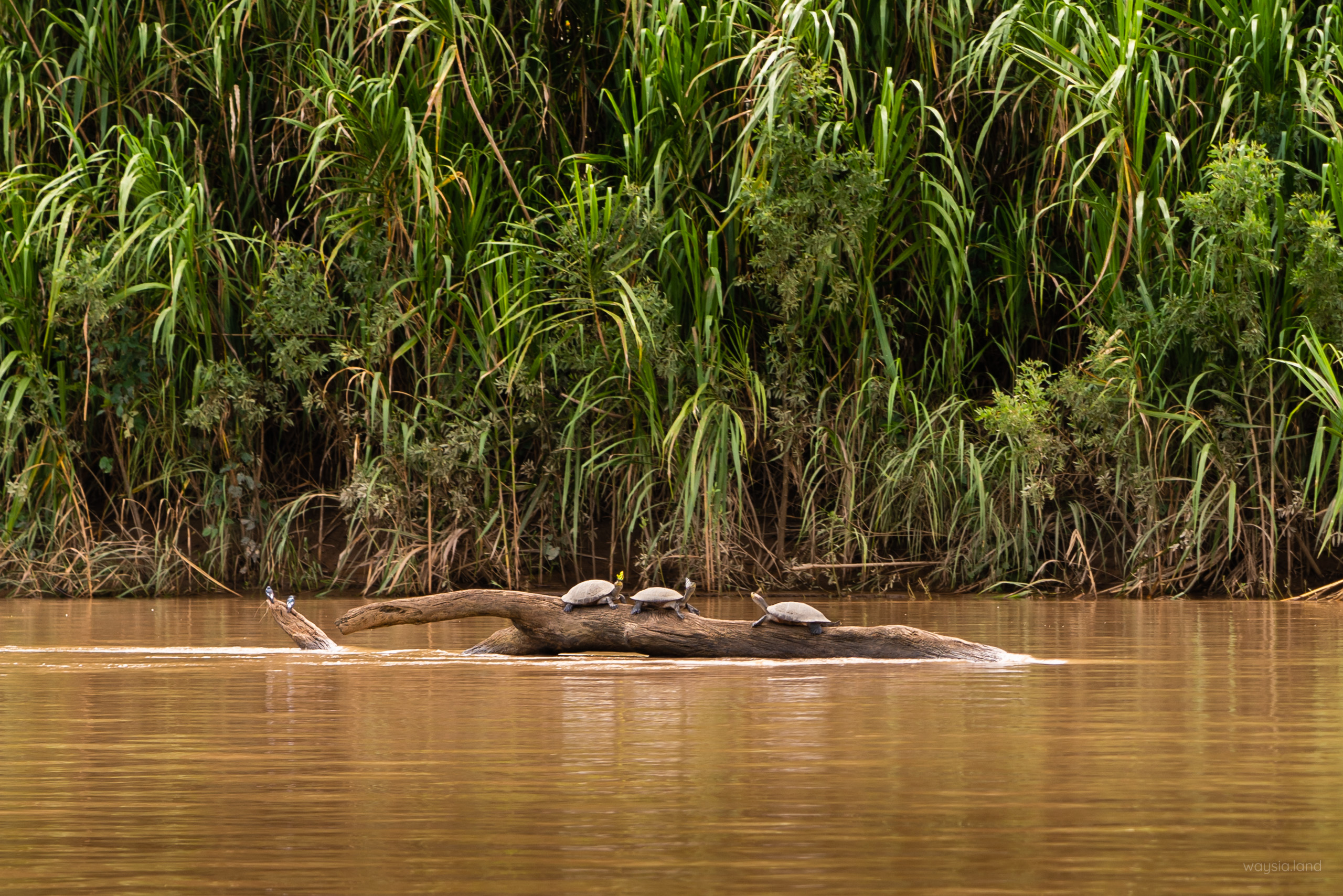
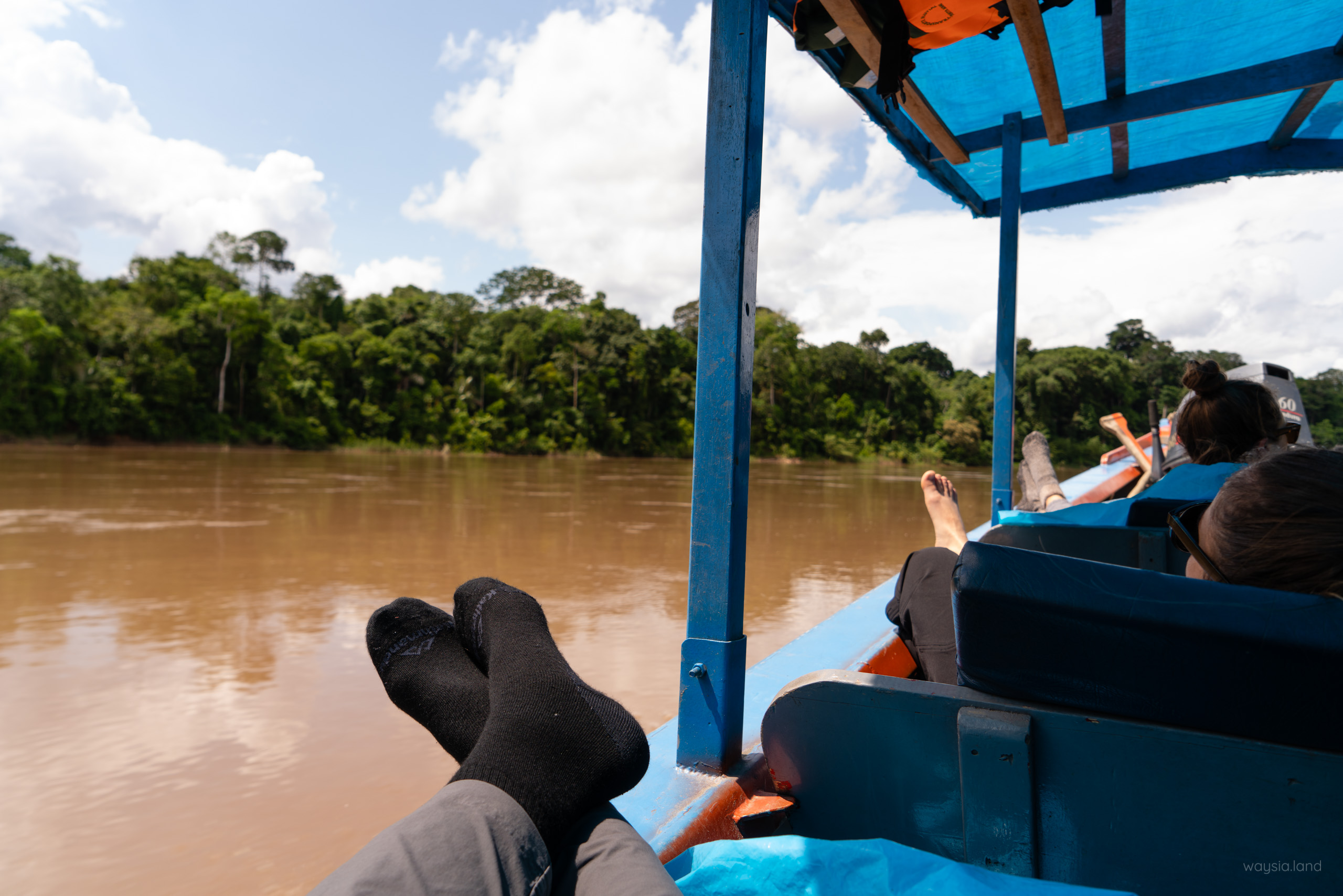
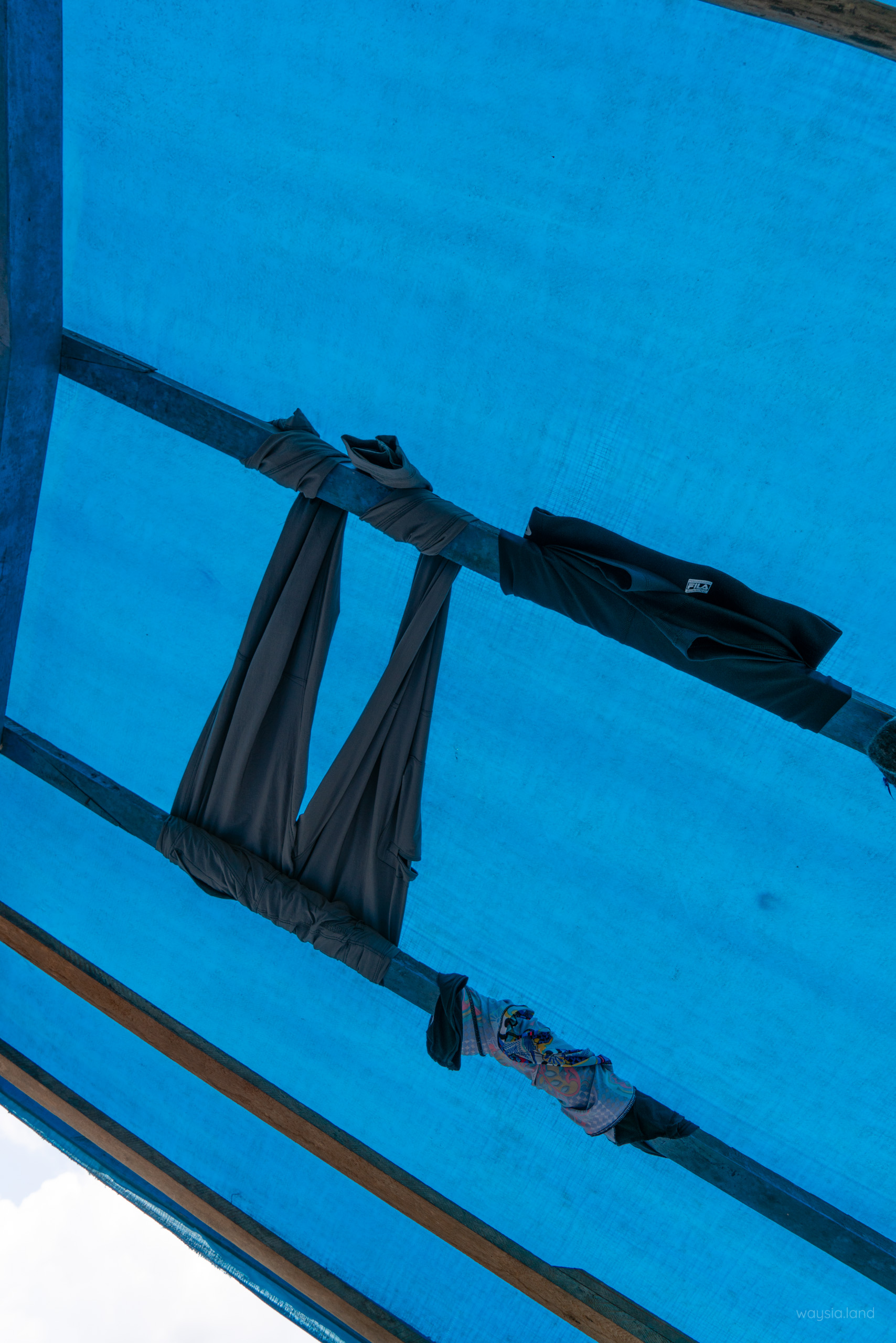
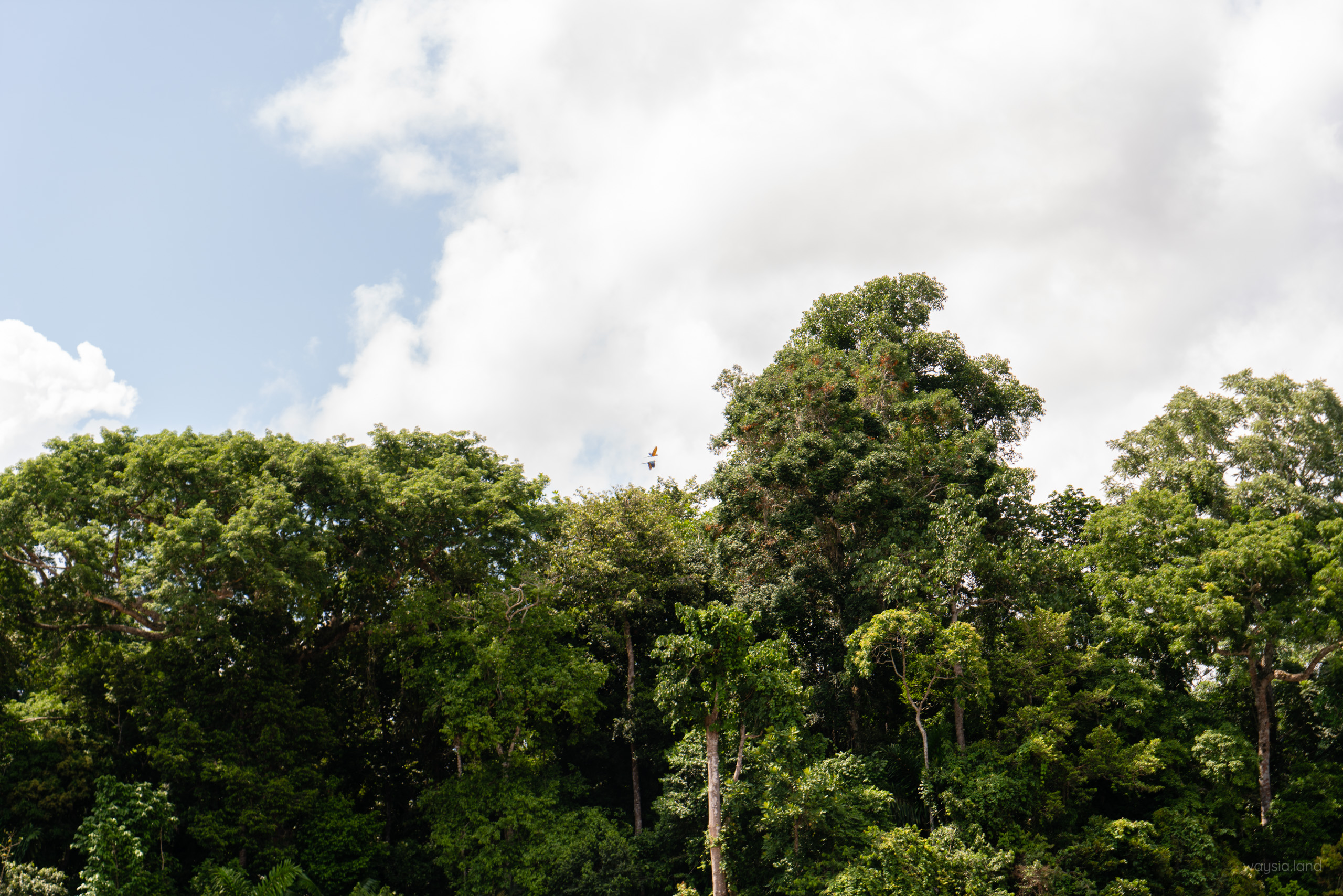
In terms of wildlife sightings, the difference between this river (Manu) in the Manu Reserve Zone and the previous river in the Manu Cultural Zone (Madre De Dios) was like night and day. This river had sandbars where animals could sunbake all day, it was at most 50m wide and there was hardly any traffic. This place didn’t have hoards of boats and we could go hours without seeing another one.
We had the Manu Amazon to ourselves.
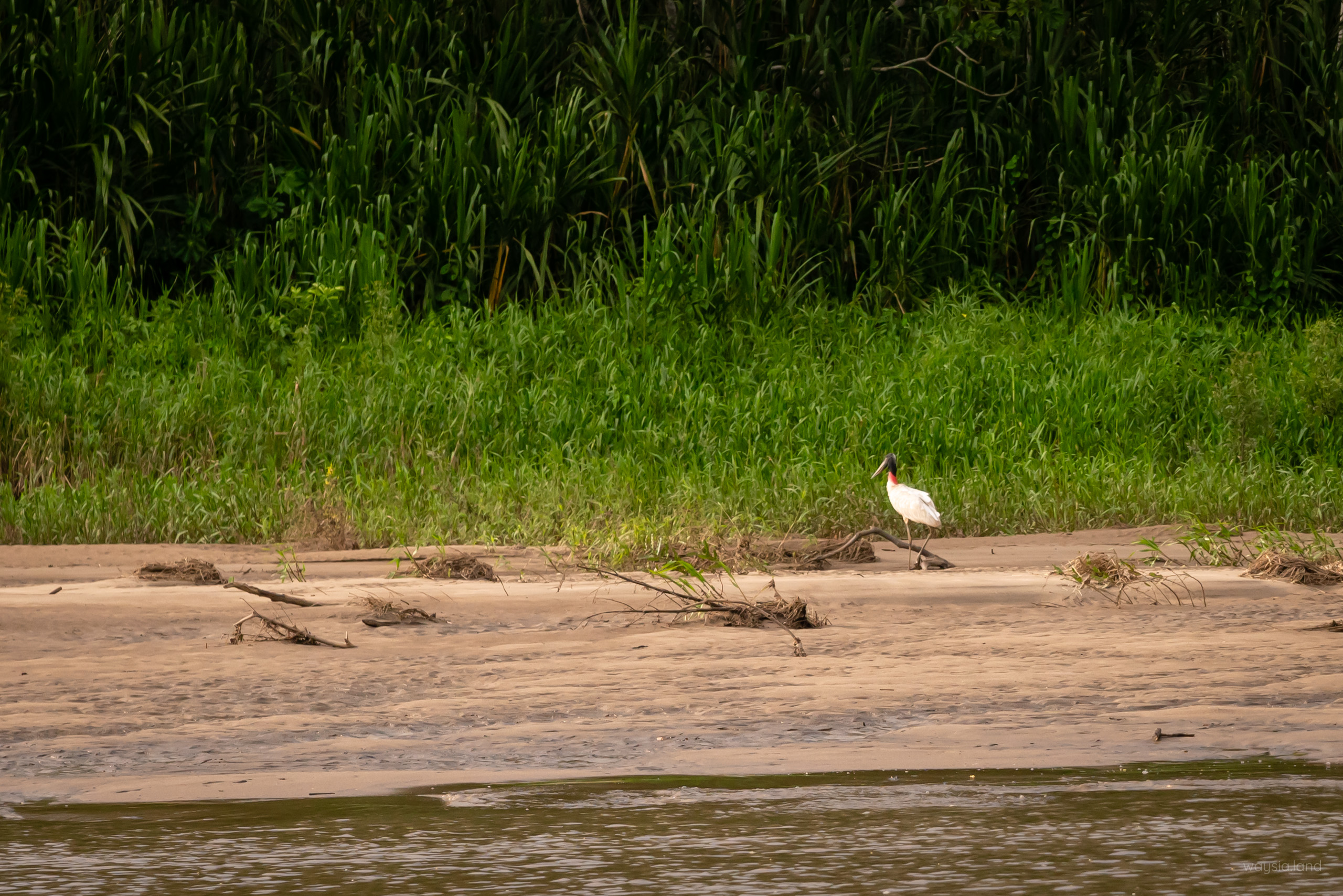
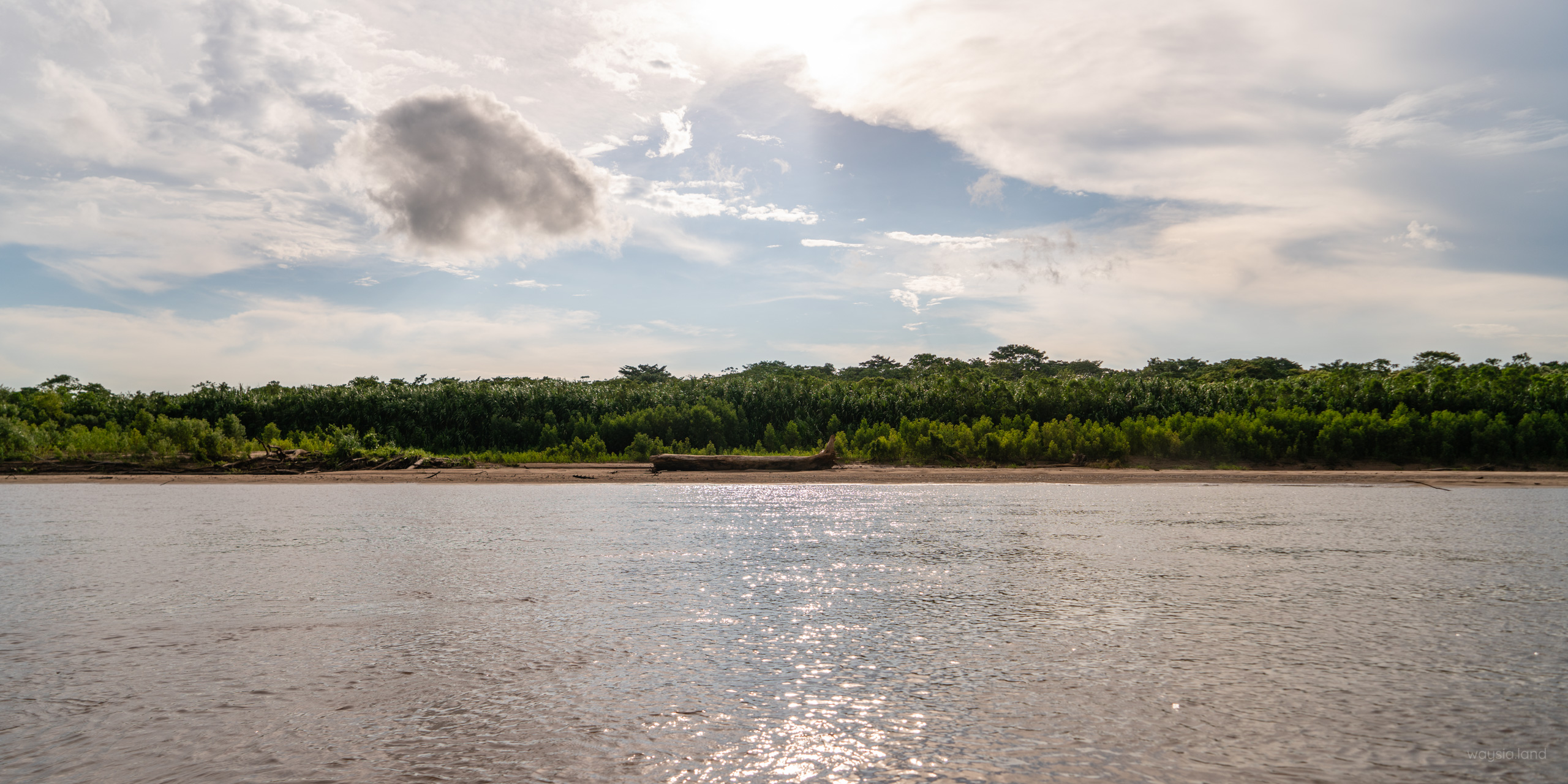
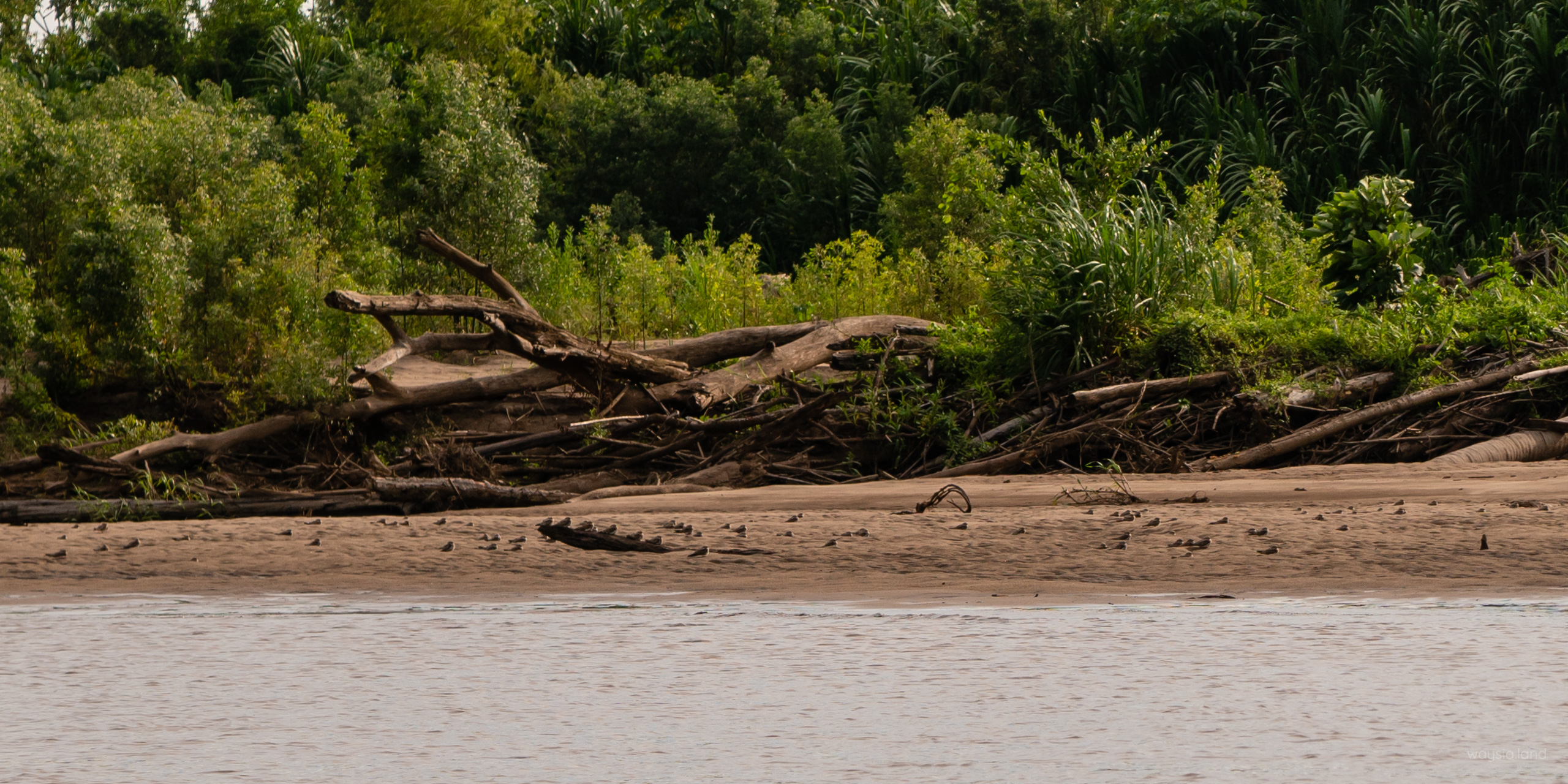
Our guide Ricardo with his powerful pair of binoculars did an amazing job of spotting animals. With just my eyes alone I would have dismissed the birds as rocks, animals in the trees as leaves and caimans in the water as logs. Ricardo and the boat driver worked in unison and sometimes only spoke with hand signals. The boat driver would shut down the engine or reverse the boat for us to get a better look.
For birds flying above the canopies, our guide would be saying things like “green macaw, red macaws…”. To my eyes, with the contrast against the bright sky obscuring all the detail, they would all just look like black macaws.
Daniela kindly offered to lend me her binoculars as Andreas had a pair too they could share. Figuring that could rob one or the other of a fleeting sighting I humbly gave them back.
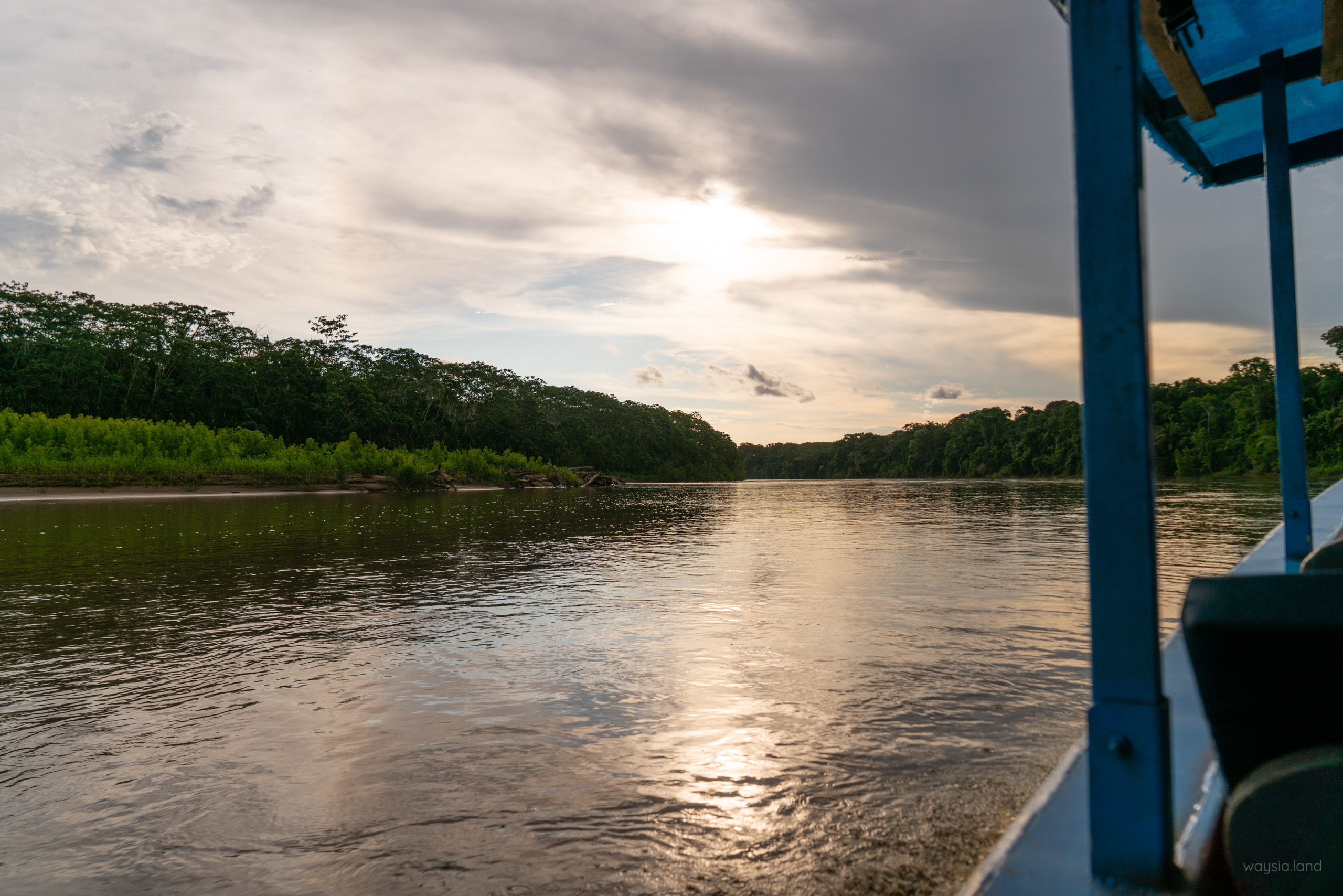
Roughly 11 hrs since we departed that morning, with the river portion taking roughly 9 hrs, we had arrived at Casa Matsieguenka where we would be staying for 2 nights.
Remember that the previous day’s journey was 12 hrs. I wasn’t kidding when I said it would take 2 full days to get here. Keep in mind that’s from Cusco too.
This accessibility (or lack thereof) alone cuts out a lot of tourists and makes for a more adventurous experience. Not only that but the less tourists there are, the less impact of tourism there is on the Manu Amazon. A huge win-win-win in my books.
This is also one where it’s not all about the destination, it’s the journey, that kind of crap. The experience of getting to the Amazon and not just flying straight into it, but cruising down an Amazon river in a local boat, potentially spotting true natives and always on the lookout for that elusive jaguar.
I did fall asleep on the boat at some stage. The lack of waves, smooth sailing and monotonous tone of the engine. I just hope I didn’t miss out on any key sightings. 🐆
Casa Matsieguenka
Casa Matsieguenka (pronounced: Ma-chi-gen-ka) is one of, if not, the innermost lodge on Rio Manu in the Manu Reserve Zone. I was pretty stoked about this since the whole plan was to have a really remote maximum wildlife amazon experience. It’s owned and run collectively by the local Matsieguenka tribe, hence the name, so staying here also helps them out.
I had read the lodge was struggling especially as newer lodges were constructed over time. The original plan for this lodge was to provide a true Matsieguenka experience which included things like sleeping on the floor. Turns out the majority of people didn’t want this and gravitated towards newer lodges with more modern facilities. To compete, Casa Matsieguenka installed more luxury facilities like beds doing away with parts of the authentic tribe experience, for better or for worse. Personally, I wouldn’t have minded as I was mentally ready for anything, just a month previous I had been camping and digging my own toilet. It turns out I wouldn’t have to do either on this entire trip. Luxury.
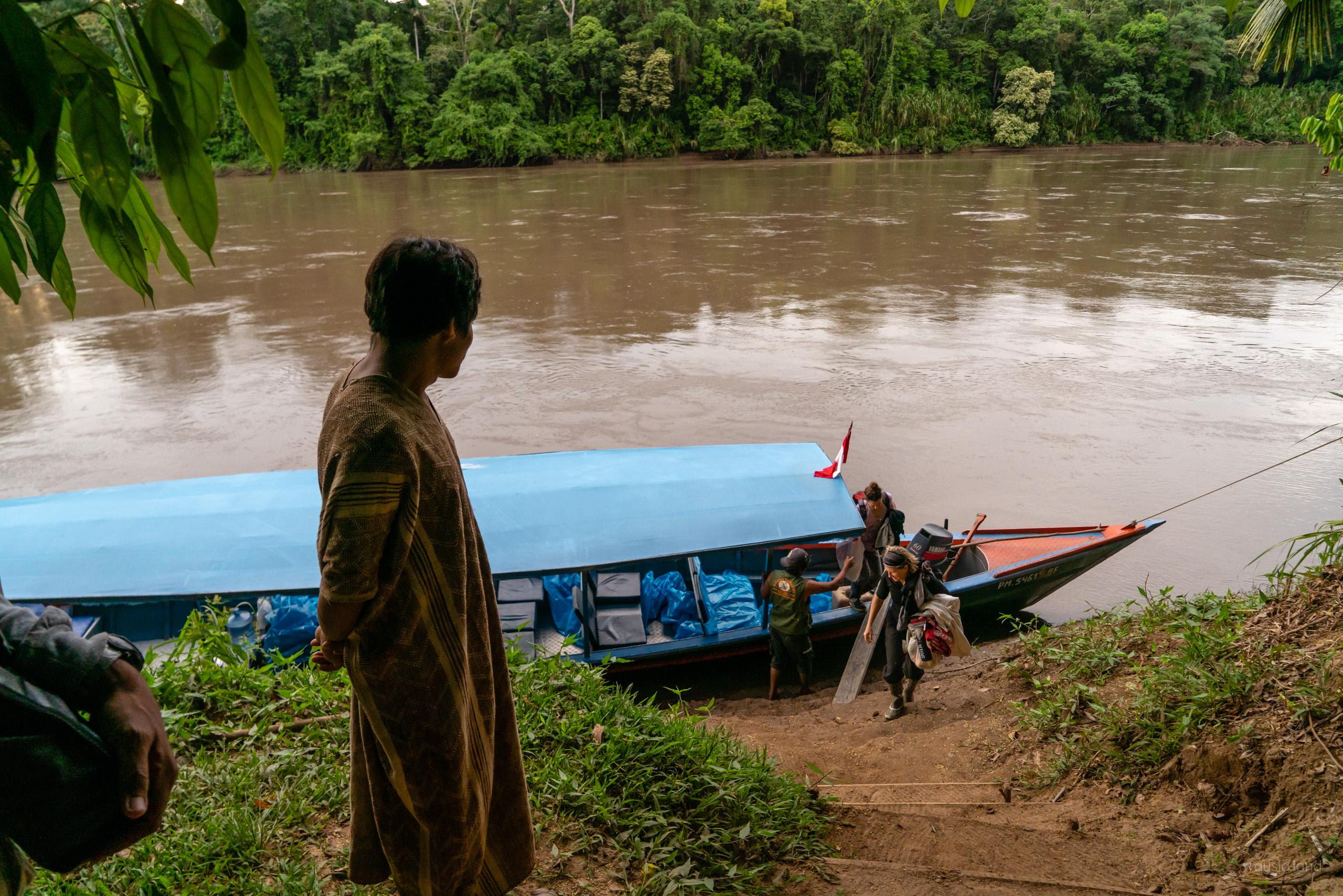
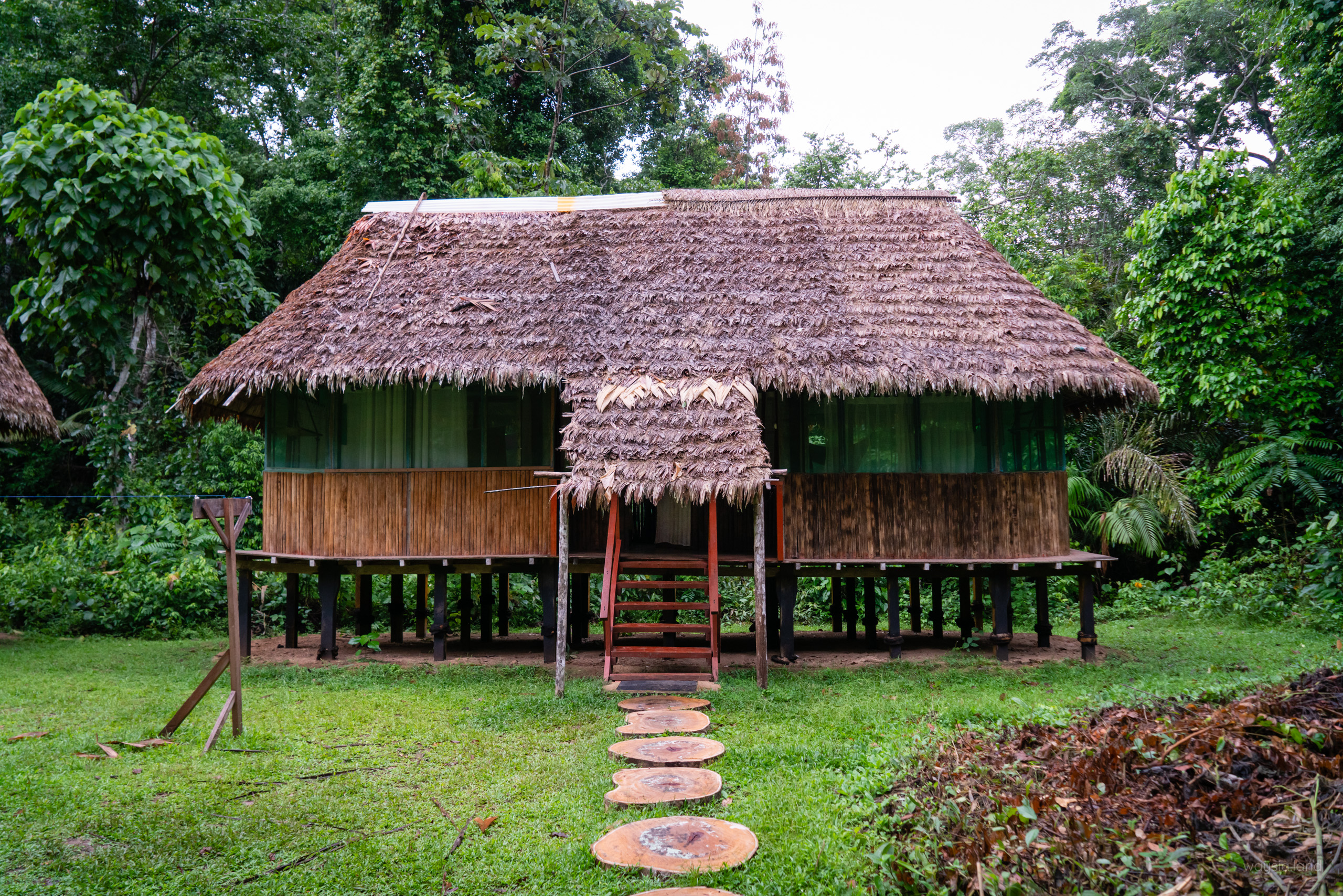
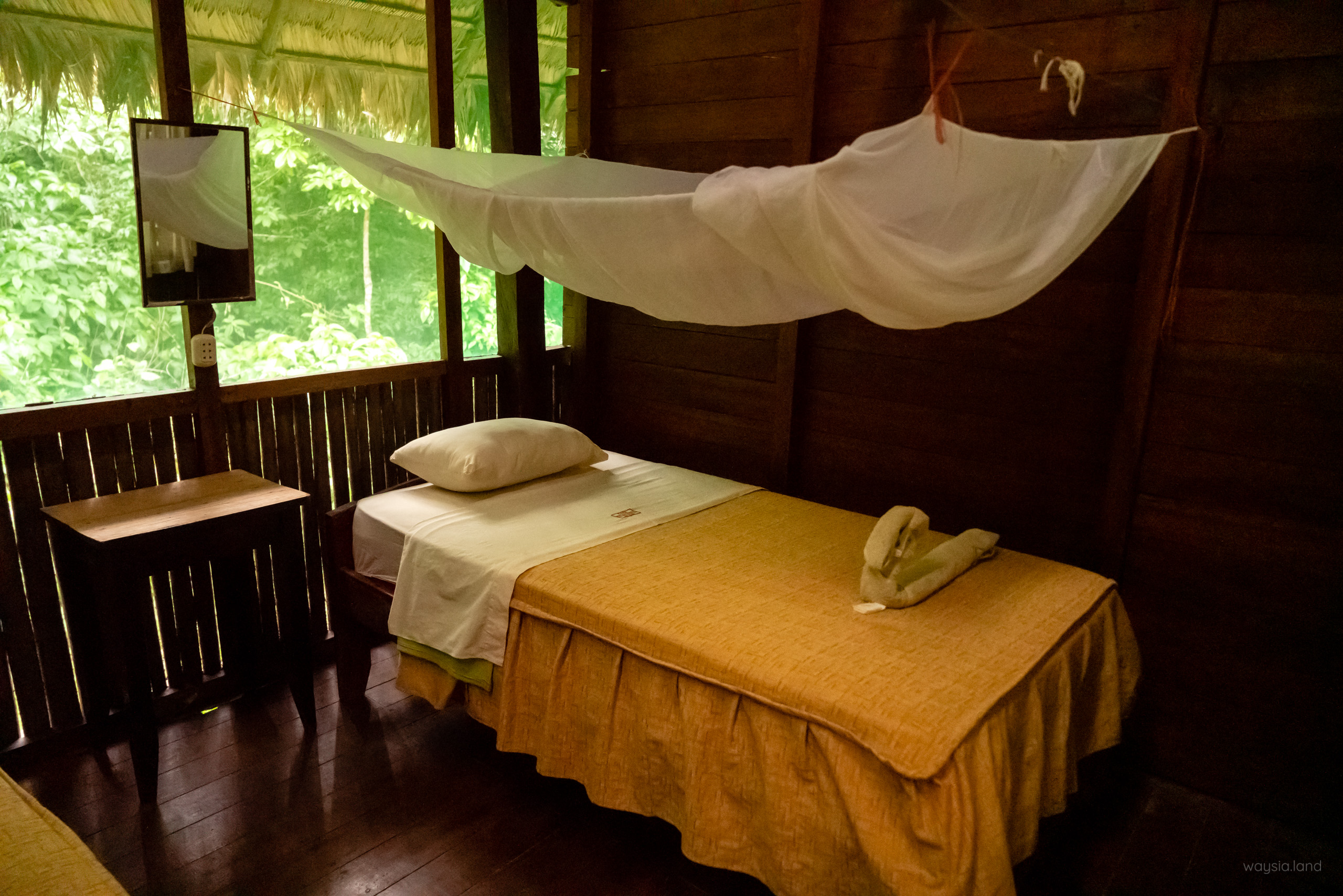
Manu Amazon Jungle Walk #1
Behind the lodge was a jungle trail. We could already see monkeys monkeying about without even stepping foot on the trail. At night is when some animals are the most active so the chance of sightings is high.
Due to the rain earlier in the day, the insects were out in force. The trail was roughly 1km but I’m pretty sure we barely made it 300m before needing to return back. Every few steps we would discover an insect hiding here and another insect hiding there. Buzzing about was the occasional firefly which I’d never seen before so that was quite a cool experience.
If not an insect then it was a plant or tree which had an interesting story to tell. All I remember is that you should avoid going to the toilet under a certain white coloured tree with nothing growing underneath it, a seemingly nice place to go. It’s probably best not to as a bunch of crazy ants will bite your ass. 🍑🐜
The key to spotting wildlife at night changes. Your torch is key and sounds are more important. In the dark, eyes can reflect back a very luminescent colour. It’s not universal but this is a good rule of thumb for the Amazon – bright red for a reptile (caiman) and bright green for a mammal (jaguar). That’s not to say that every green reflection is a mammal though. A simple sweep of the area with your torch could instantly reveal something hiding in the dark. A weak torch around 50-100 lumens (like the one I had) is extremely poor and visibility will likely be a couple of metres only. Good enough for walking but not for spotting anything that isn’t right next to your face.
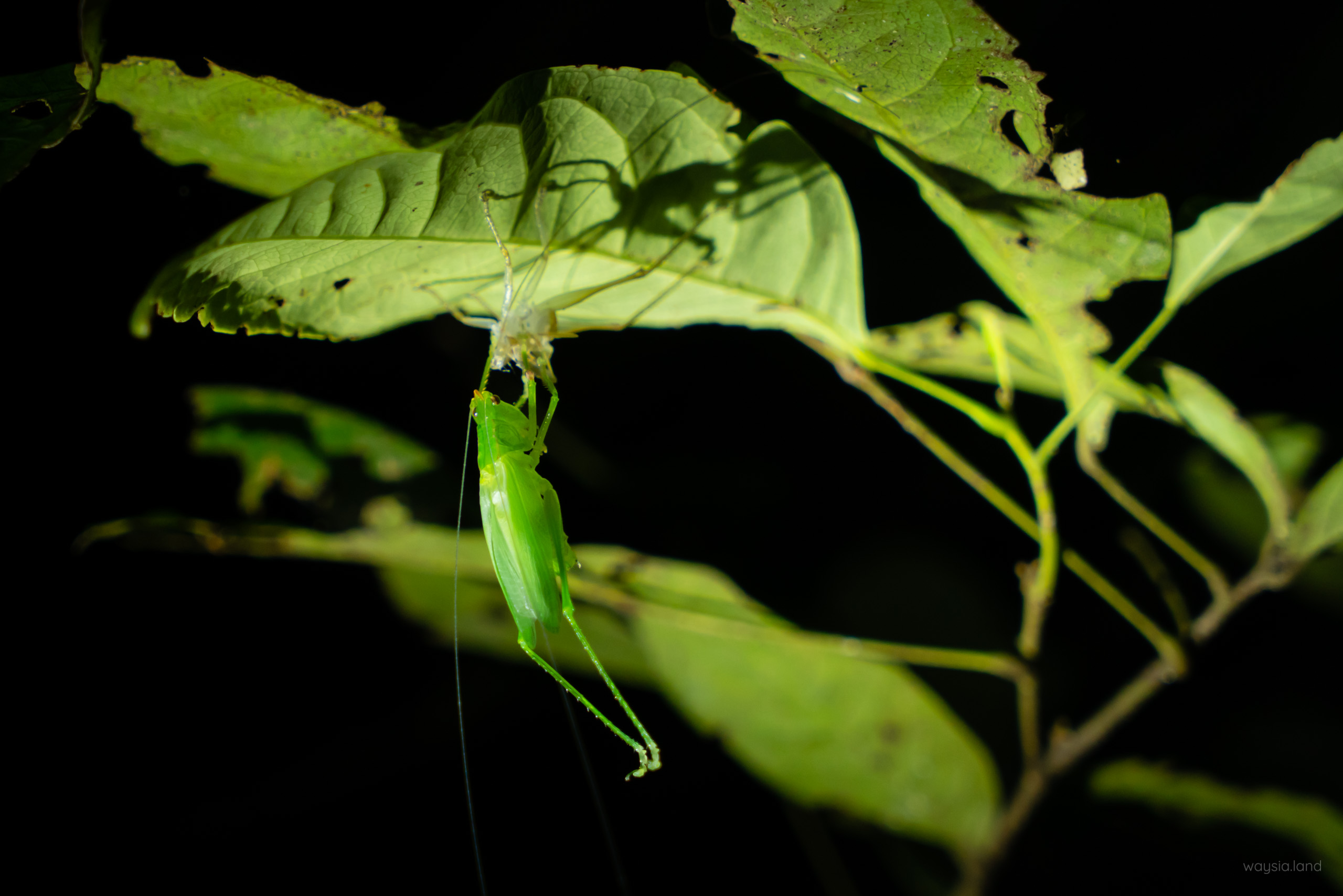
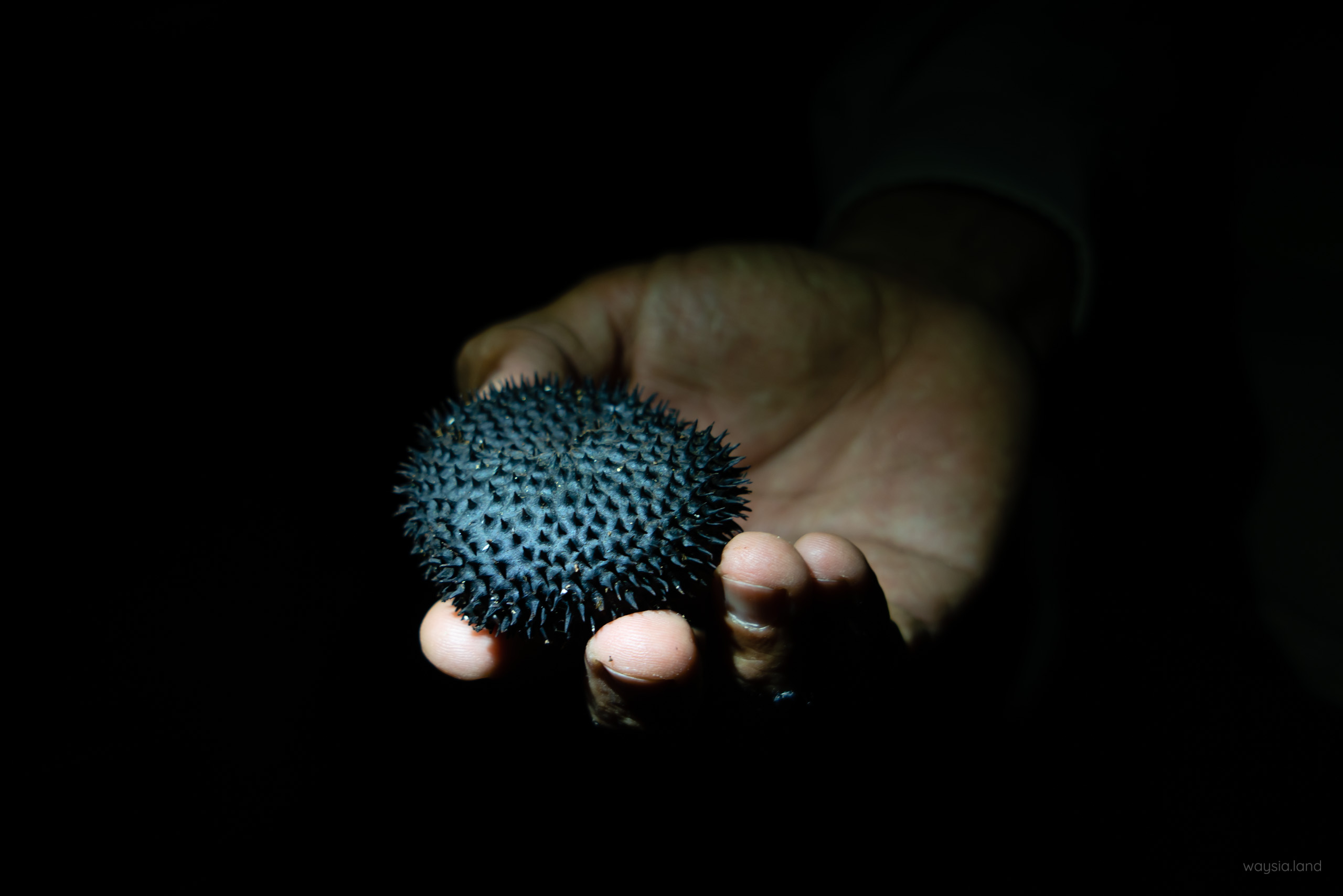
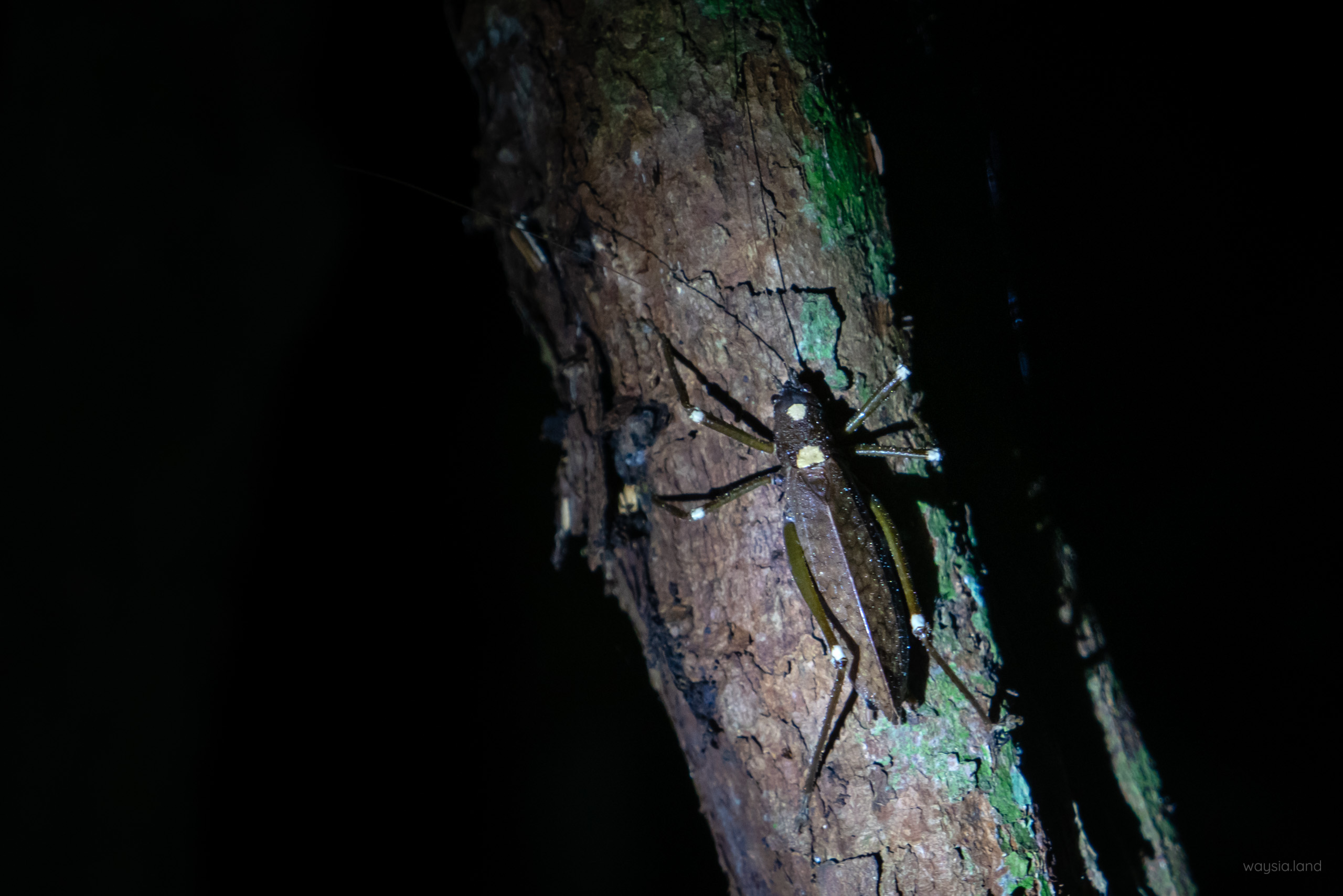
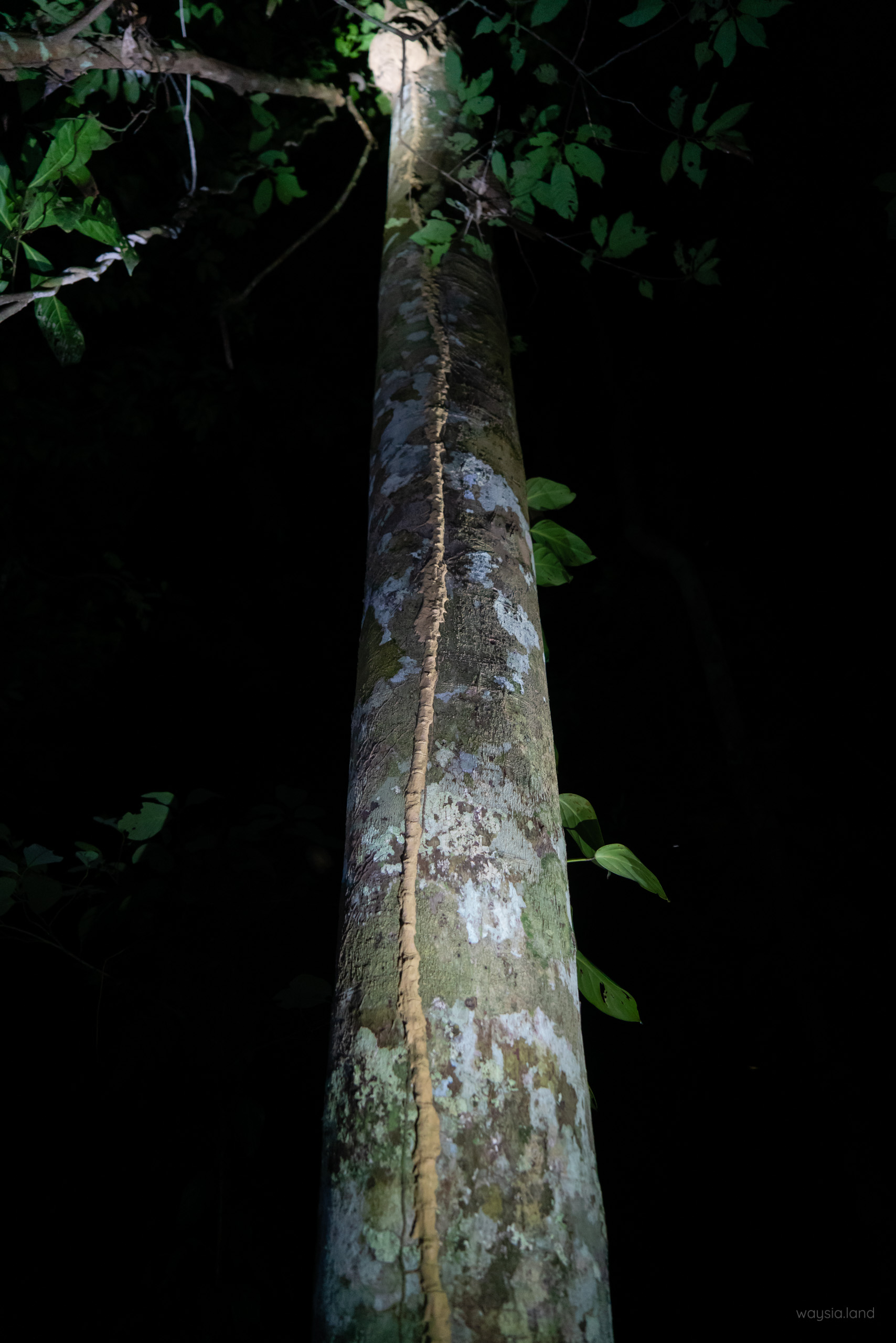
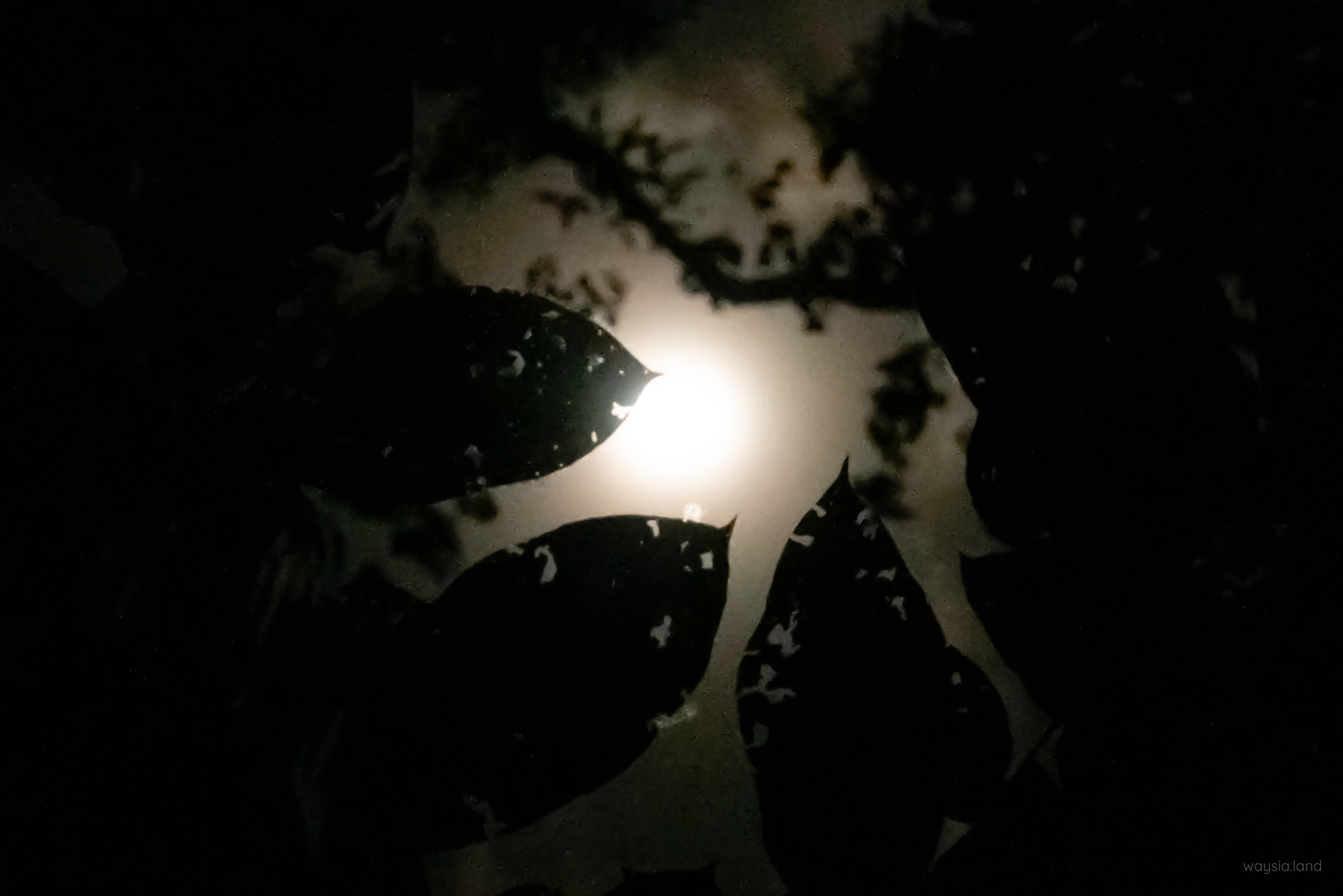
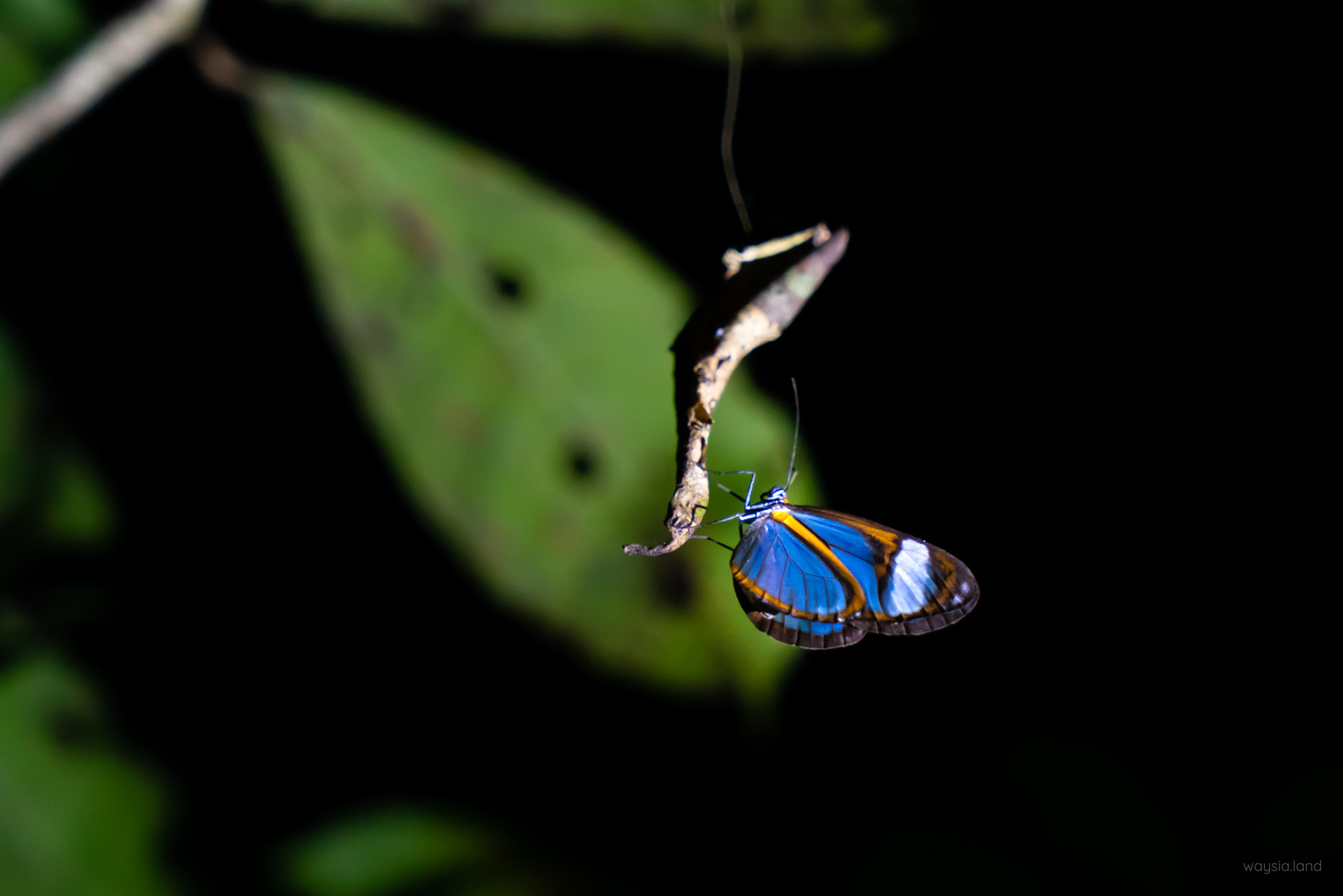
Manu Amazon – Day 3 – Giant Otter Day?
In today’s search for wildlife, today would have us cruising around more of Rio Manu, going up to a lookout and walking along jungle trails in the daylight. We eventually arrived at the trailhead which looked basically like just a gap in the trees. The rain had partially eroded the ‘staircase’ and one of the helpers was helping to carve it out again as the muddy clay was slippery.
We sat in the boat until he finished.
The life.
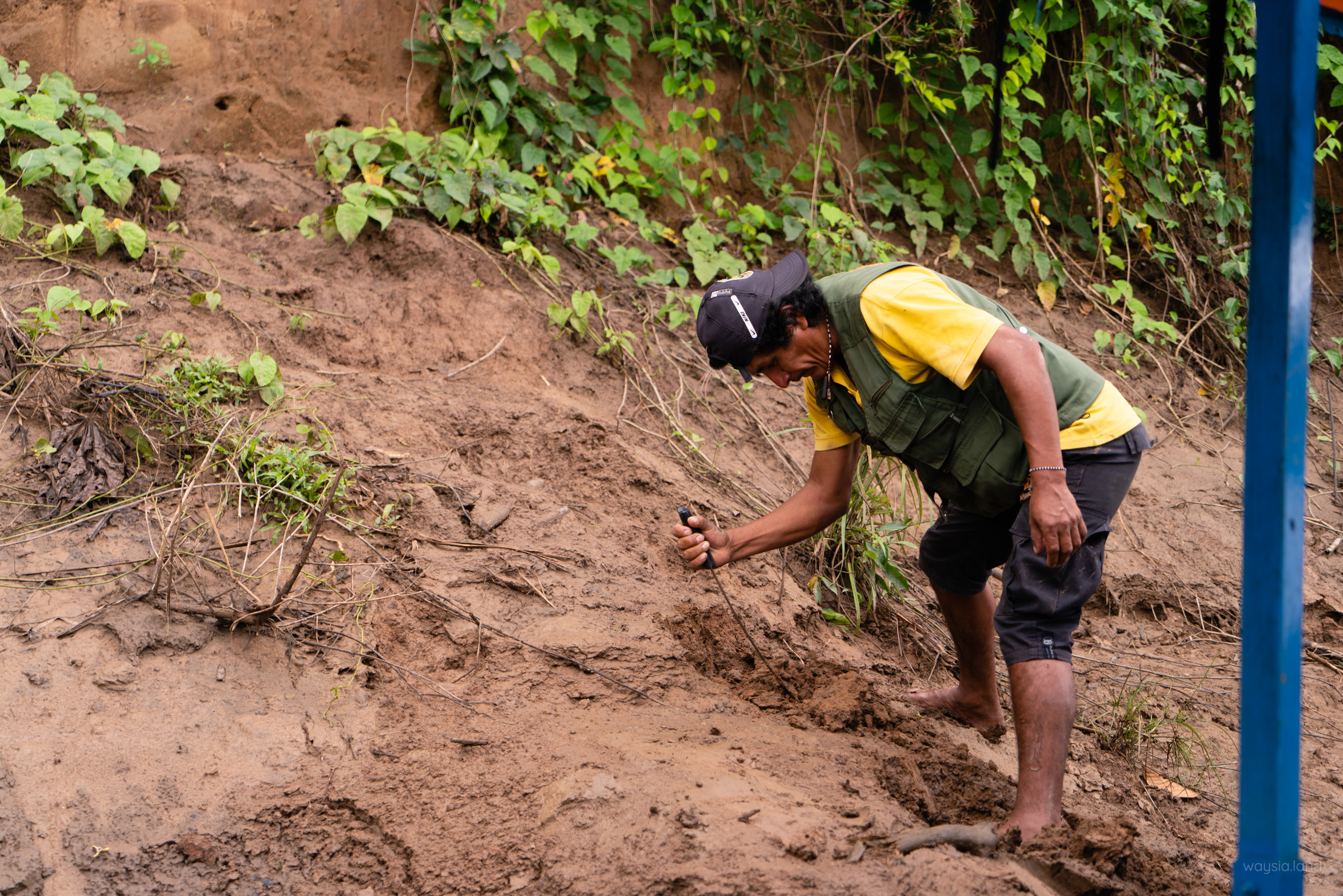
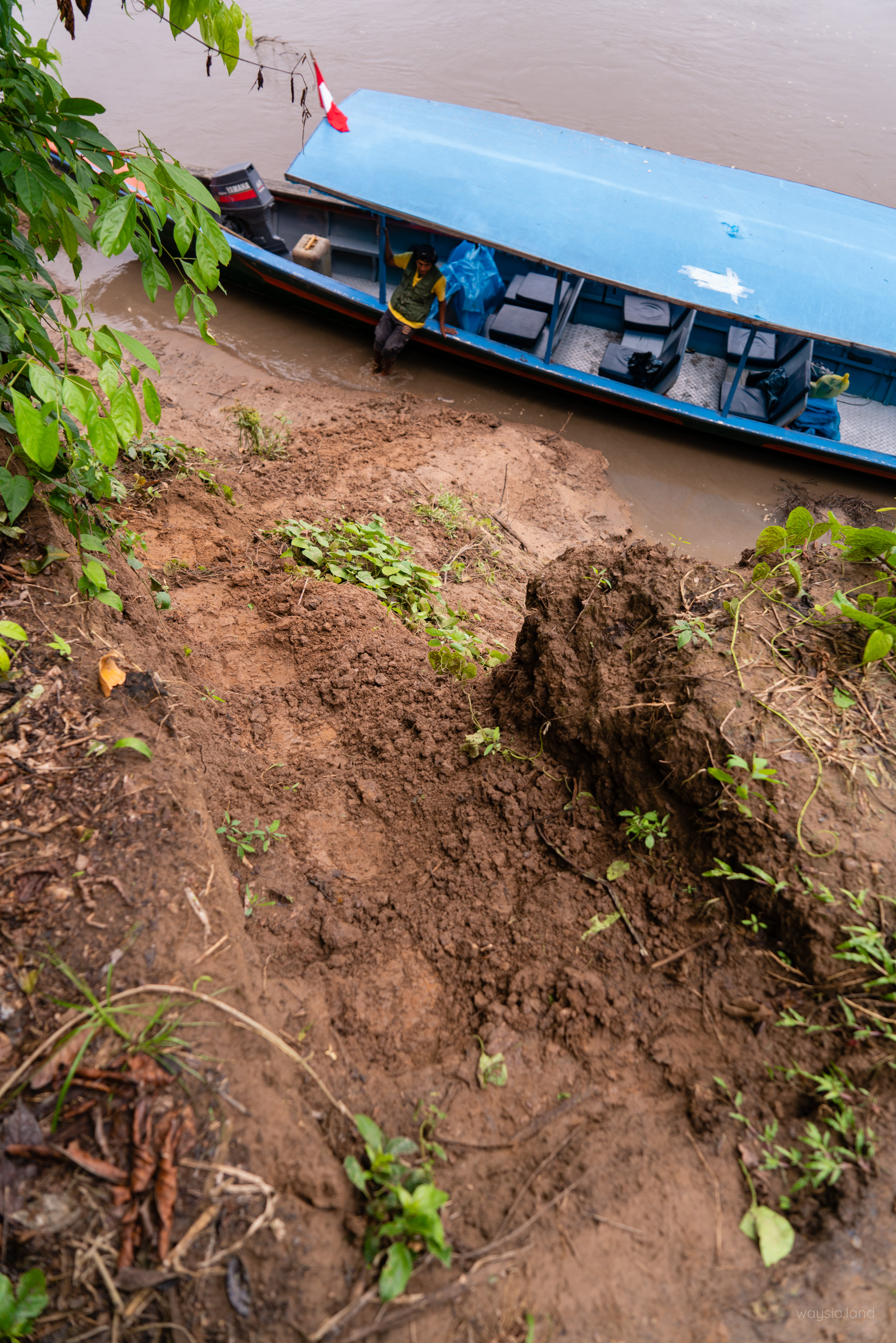
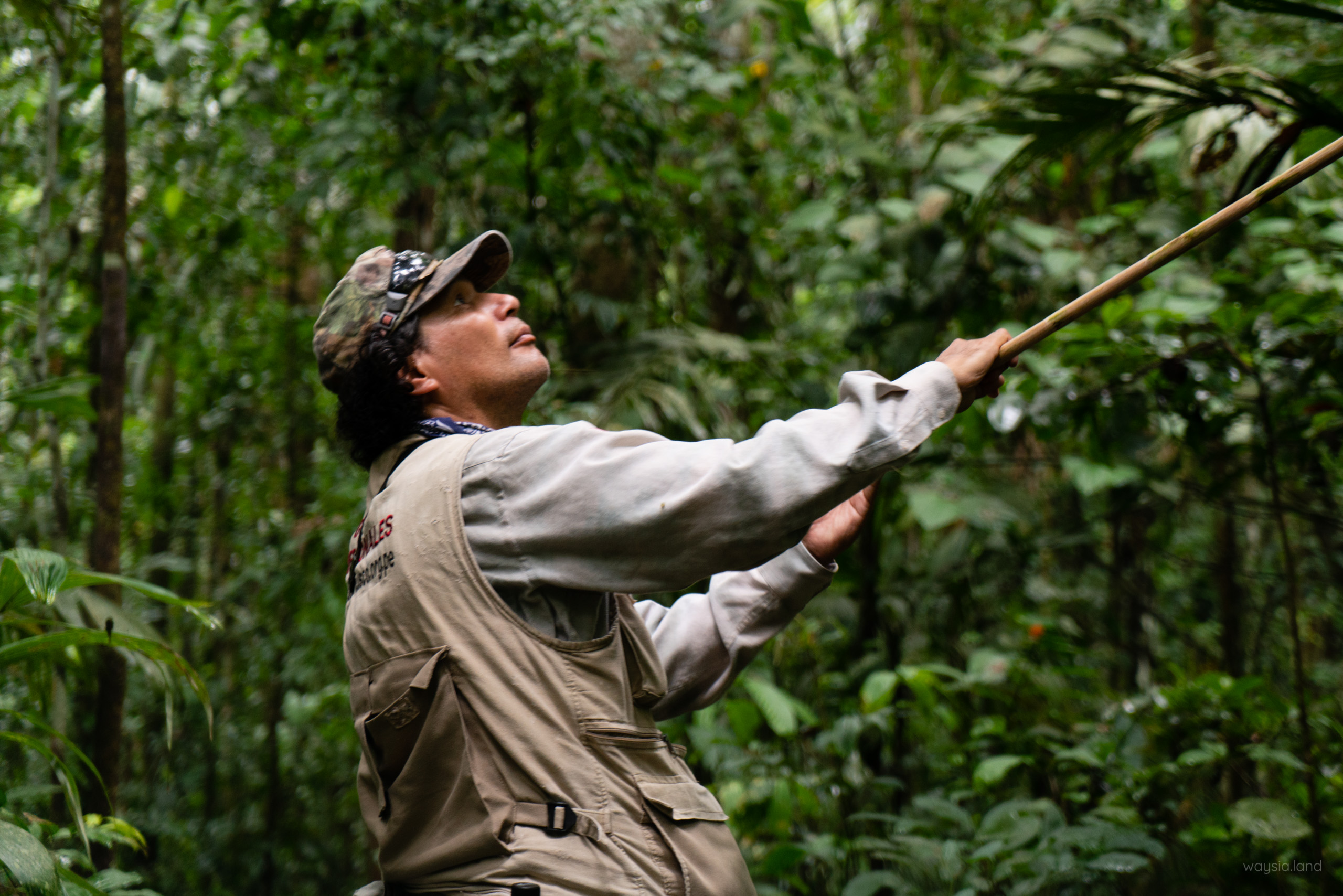
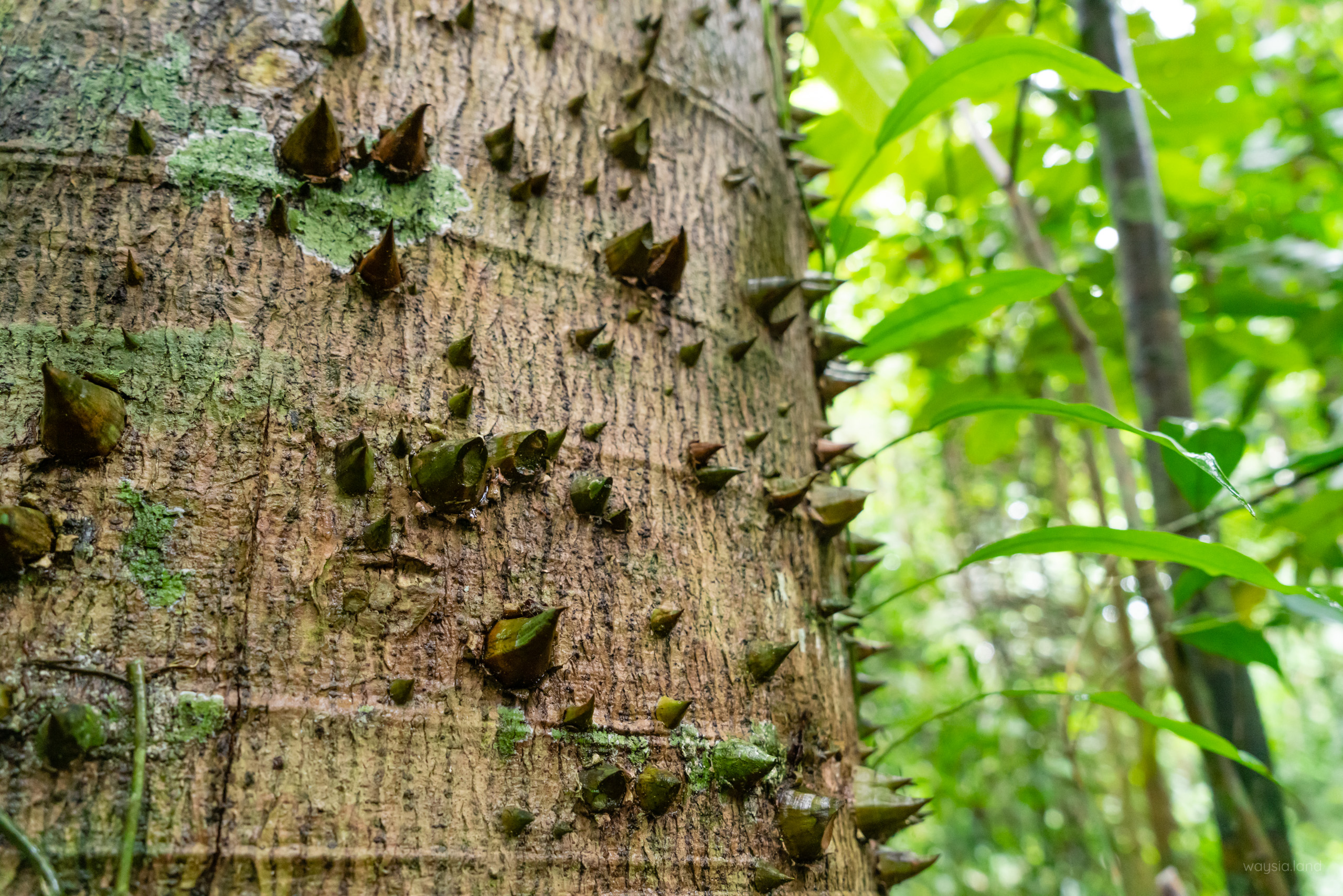
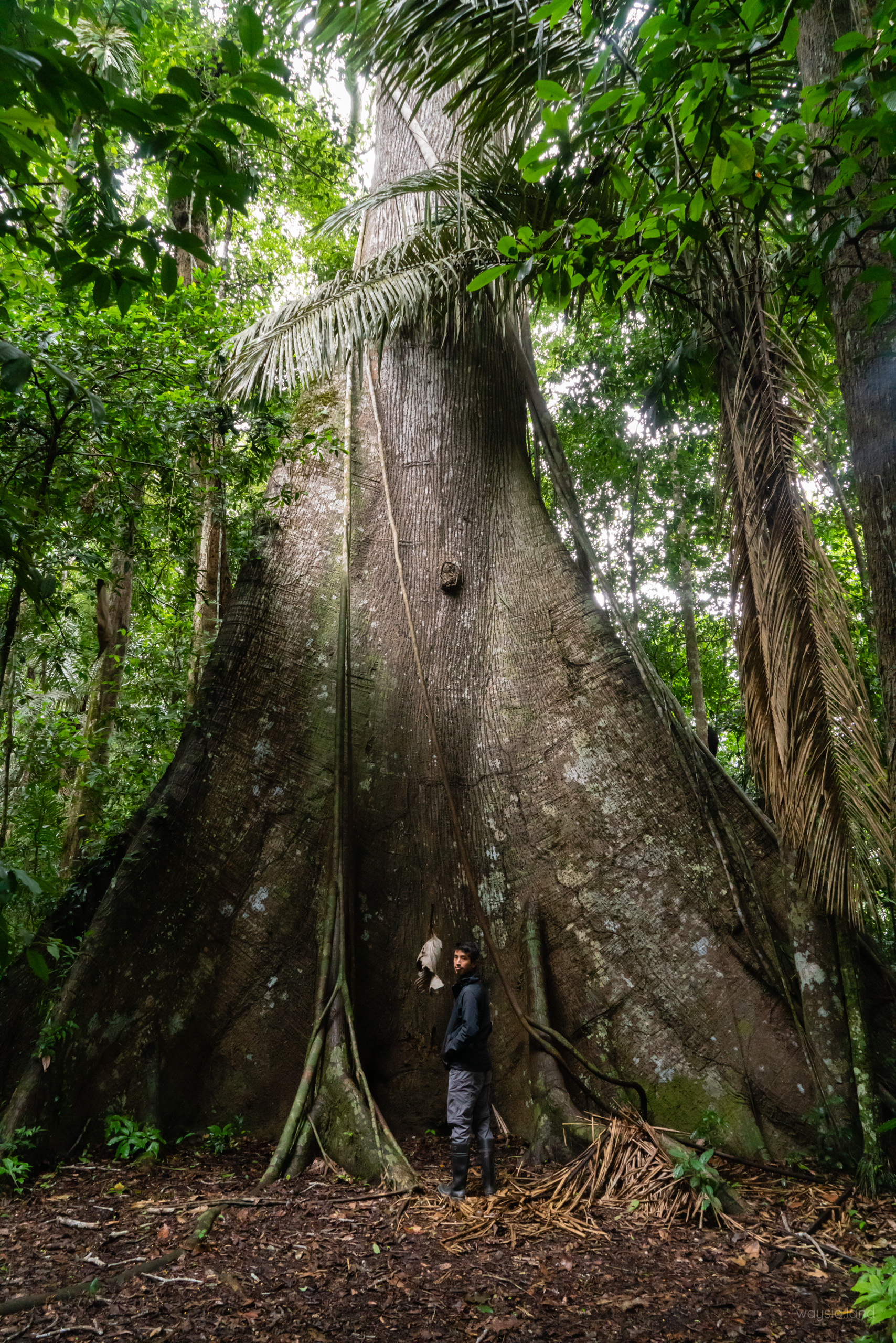
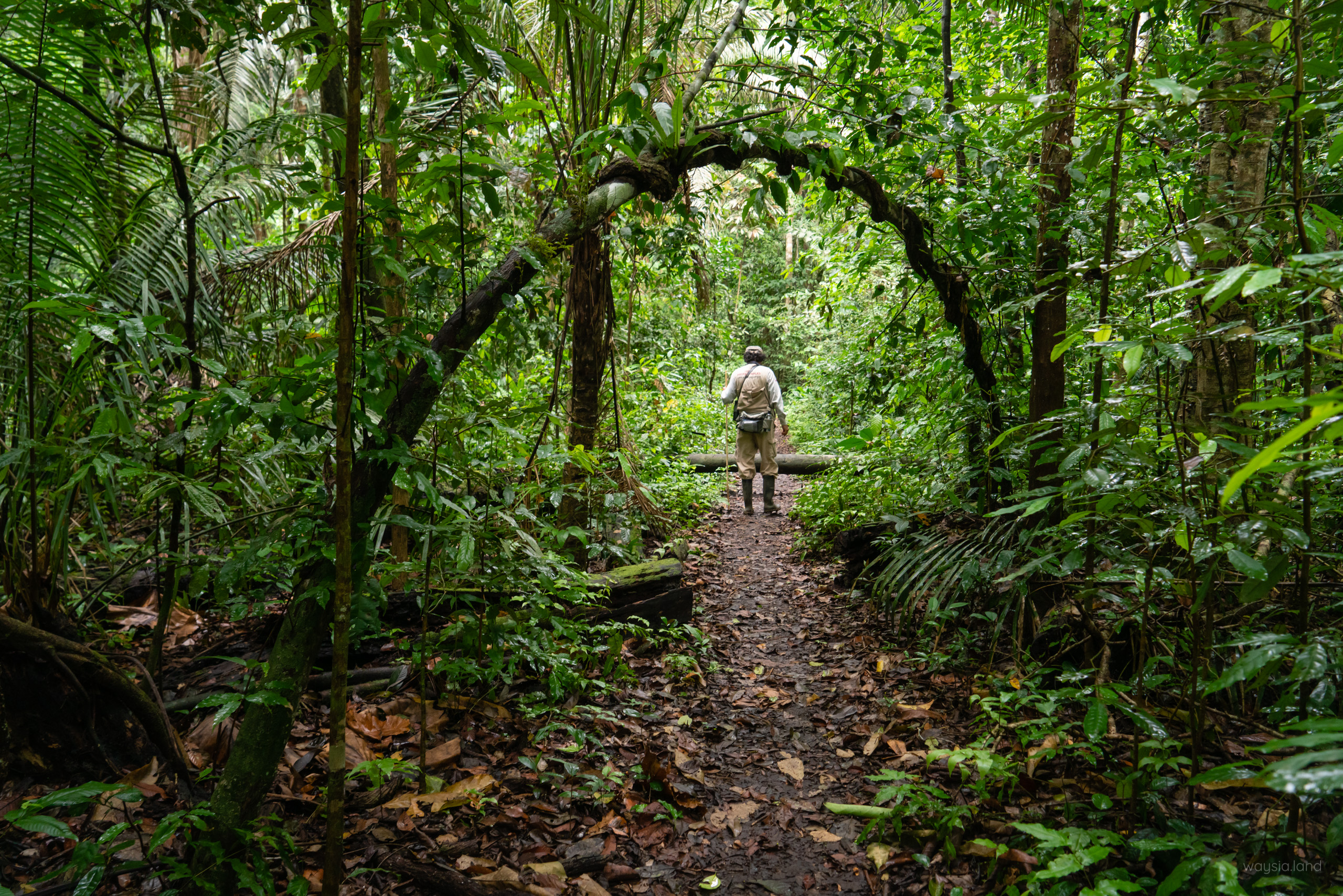
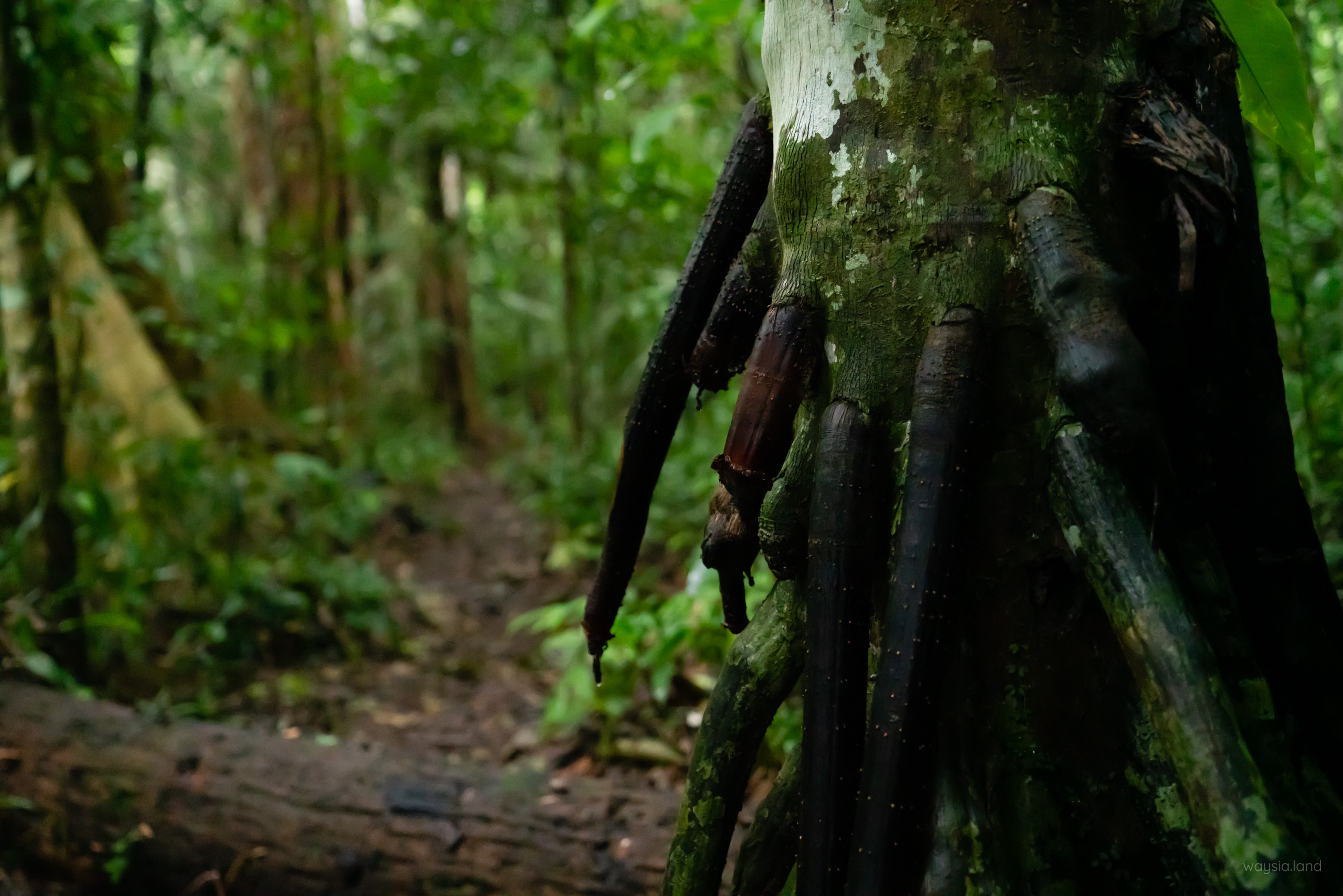
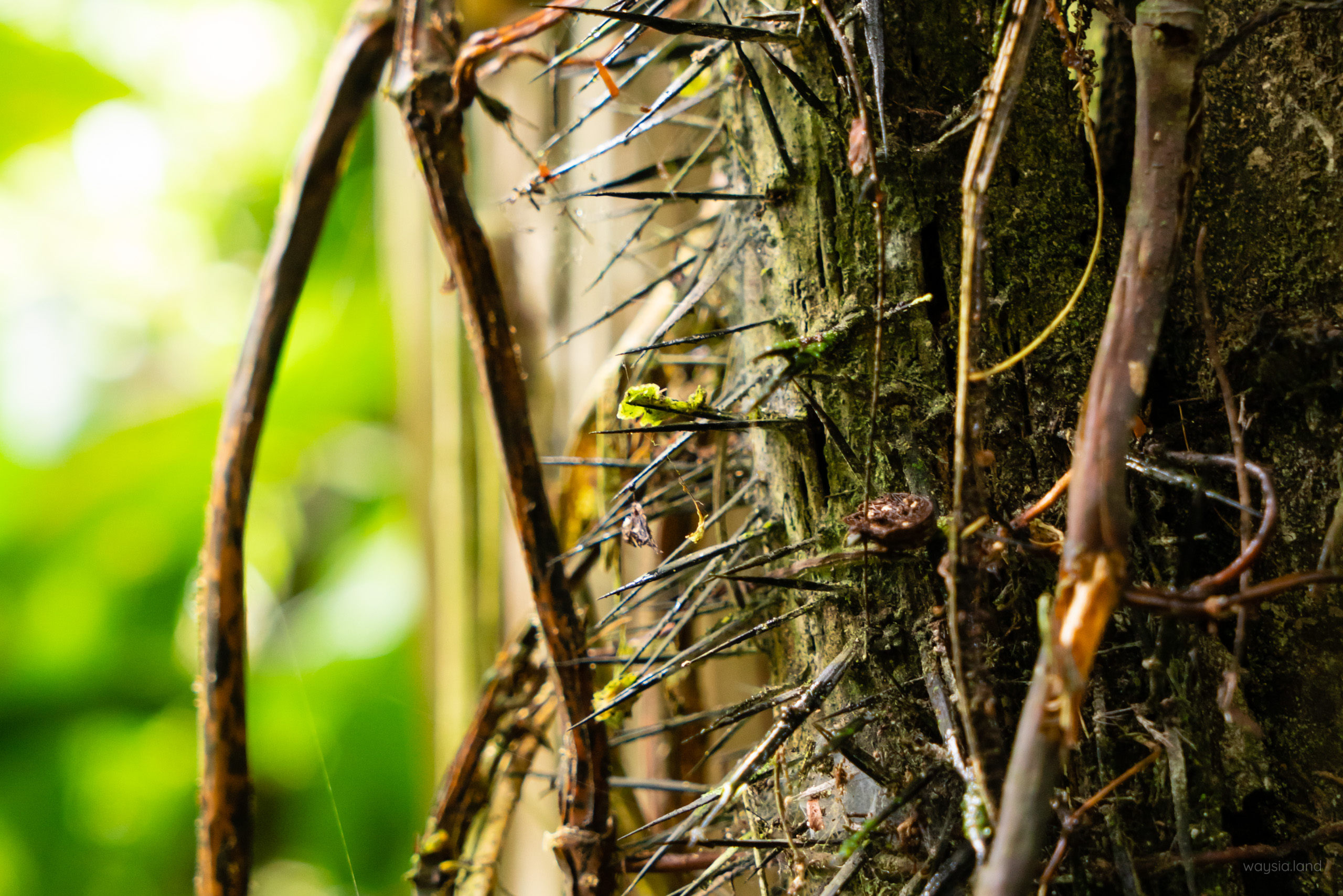
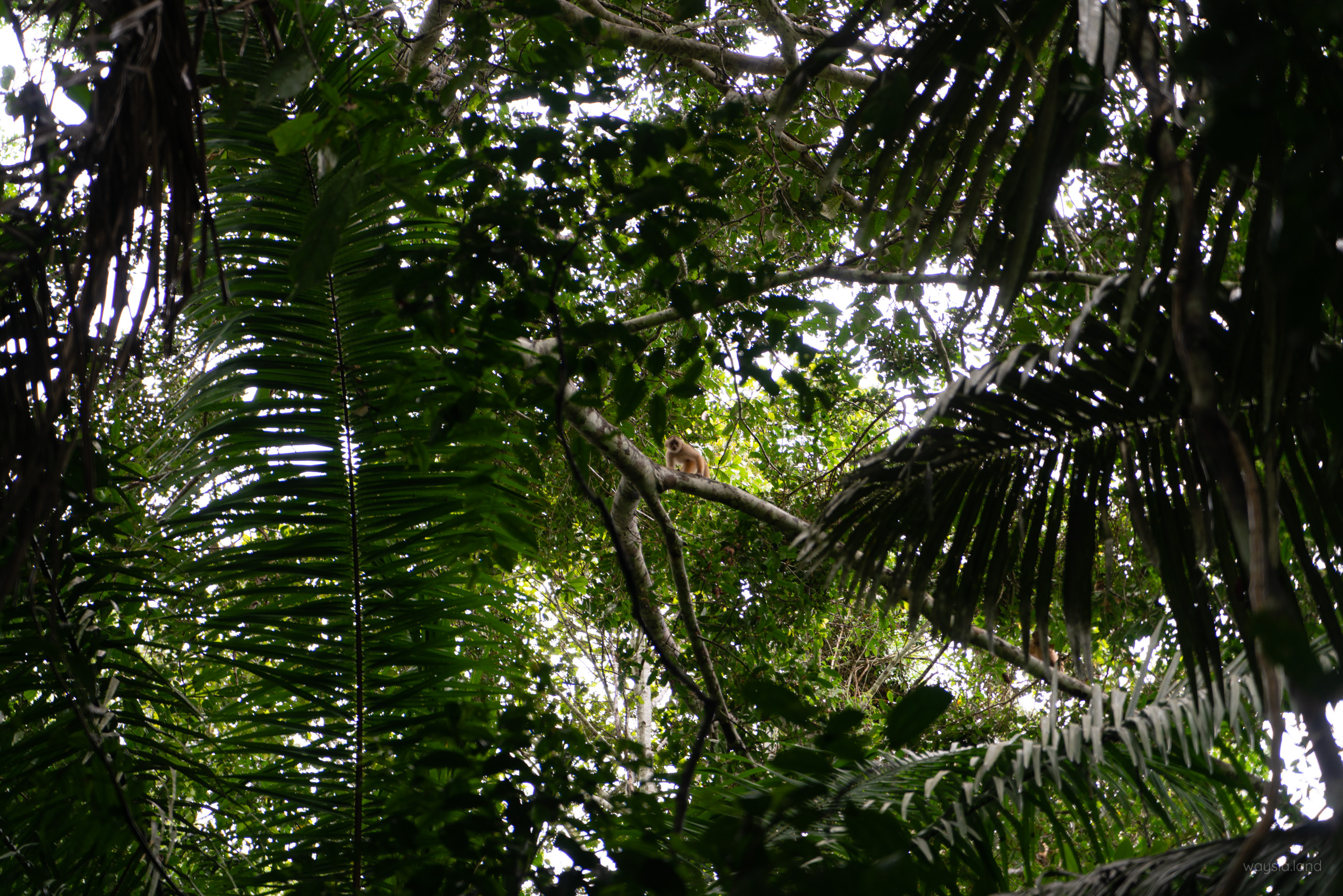
We climbed up the observatory overlooking the Otoronga Oxbow Lake which is a breeding ground for the Giant Otters. Lo and behold, not but a few minutes later, off in the distance there was a family of Giant Otters swimming! They didn’t look very ‘giant’ from where we were but we had the beast scope set up on the platform.
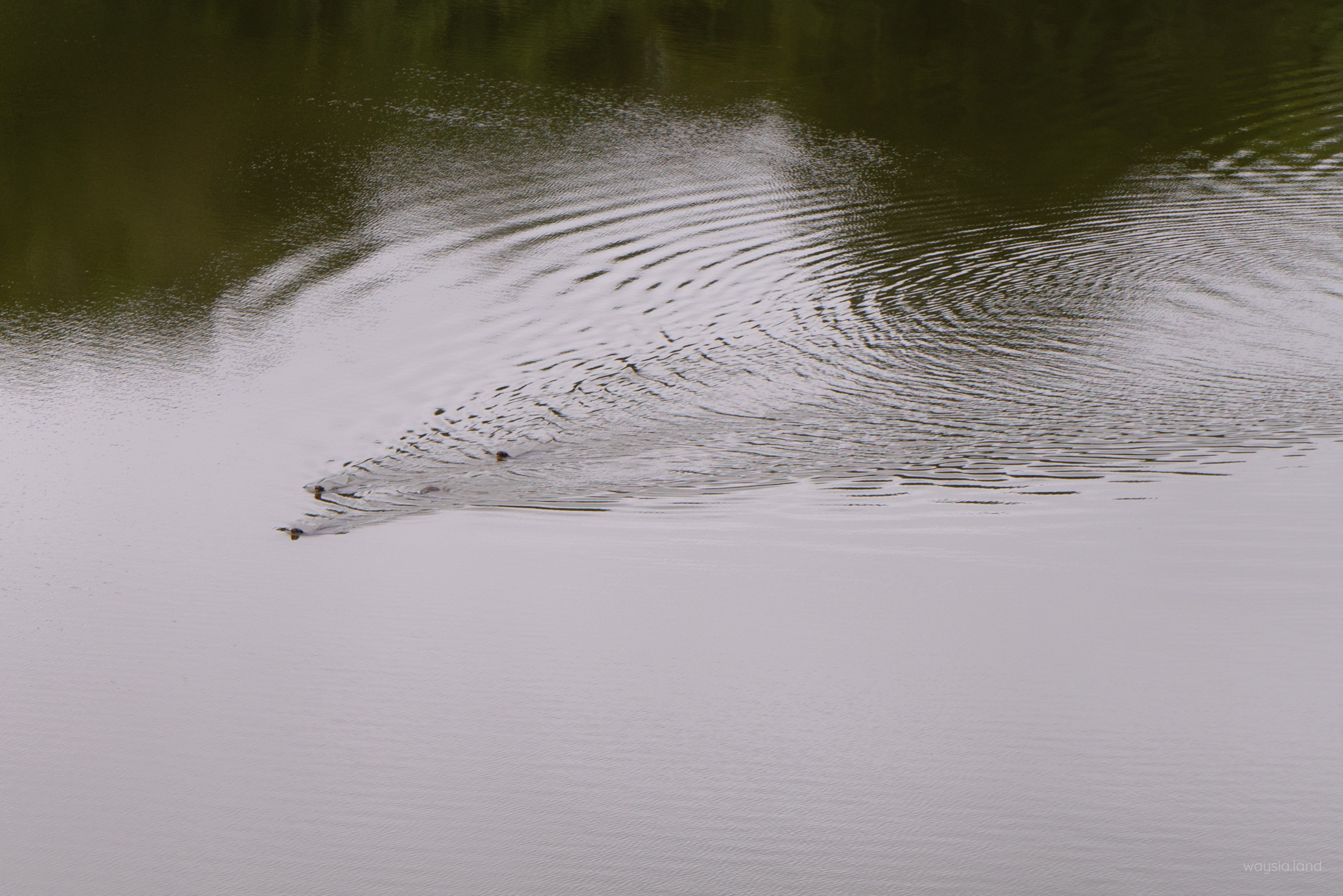
Giant Otters are endangered with the world’s population being an estimate 5000 individuals. In the area of Manu it’s believed to be only around 120-180 (2008 survey).
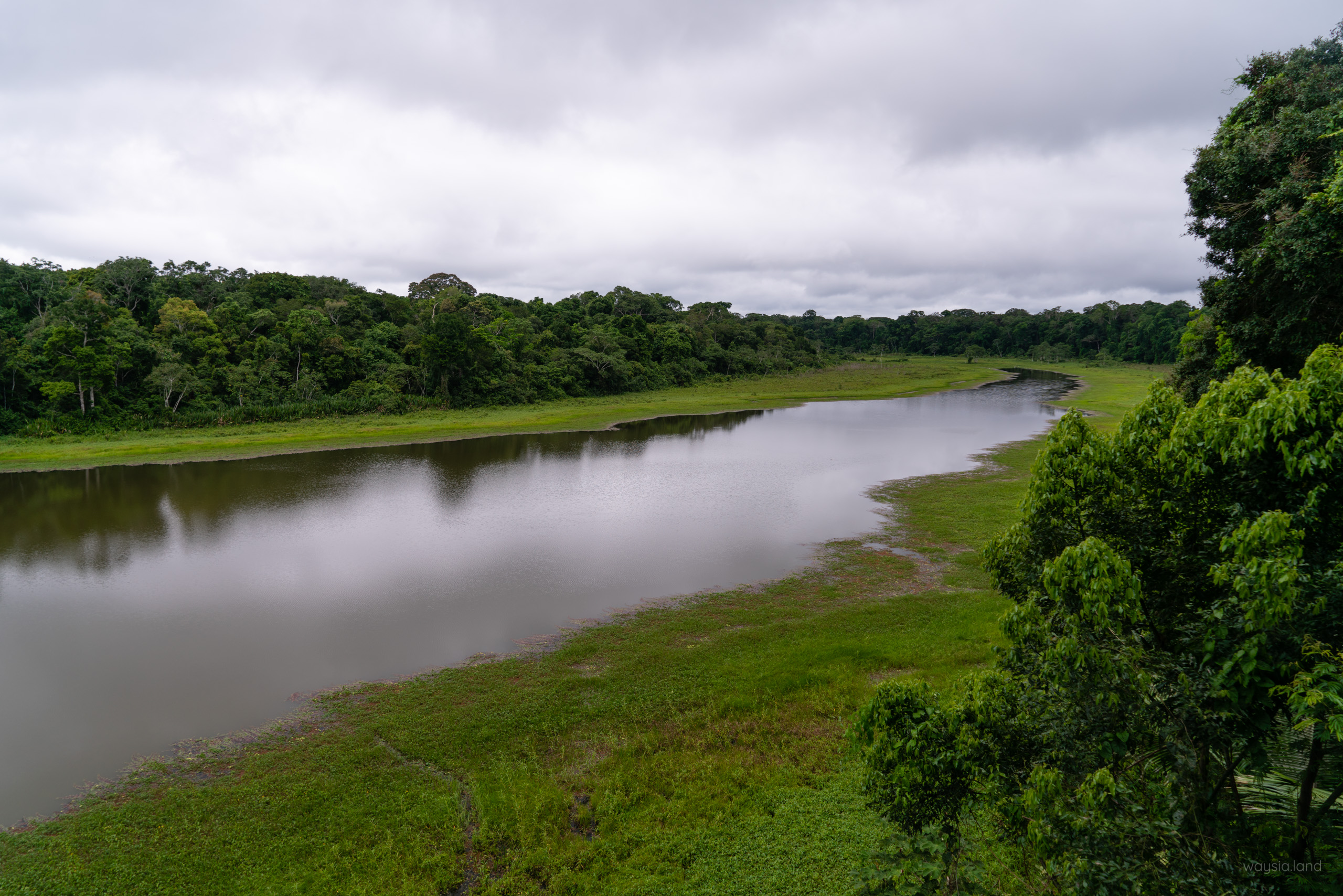
See that trail leading from the lake to the bottom of the photo? Anaconda trail!
As much as I hate snakes, if there’s anything I want to see it’s an anaconda. Probably in no small part due to growing up watching the 1997 movie Anaconda.
Unfortunately, our guide hadn’t seen one in years and sightings were extremely rare. Still, I had hopes of seeing one.
It started raining and quite heavily at that so we legged it back to the boat. It cut the day short unfortunately, you can’t see anything and animals are in hiding anyway.
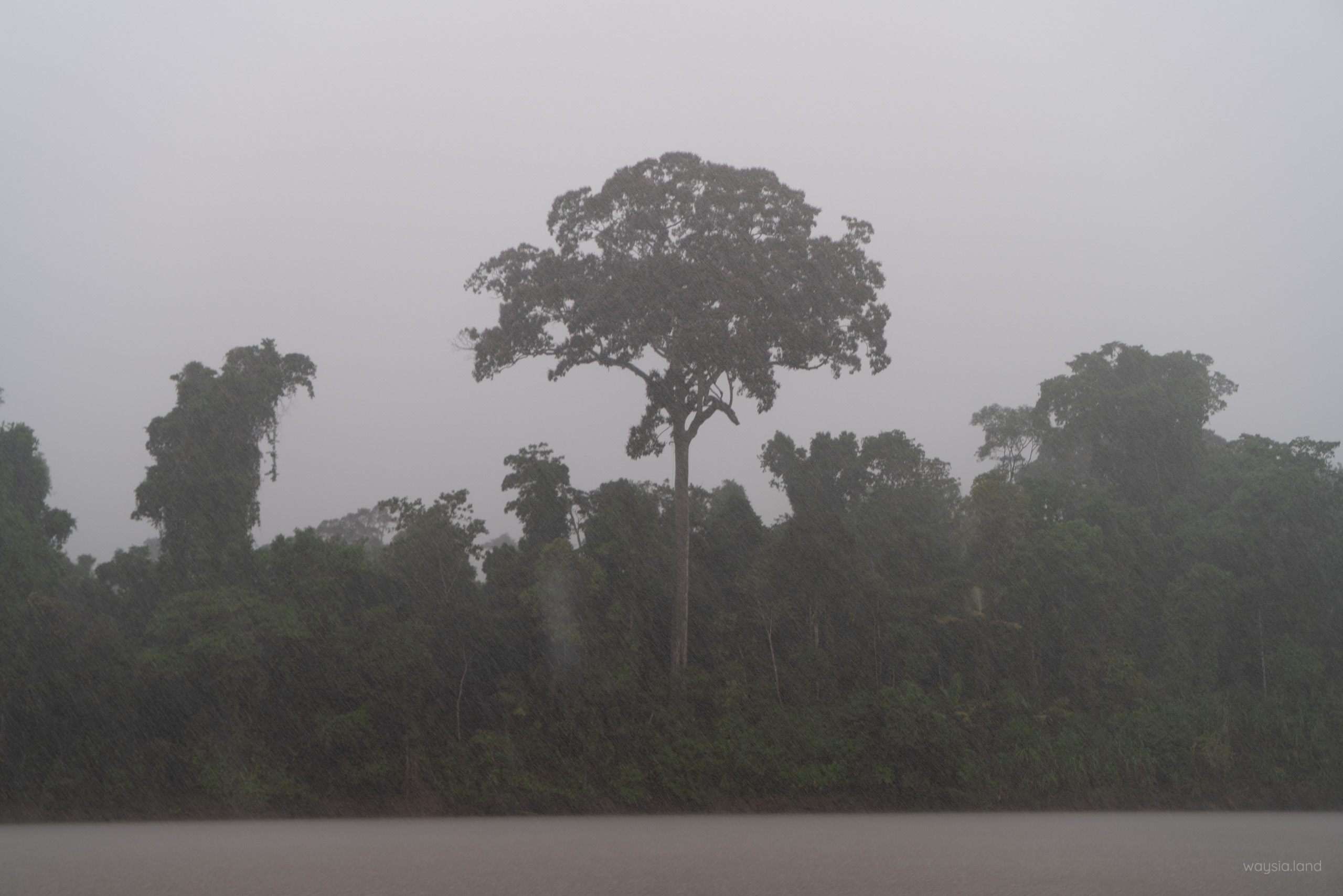
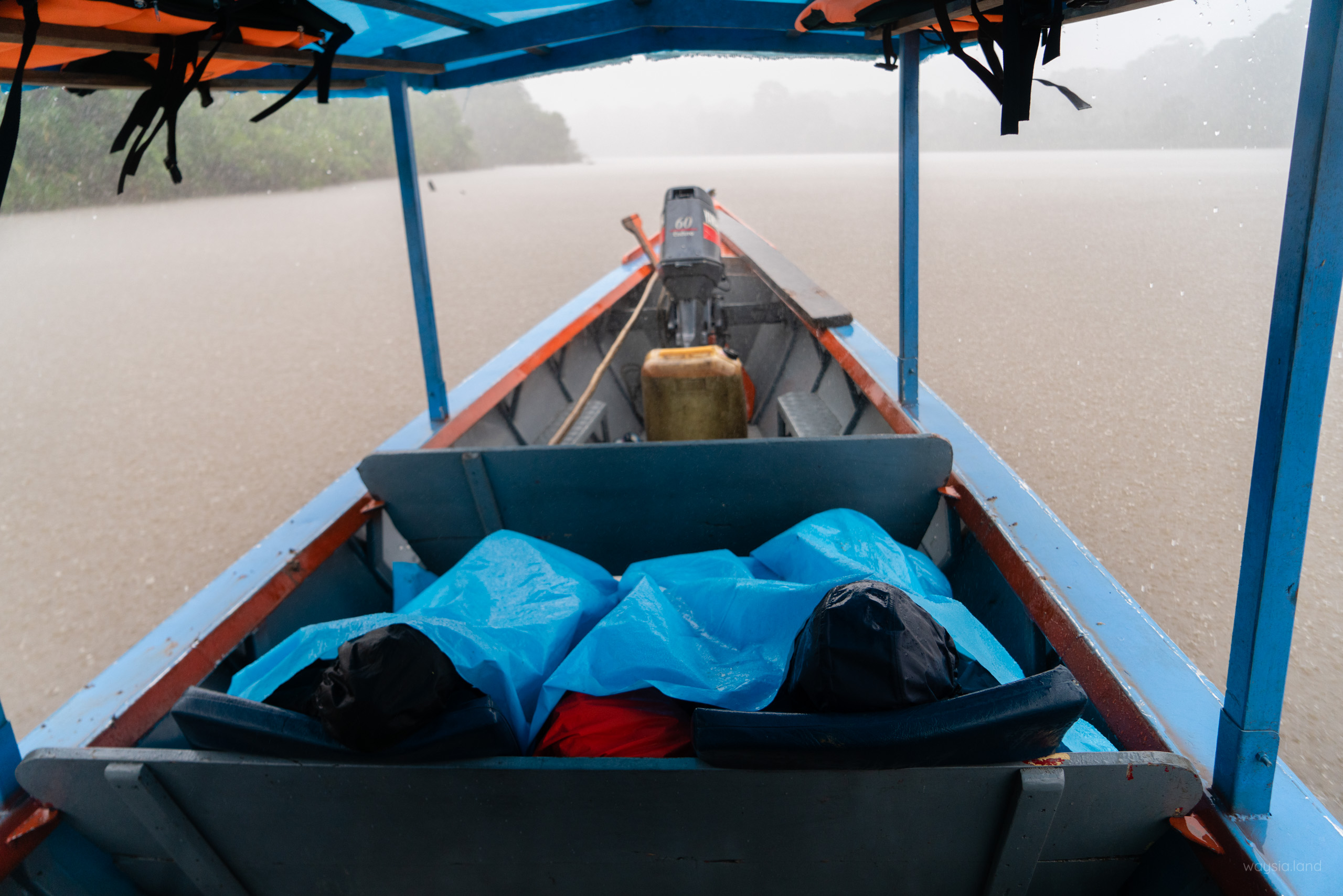
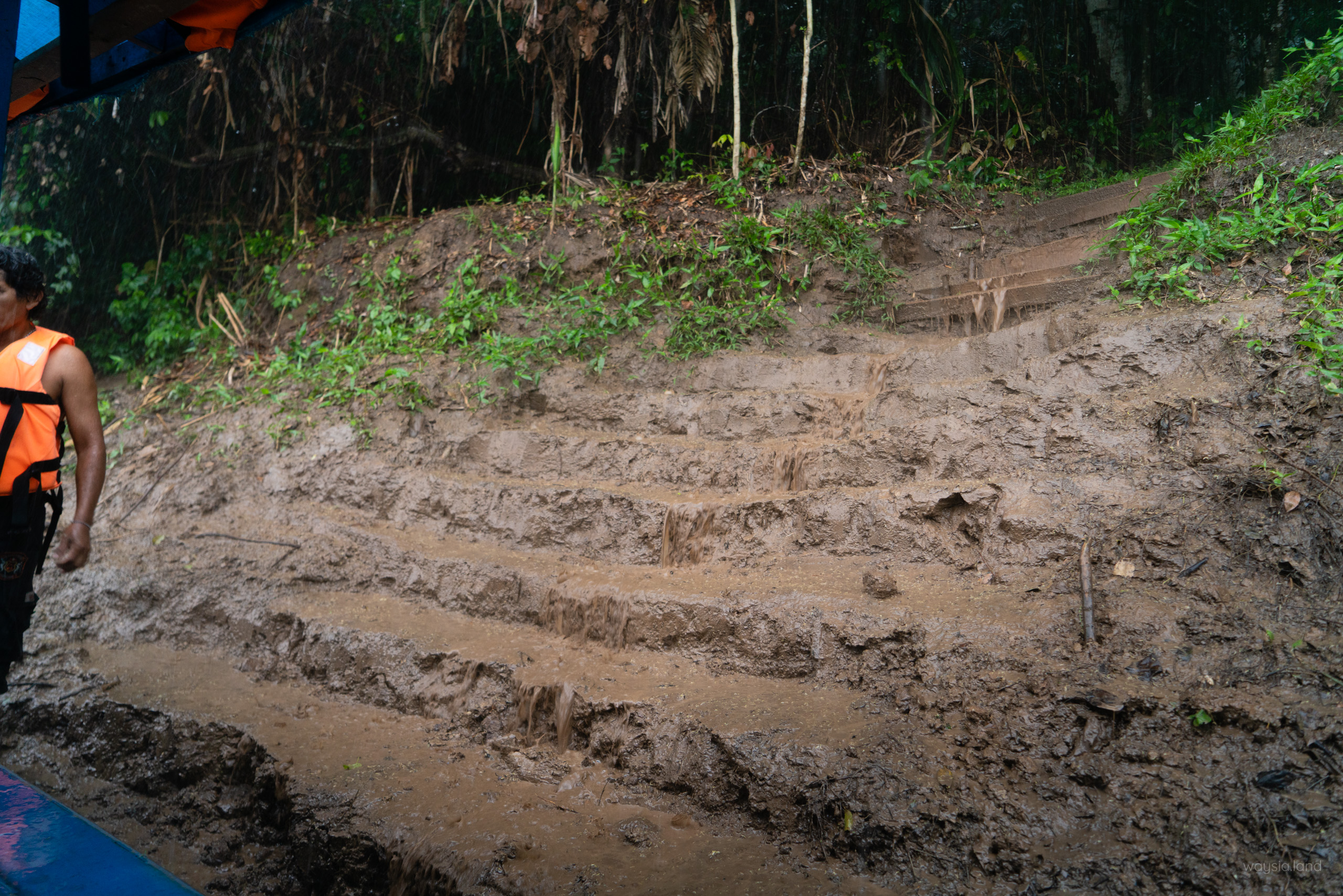
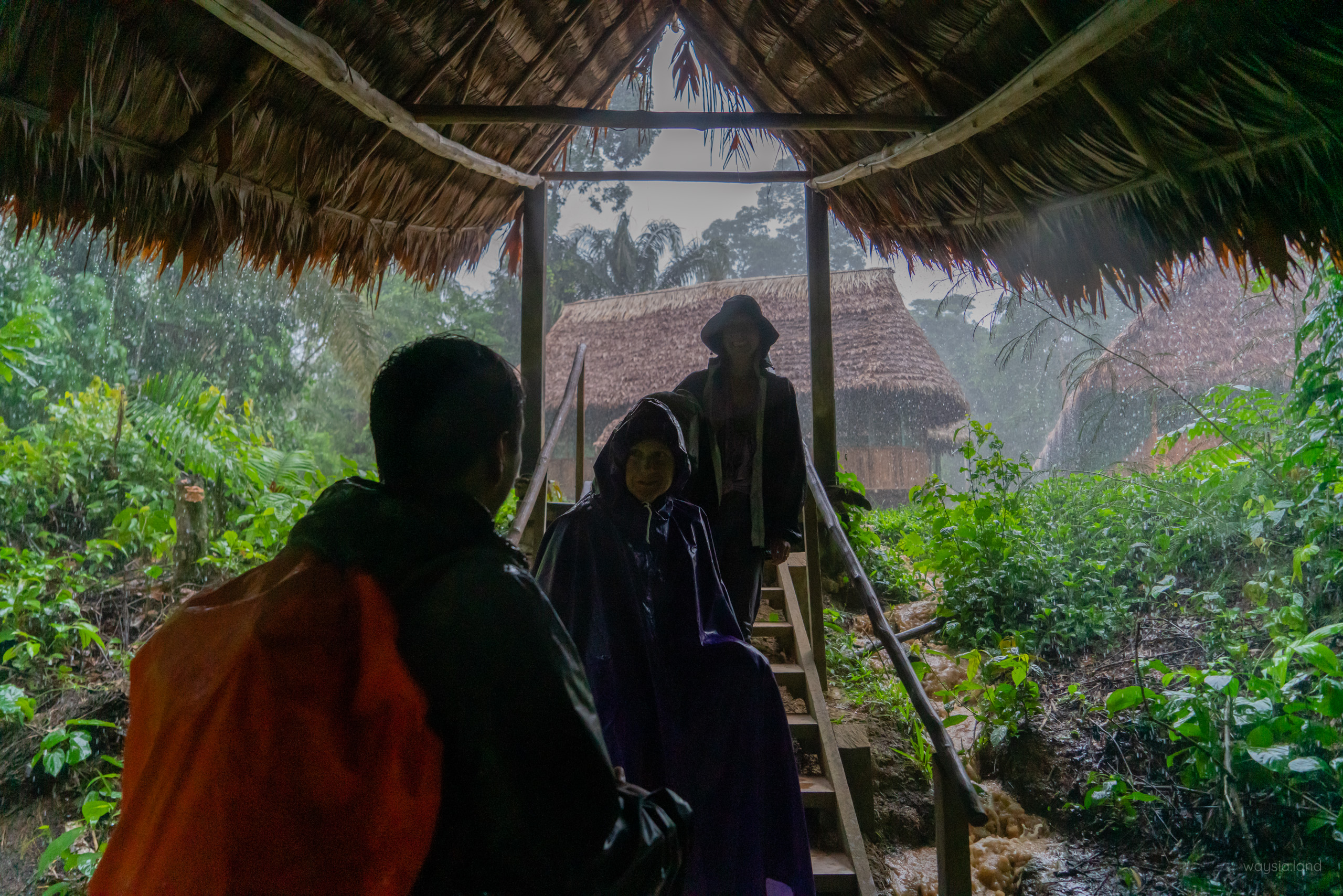
As part of staying in Casa Matsieguenka, we were given a brief insight into the local way of life. In particular some background on their archery technique and how they construct the bows and arrows. They actually had a small souvenir shop with locally constructed trinkets. This wasn’t the tourist shops of Cusco and if you want an authentic souvenir that isn’t mass-produced in Lima, here would be the place to buy it. I wanted to buy the bow and arrows which they were selling for the low low price of S/60 however, my travel duration, the size and materials that Australian customs would probably have a heart attack over wouldn’t make it easy so I had to say no. Sadface.
We also attempted to start a fire naturally by rubbing a stick into another piece of wood. This is much harder than it seems and Bear Grylls makes it look easy. By rubbing the stick between our hands, it would create enough friction between the pieces of wood to create a lot of heat. Once enough heat is generated embers are formed. From those embers, you could ignite tinder. I had no chance of doing it on my own, you simply tire out and don’t generate enough heat. We end up taking turns. When it got around to me again for the 3rd time, strength restored the embers appeared and what a sight! It was still rainy and wet outside so we were doing this indoors. If it was dry, I don’t know if you go all the way and start a proper campfire, I didn’t really see any signs of campfire spots.
In case you’re wondering, I didn’t do piranha fishing on this tour (common on Amazon tours). I ended up doing it elsewhere on my travels so no dramas there. Fishing in the Manu Reserve Zone is actually prohibited. The entire zone is super ecological friendly. I believe some tours might offer it where you fish in the Manu Cultural Zone (around the Madre De Dios river) and if that’s what you’re interested in then you should check with your operator as they may be able to accommodate even if it isn’t listed.
A shower to remember
There were 2 huts with multiple showers and toilets in each. The one close to my lodge was really good but that night I used the far one not wanting to wait. The experience was quite different, to say the least. Amongst dozens of other things clinging to the wall, there was a giant ant walking around the floor of my shower. It looked out to get me. I would shift about trying to get away from it but it would always try to run around puddles of water trying to reach me. wtf? Look away for more than a few seconds? Holy crap where did it go? What also didn’t help was just the previous night, Ricardo was telling us of huge bullet ants in the Amazon, who’s bite will feel like getting shot by a bullet. Not wanting to tempt fate for longer than necessary, I promptly finished up, gave my clothes hanging on the wall a very thorough inspection and gtfo. 🏃♂️💨
Manu Amazon – Day 4 – Matsieguenka Archery 101 and Giant Otters take #2
Our morning was delayed. We had planned to do some archery (which I was really looking forward to) before heading out but the weather was against us. We almost skipped it but our collective sad faces convinced Ricardo to still do it once it cleared up.
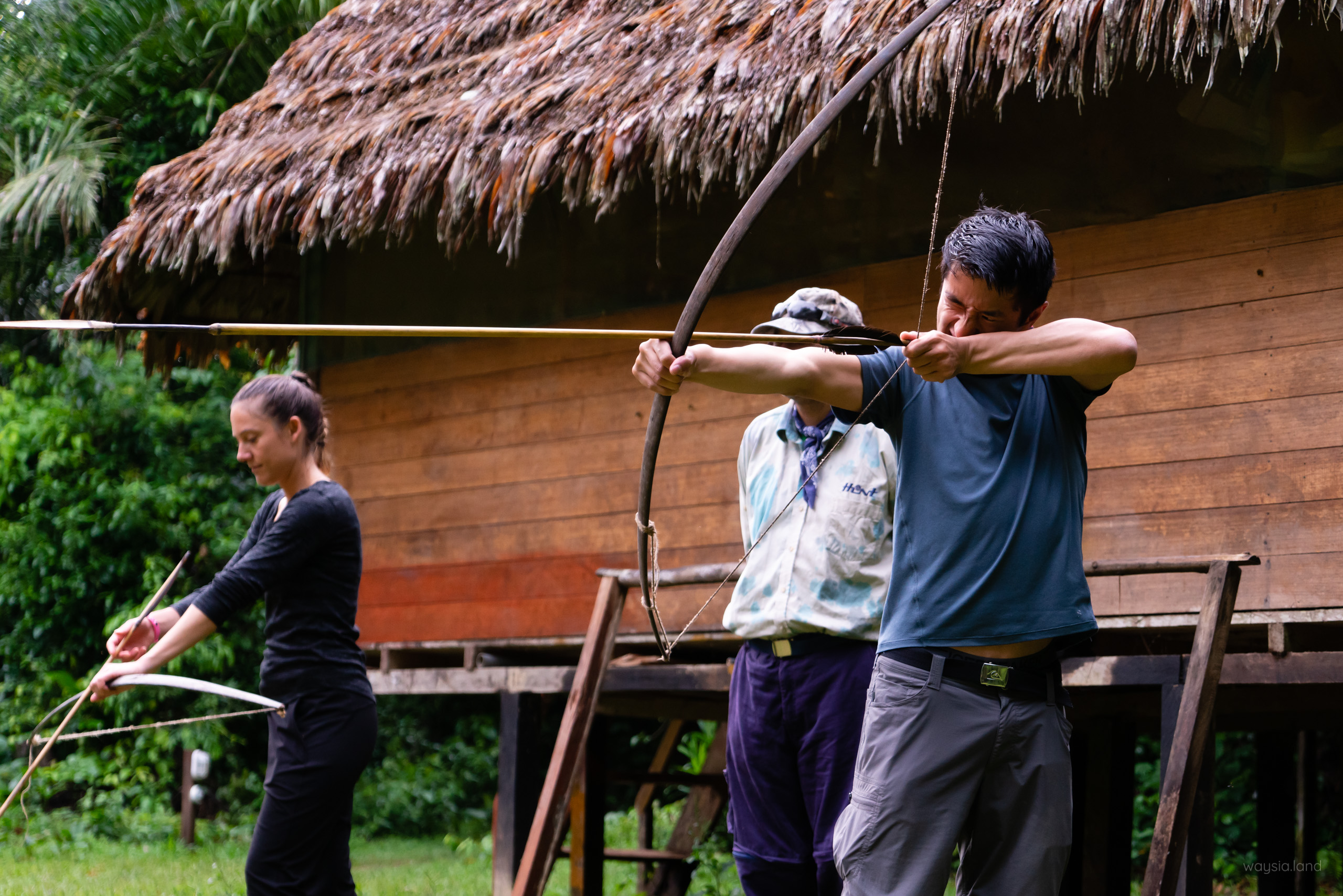
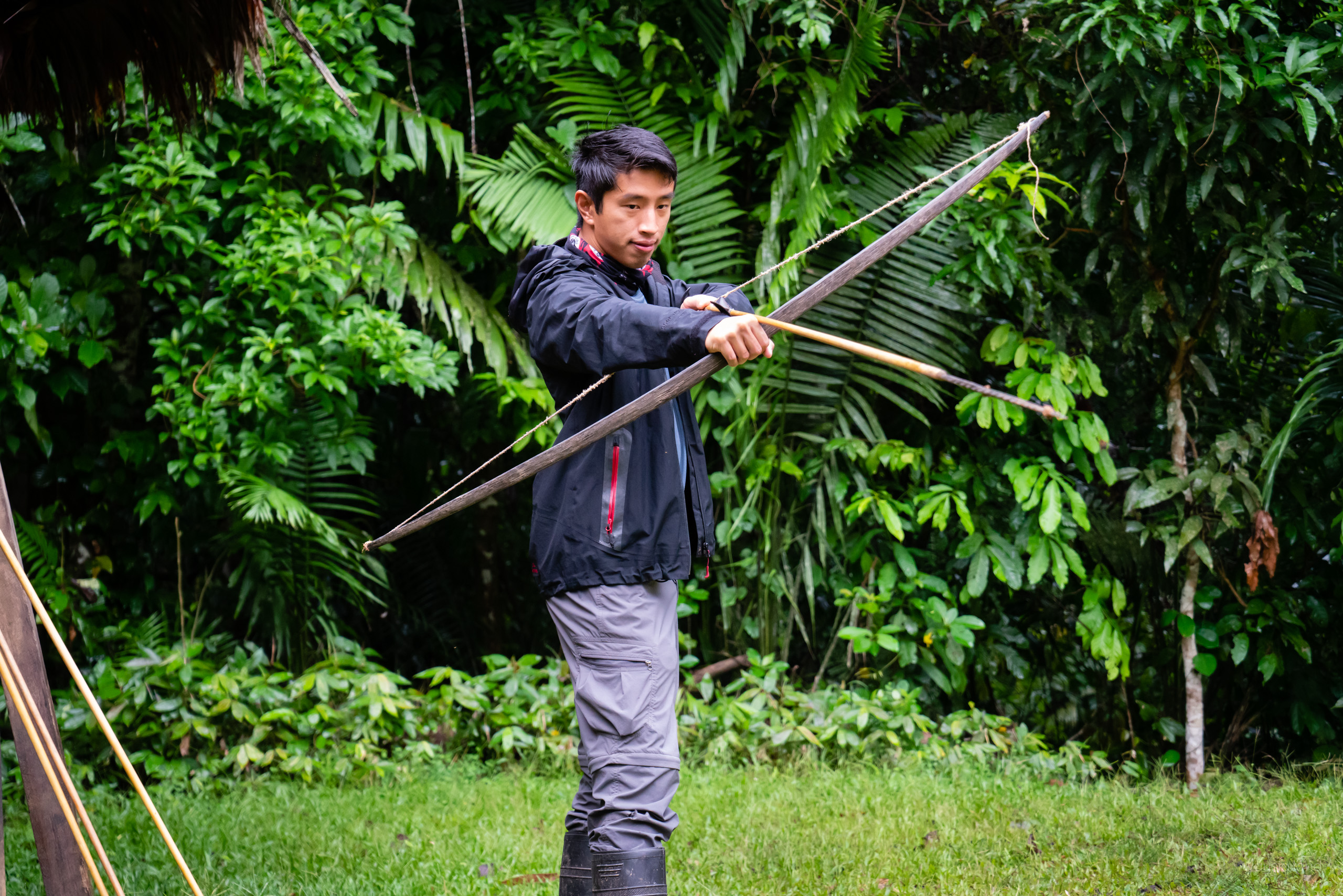
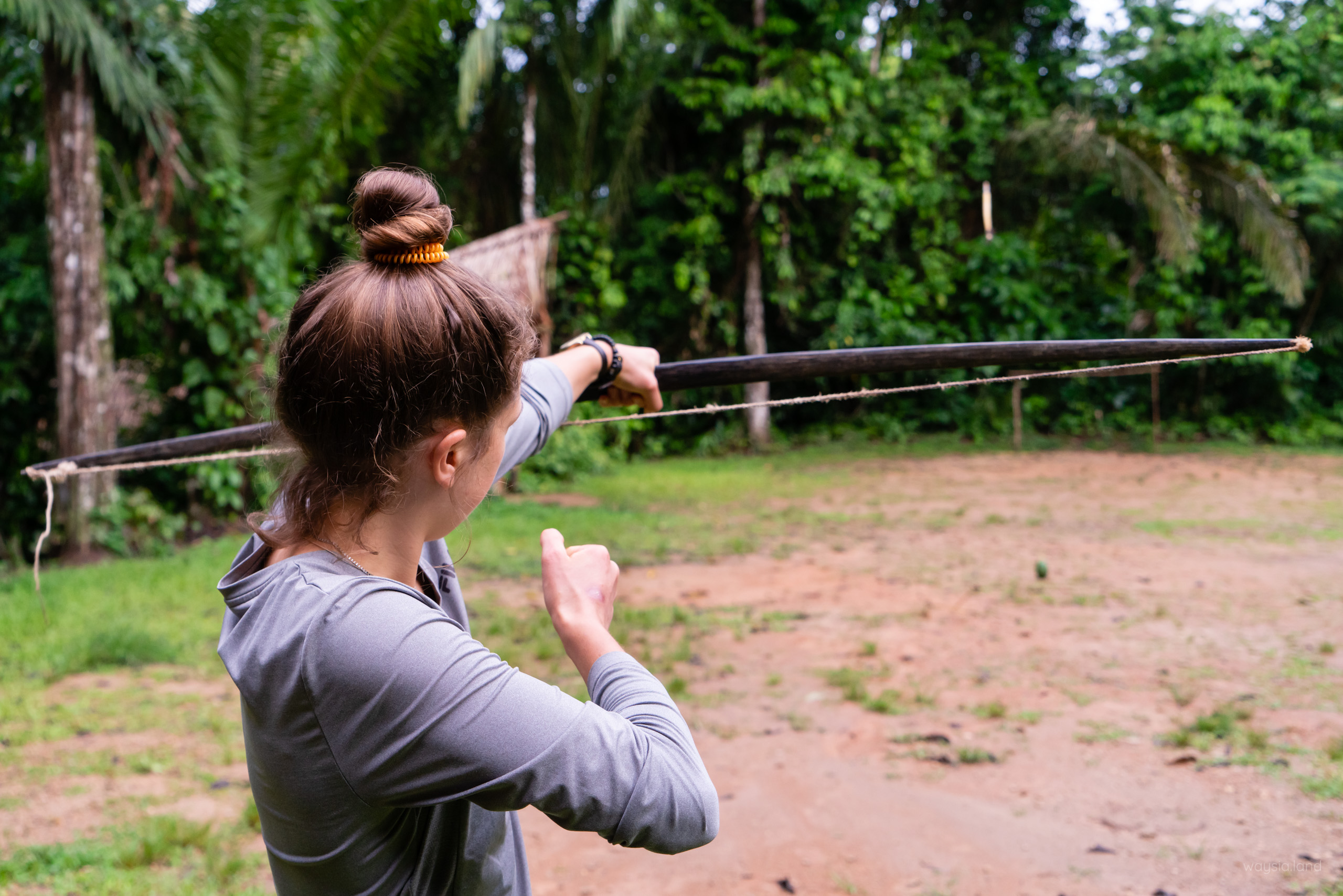
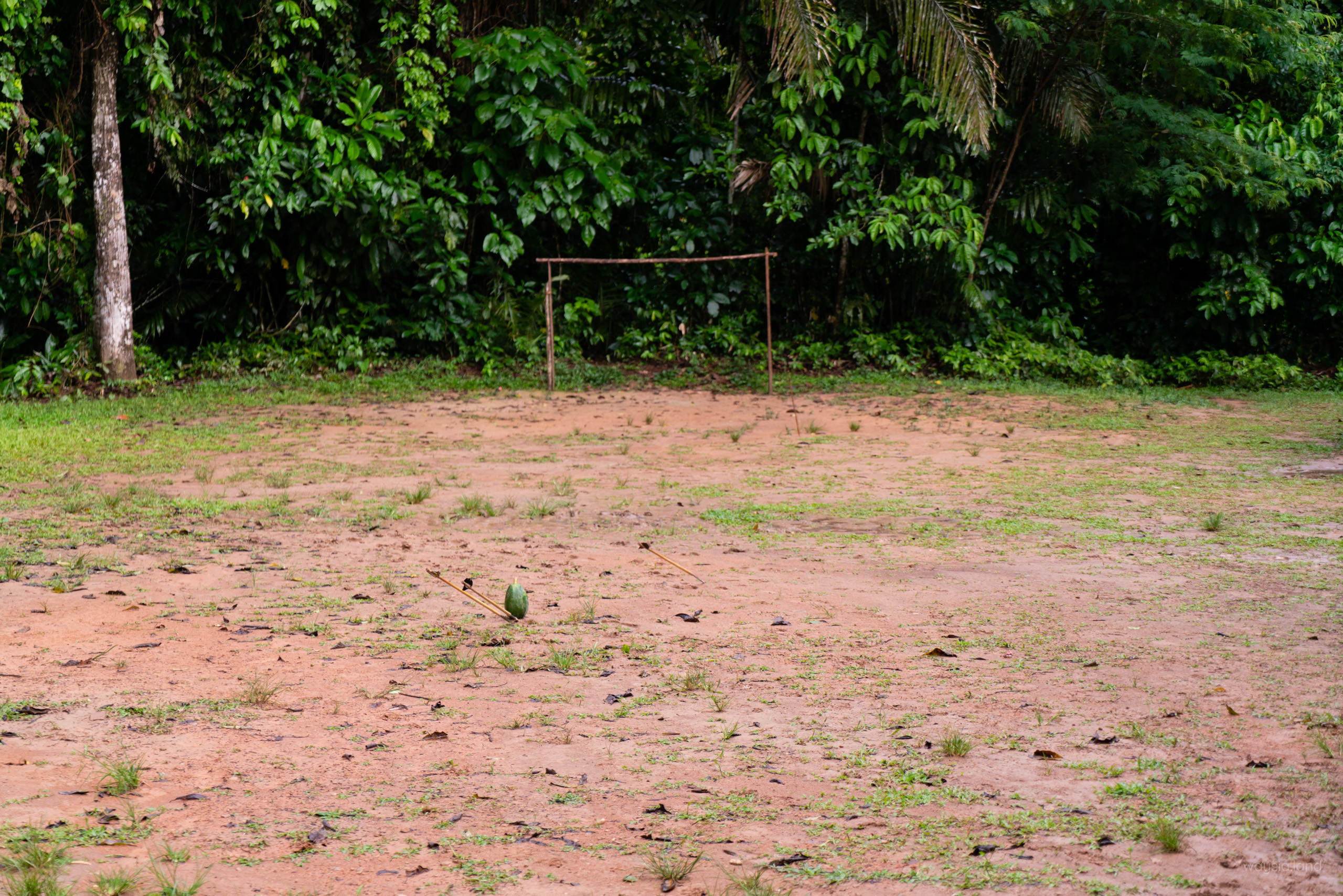
The bow was also extremely hard to use requiring a lot of strength if you wanted any power. None of us hit the melon target but we got close.
Catamaran Giant Otter experience thieving boat f**ker thieves
It was time to go as we had our catamaran ride in the Salvador Oxbow Lake. Today would have us walking different trails and actually riding around in the lake.
Back in the boat we went with all of our stuff. We would be leaving the Manu Reserve Zone at the end of today and staying in the Manu Cultural Zone. Farewell Matsieguenka tribe.
Always on the lookout for wildlife, we set off down the river to a different trailhead. This one wasn’t as steep but it was just as muddy. Thank goodness for these rain boots!
We walked along the jungle trail taking in more of the sights and sounds. As we approached the lake some kind of commotion was taking place. I didn’t catch what our guys were saying so I had no idea what was going on but we picked up the pace. We arrived at the dock shortly after and I was still confused. Several minutes passed. The 5 of us were standing around waiting. Something was wrong but I couldn’t quite put my finger on it.
Asking a few questions I discovered the catamaran (2 canoes connected) in the lake is a shared resource that must be booked in advance. We had booked the first time slot of the day which was for 3 hrs. The catamaran wasn’t at the dock though, we could see it close to the other side of the river bank.
SOMEONE HAD STOLEN OUR TIME SLOT!
Not only that, but now we could see the Giant Otters swimming right up to the catamaran. For the sake of the wildlife, you are not allowed to paddle towards the Giant Otters or paddle when they’re near but if they come to you, there is no problem. You also have to stay really silent.
However, this was a problem. A problem for us! That should have been US on the catamaran. That should have been US the Giant Otters were swimming right up to. That should have been US having the Giant Otter experience of a lifetime.
We were robbed.
By now the Giant Otters had swam away. It must have been frustrating for our guide too since you’re supposed to remain silent when the Giant Otters are nearby. Our guide somehow managed to get them to turn the catamaran around towards the dock.
There were a handful of tourists on the catamaran. Basically the only other tourists we had crossed paths with at this point. It looked like they didn’t want to get off. They looked down at their feet and they didn’t say a word. Were they complicit? Maybe.
Their guide started saying things in Spanish and pulled out some piece of paper (supposedly booking documents) waving it around but our guide would have none of it. We eventually and rightfully kicked them off and went on the catamaran.
Thank f**k the catamaran was still in shouting distance. The lake is huge and if they were on the far side, there would be no way to communicate with them.
Like biting into bitter melon, there was an unsavoury taste in our mouths. They wouldn’t hear the end of this…
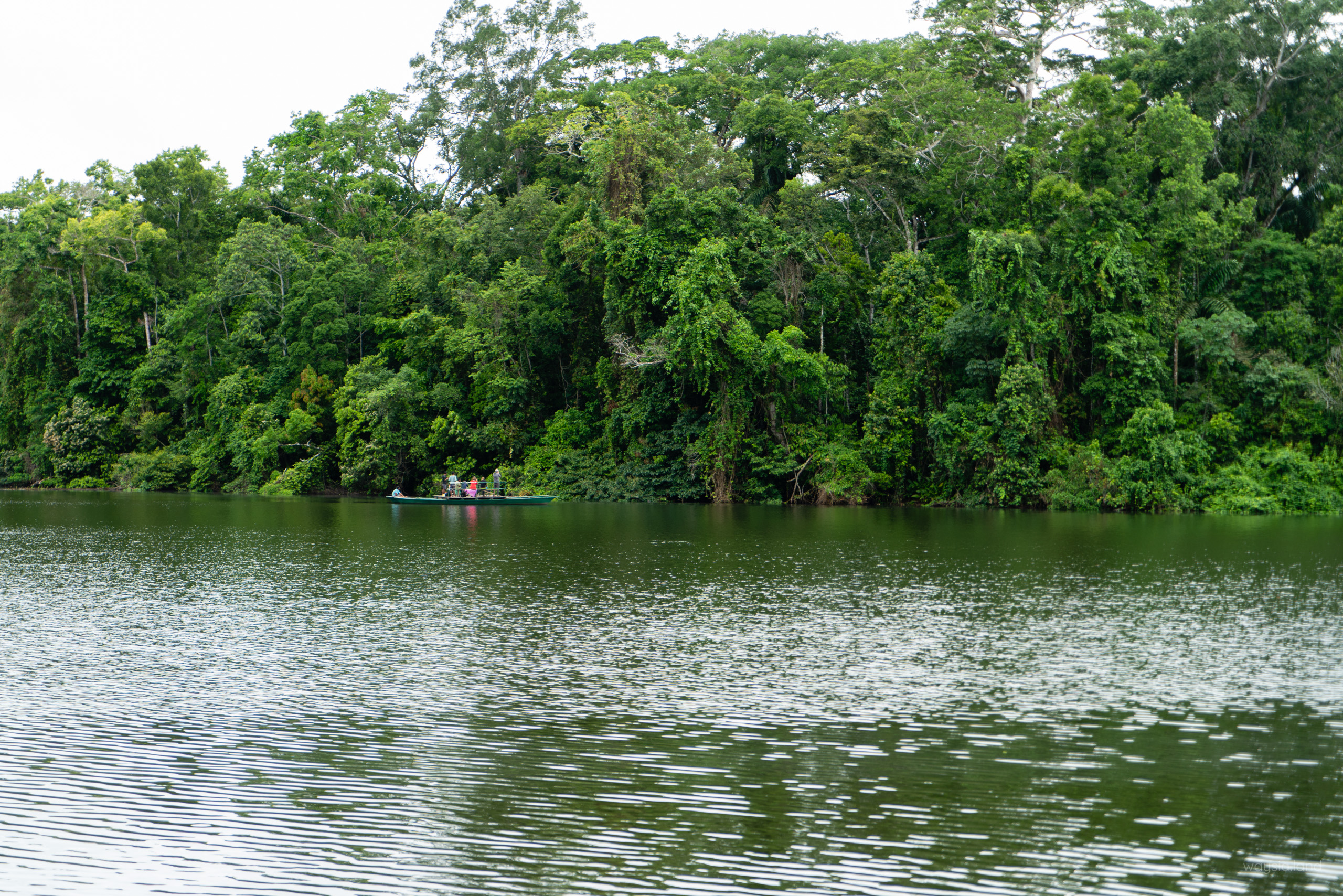
We set off and were met with a huge concentration of wildlife, predominantly birds and monkeys. Our guide was just as surprised as we were and attributed it to the heavy rain. Turns out yesterday wasn’t a big a bust as I thought since it positively affected today. Funny how things work out in the end.
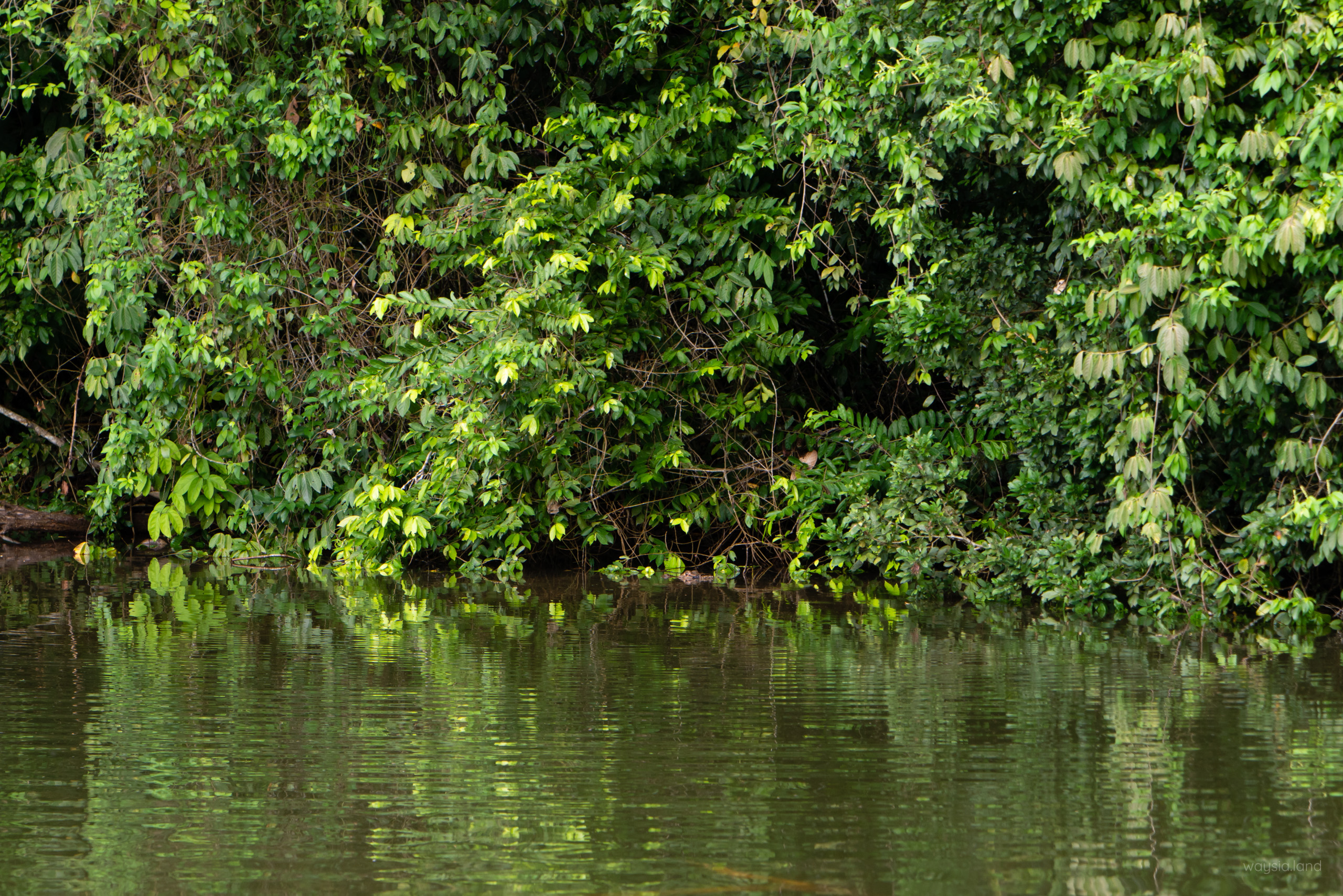
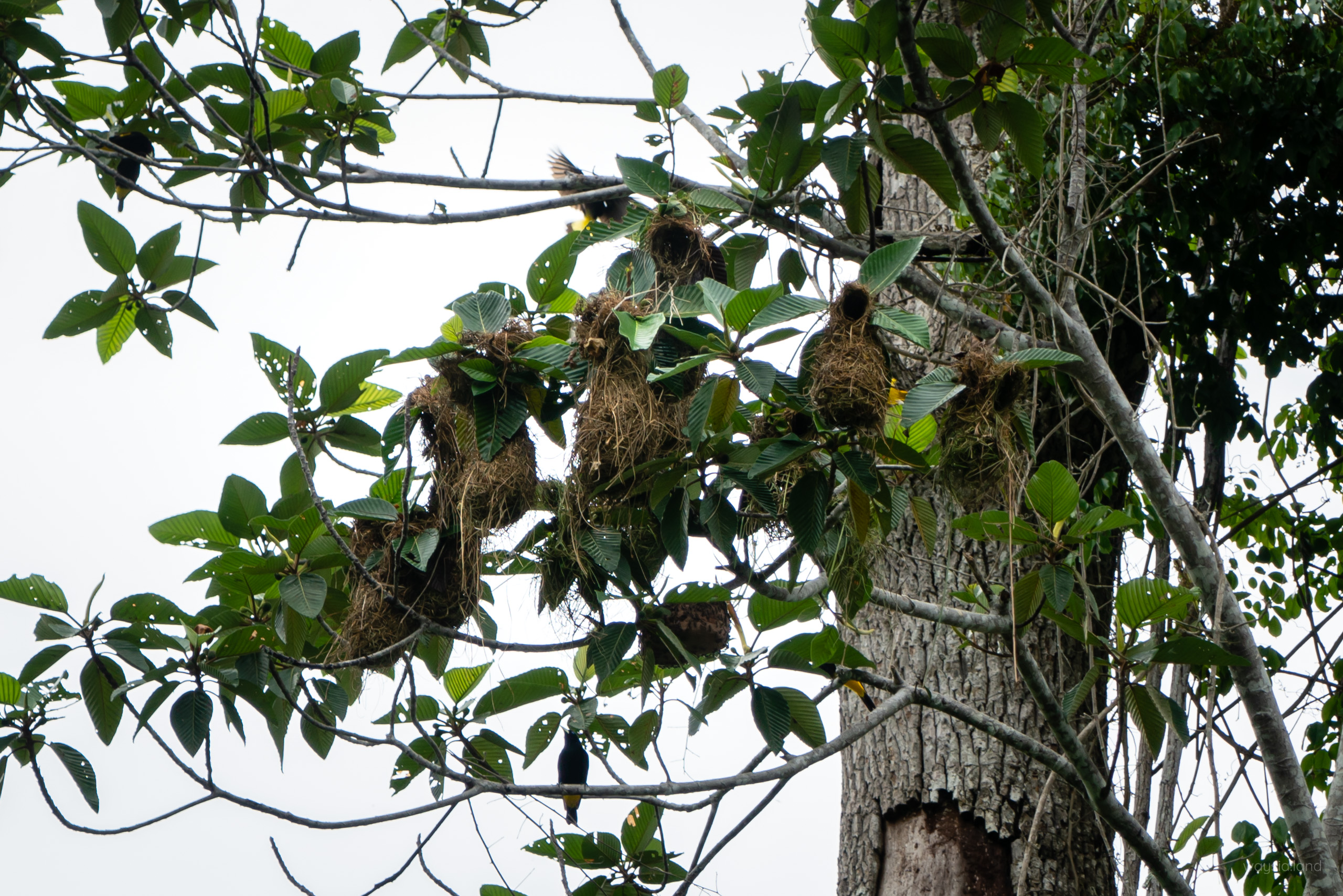
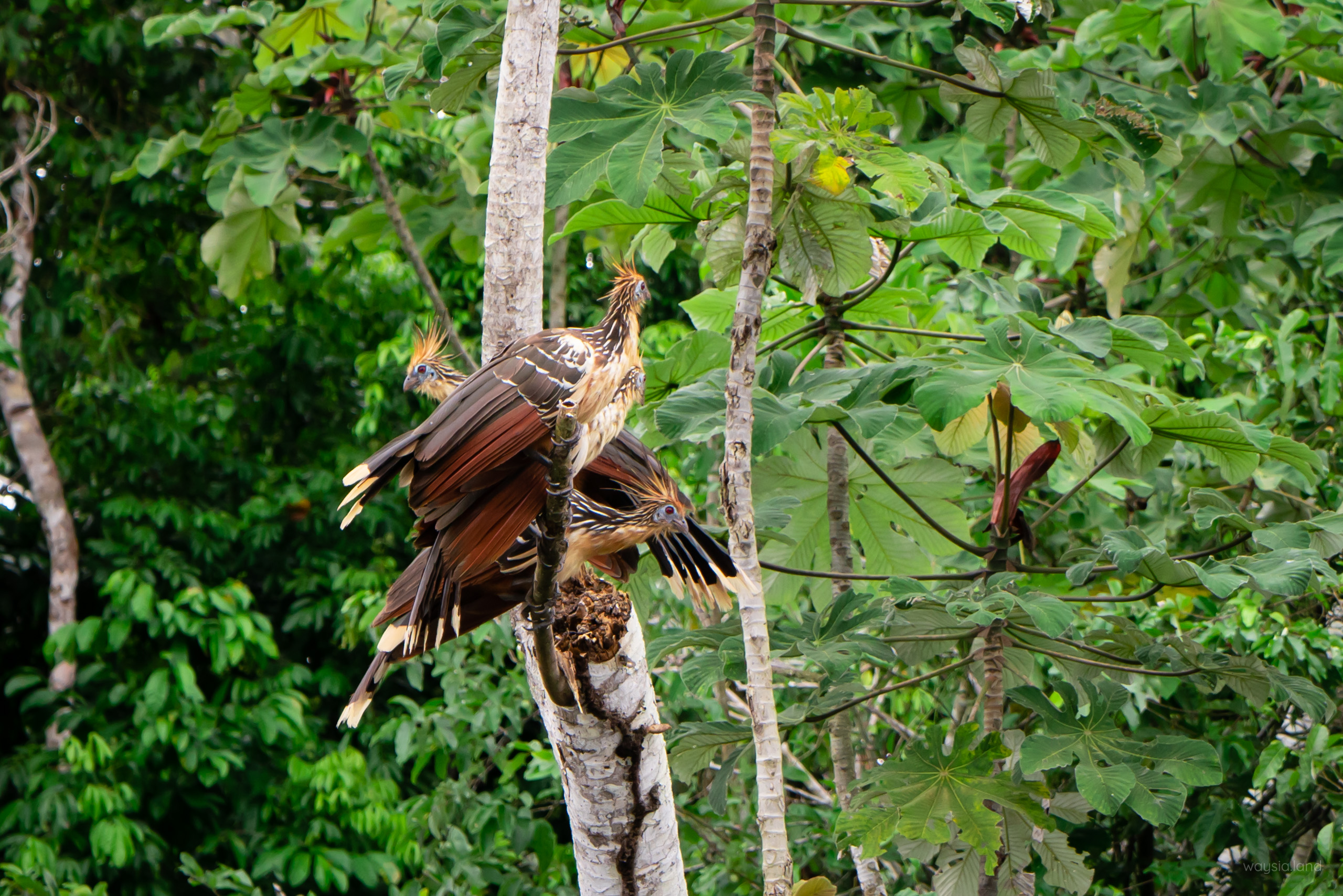
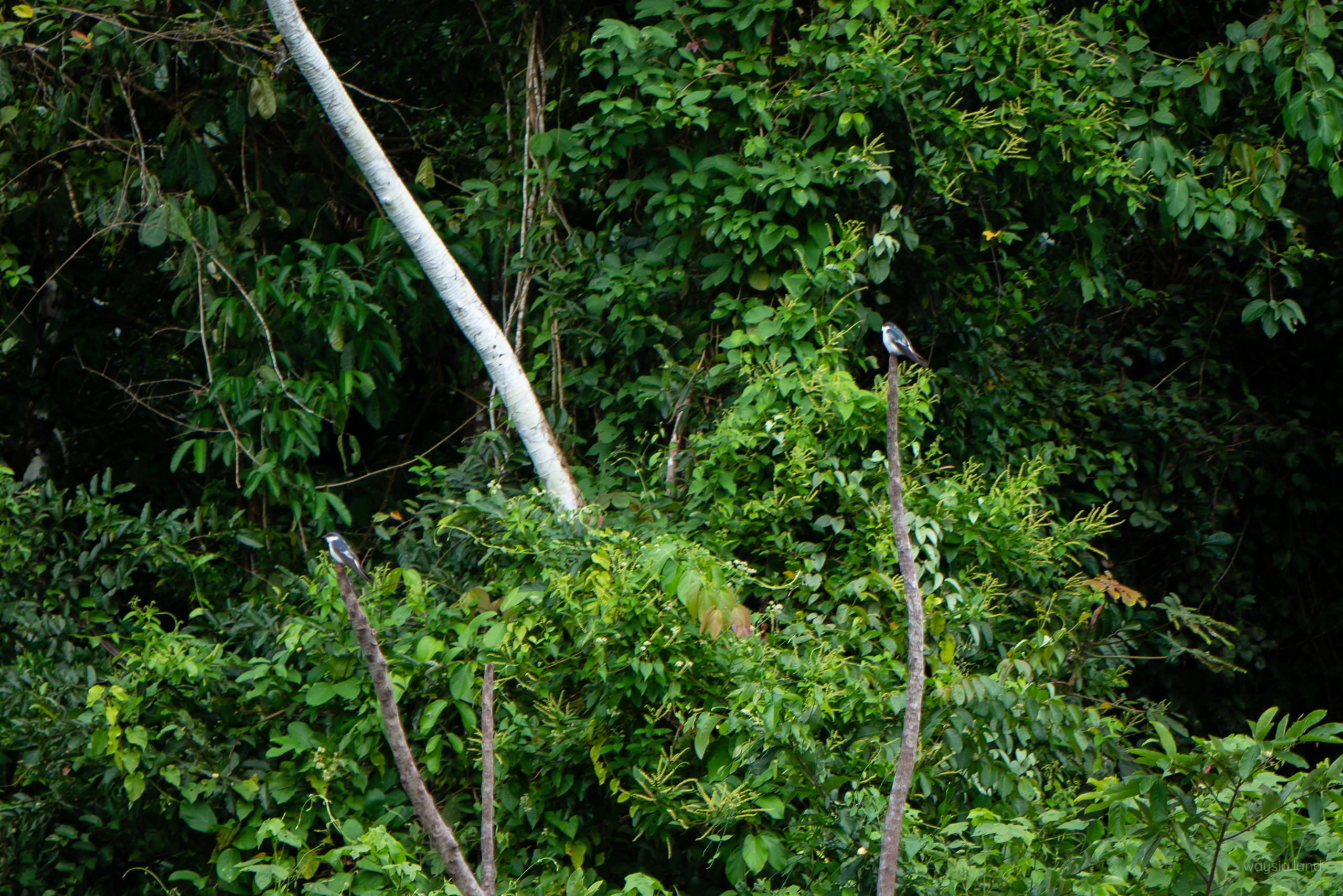
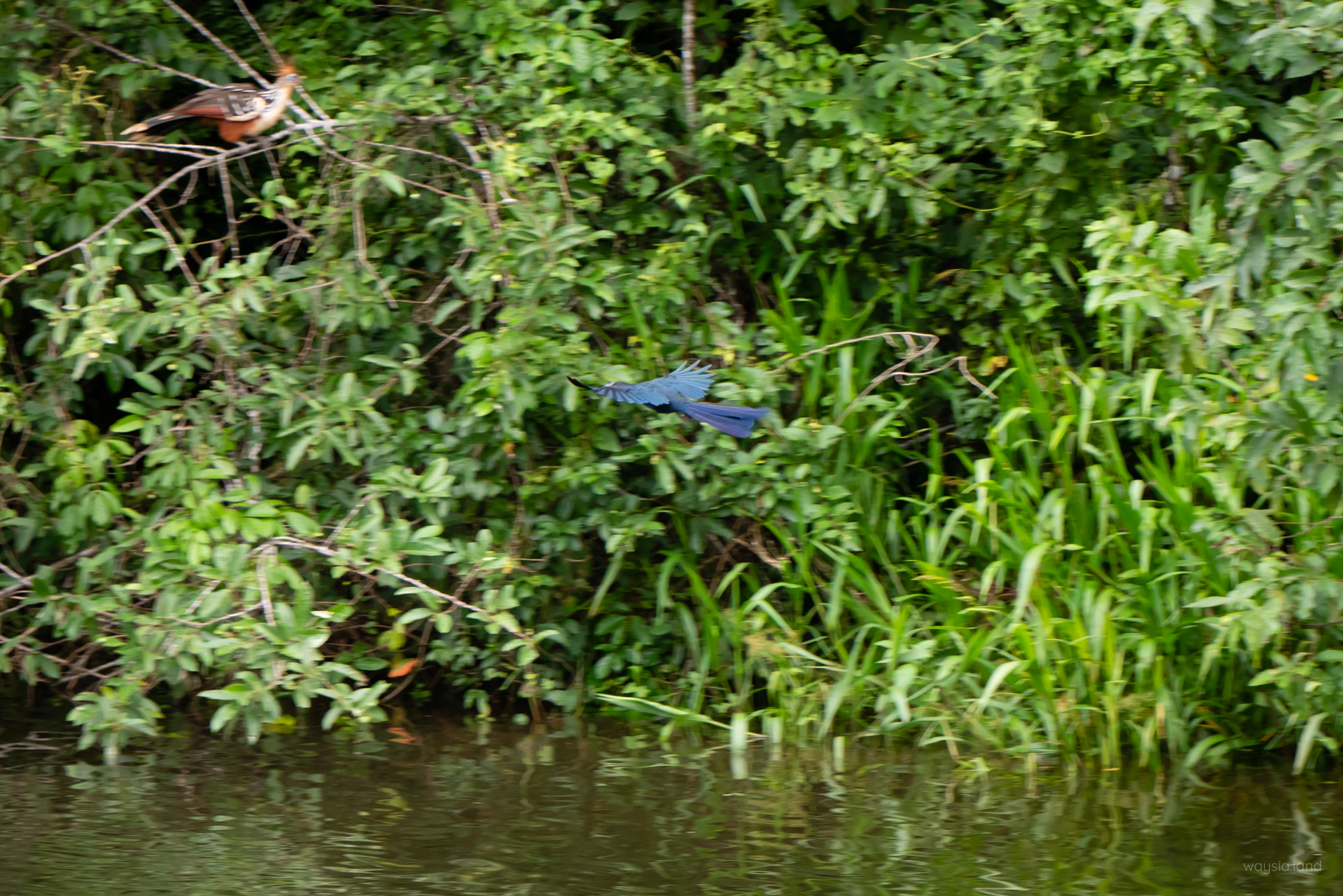
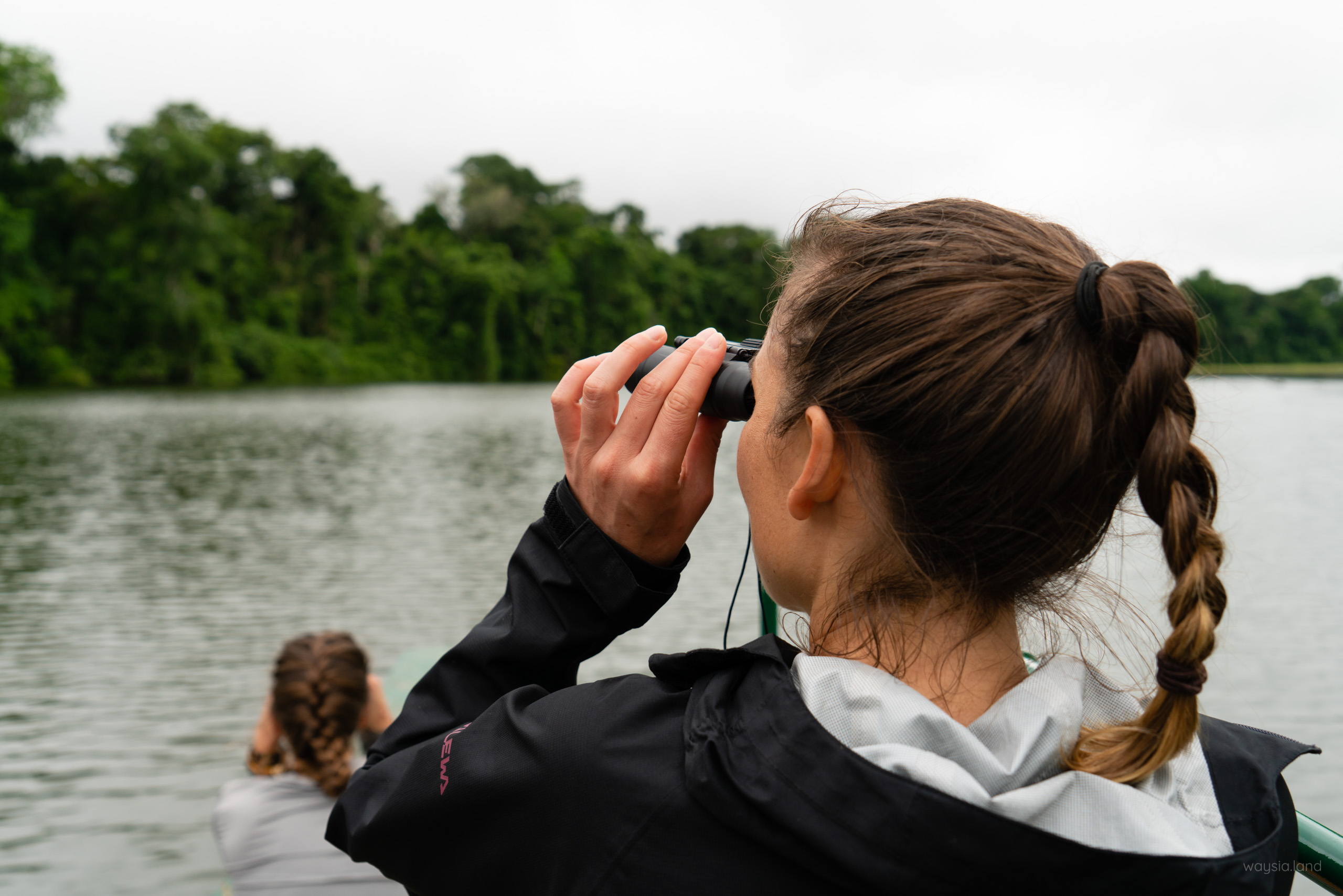
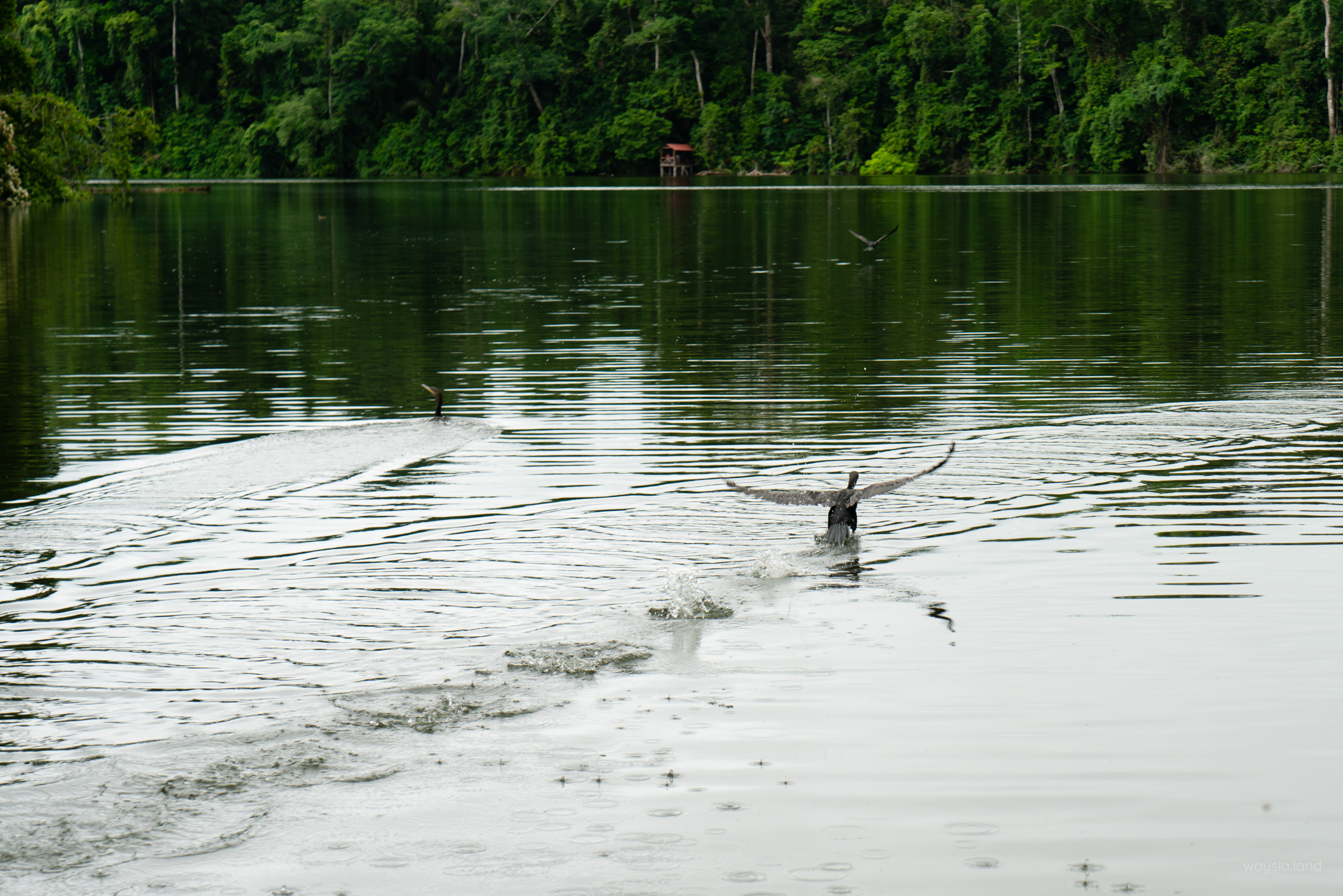
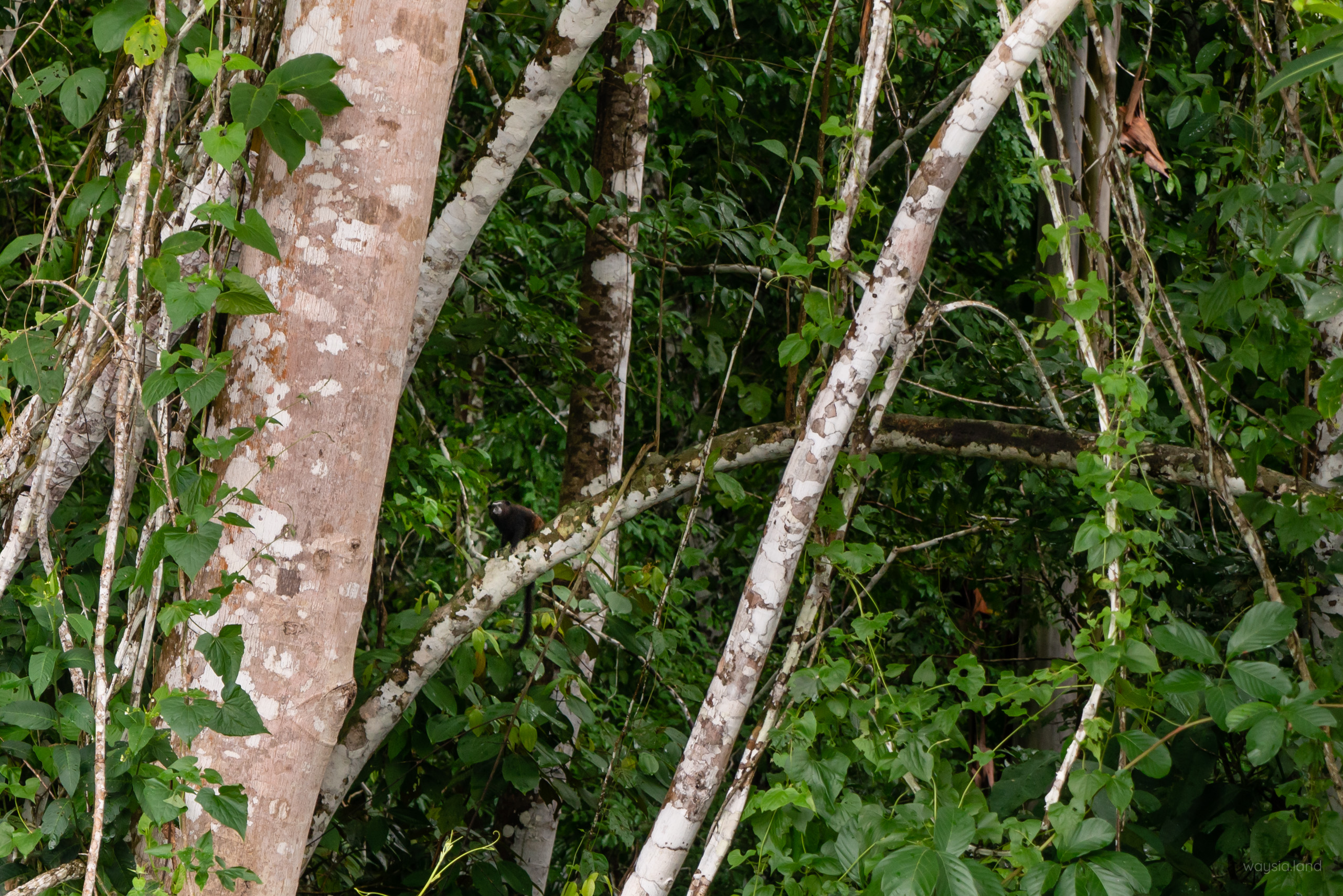
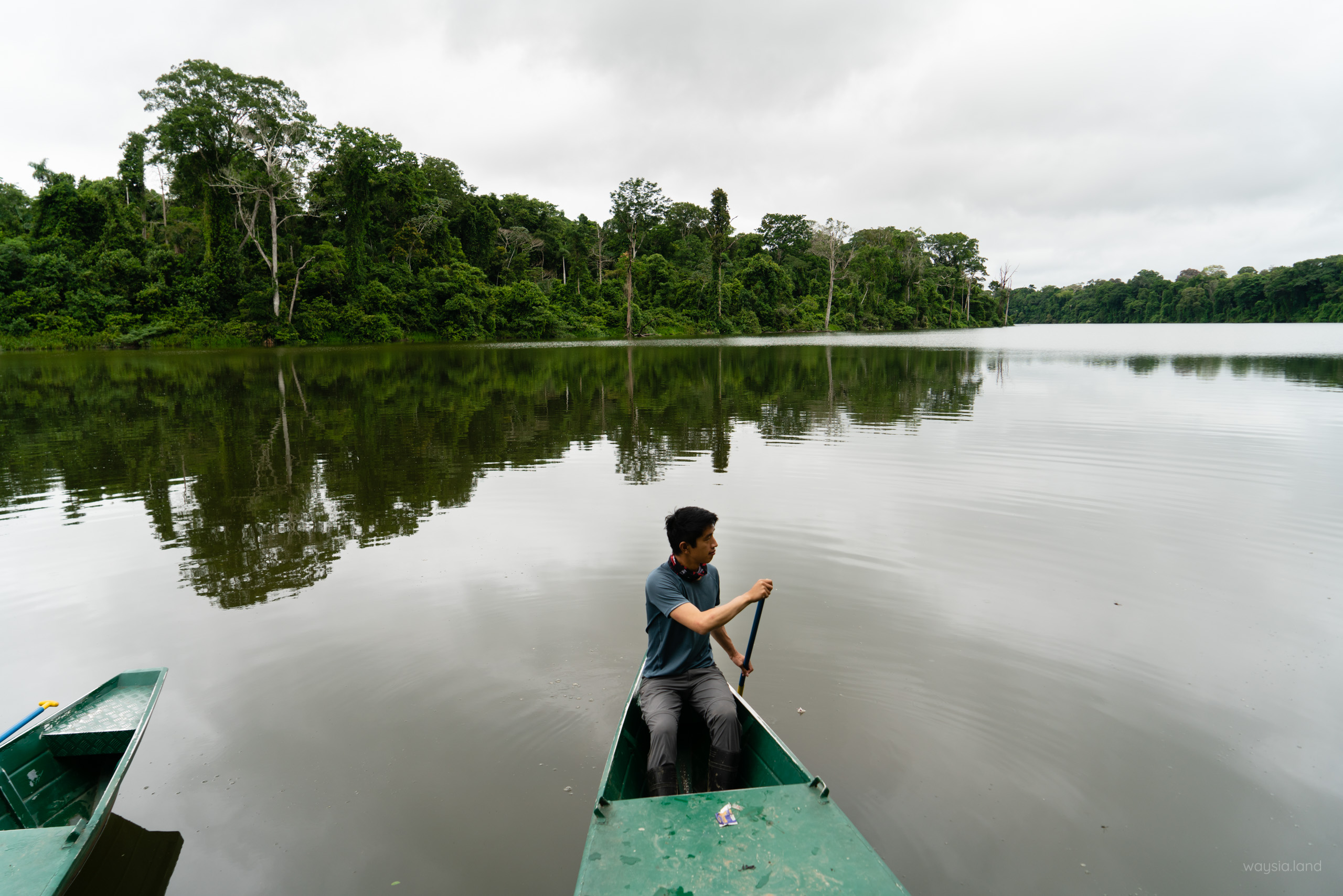
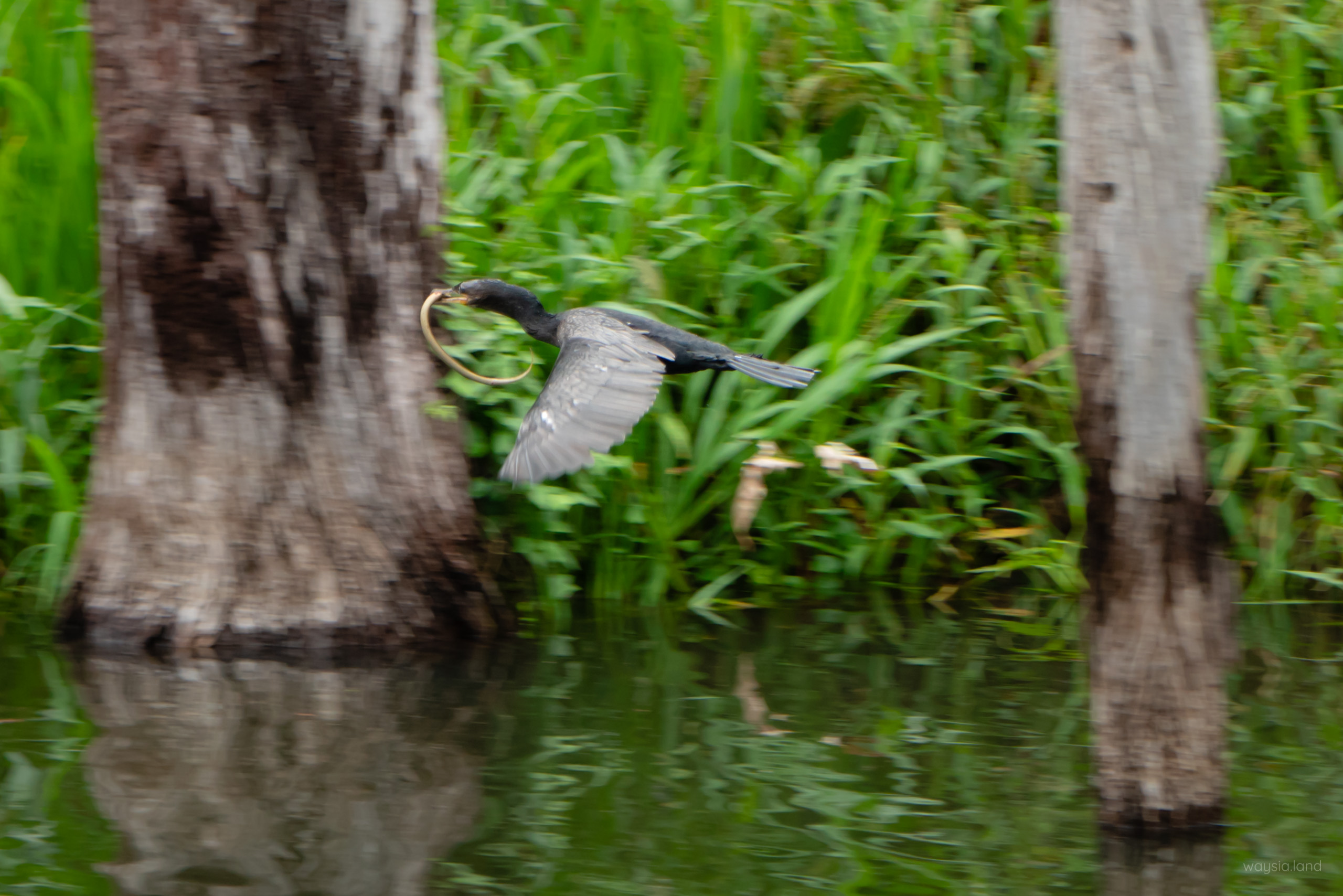
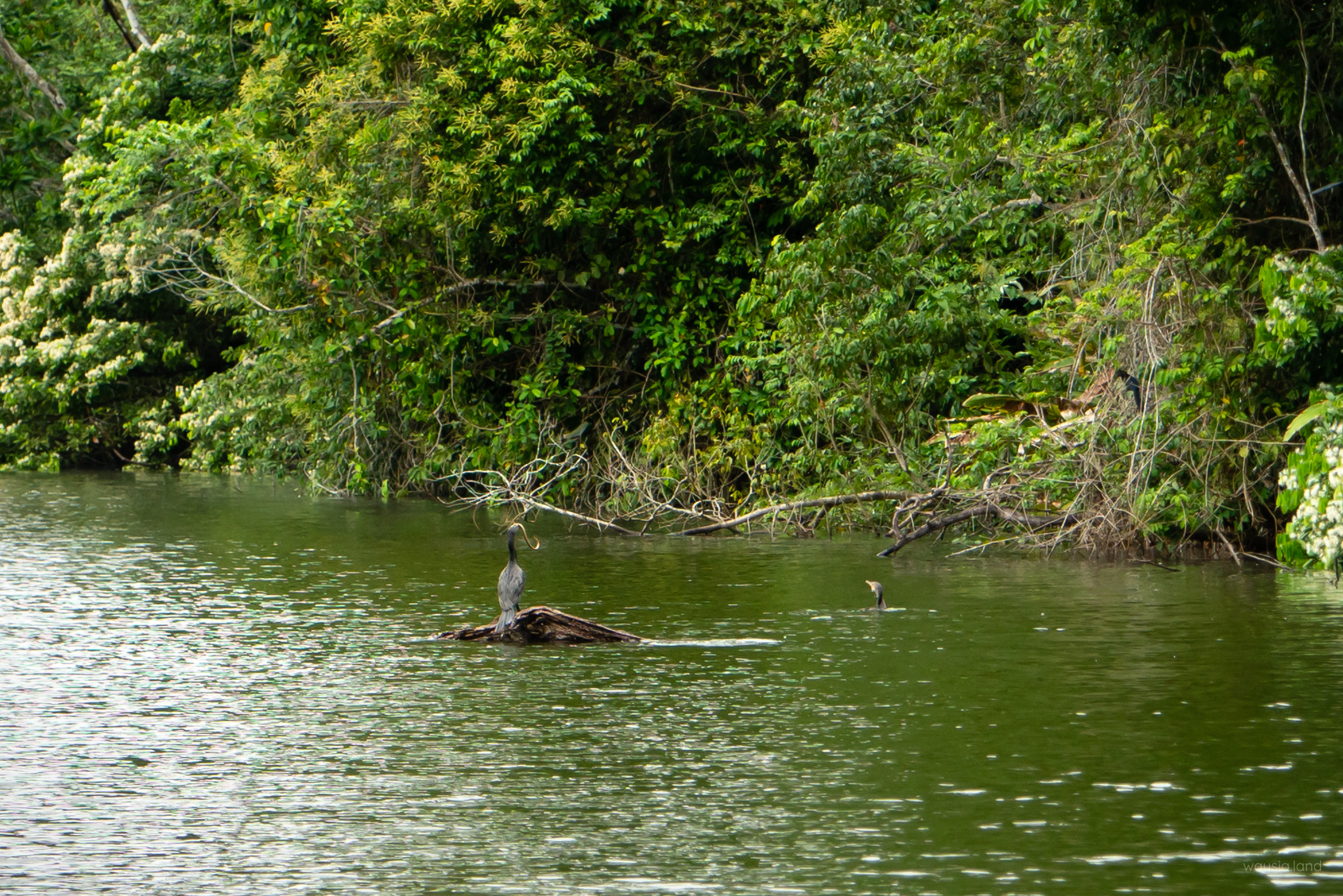
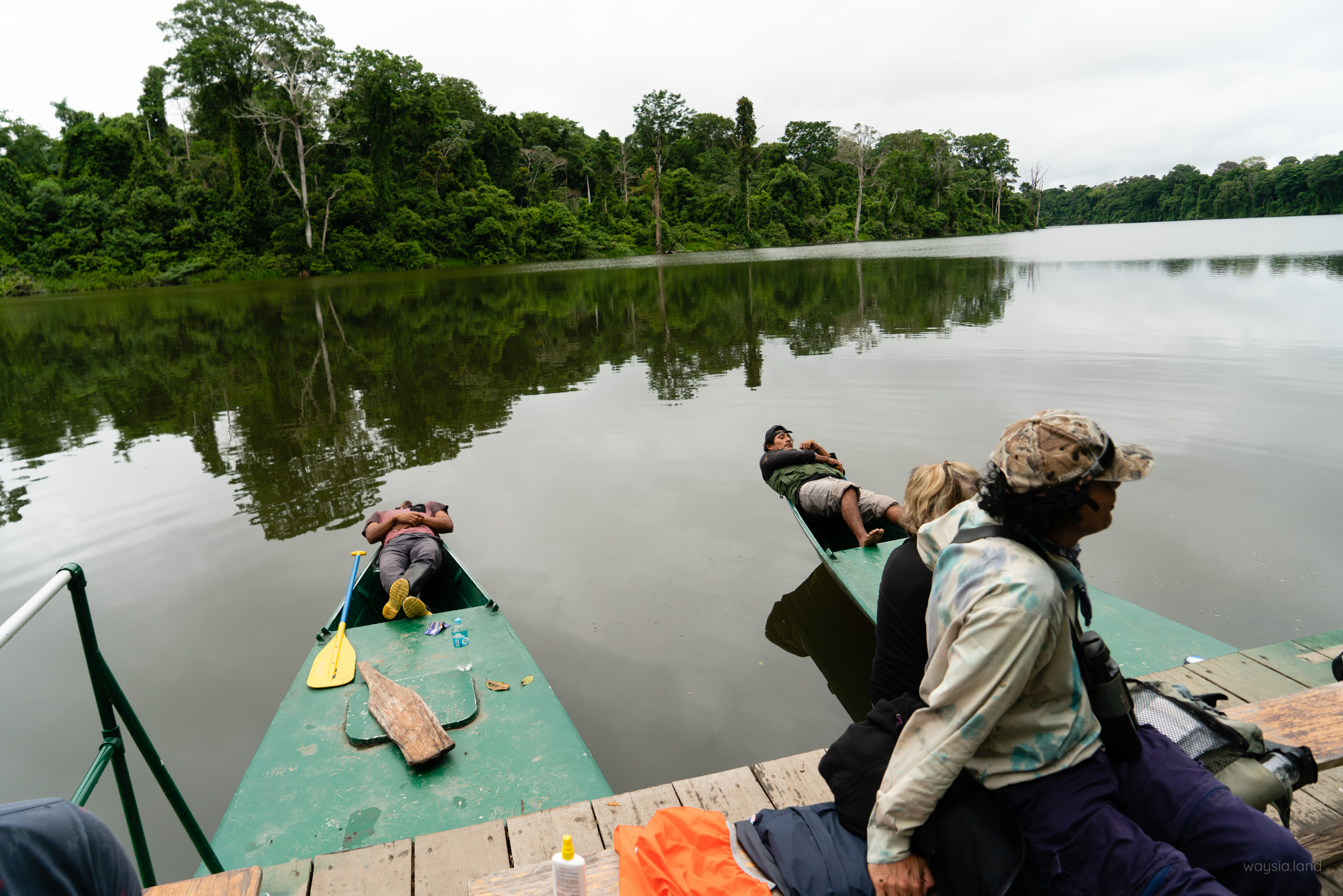
Our guide spotted the Giant Otters but they were too far for me to make out without binoculars. Caiman, Giant Otter, floating log? They all looked the same at a distance to me. We waited near a river entrance that they swam down in hopes that they would return but alas, they didn’t. The river connected to the main Rio Manu so they could have been anywhere by now.
After a while, we turned around and made our way back to the dock. Some of our time had been eaten into by those guys but we stayed a bit longer to make up for it, thankfully the following group was nice and understanding of our predicament.
We found more creatures on the way back to the boat.
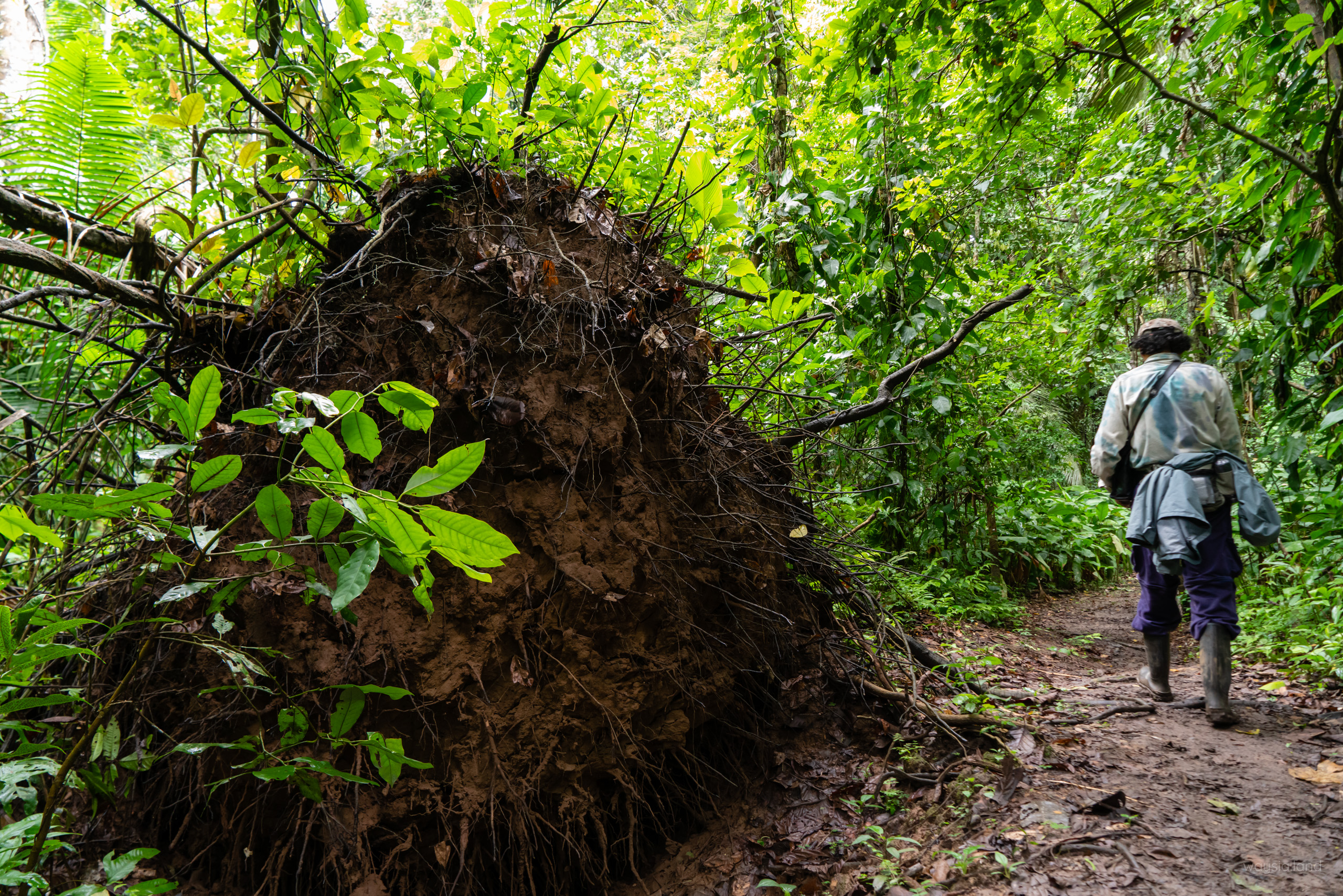
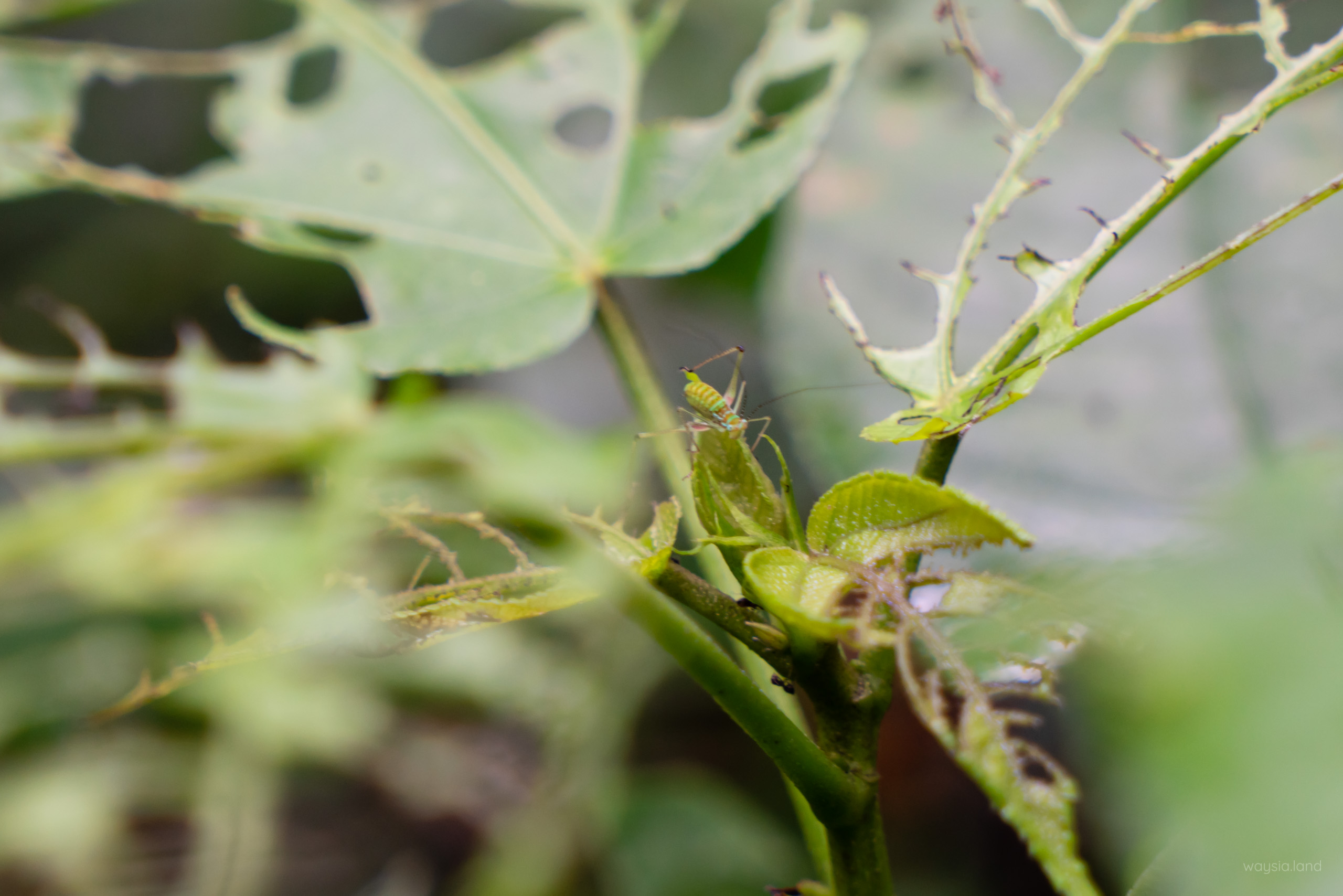
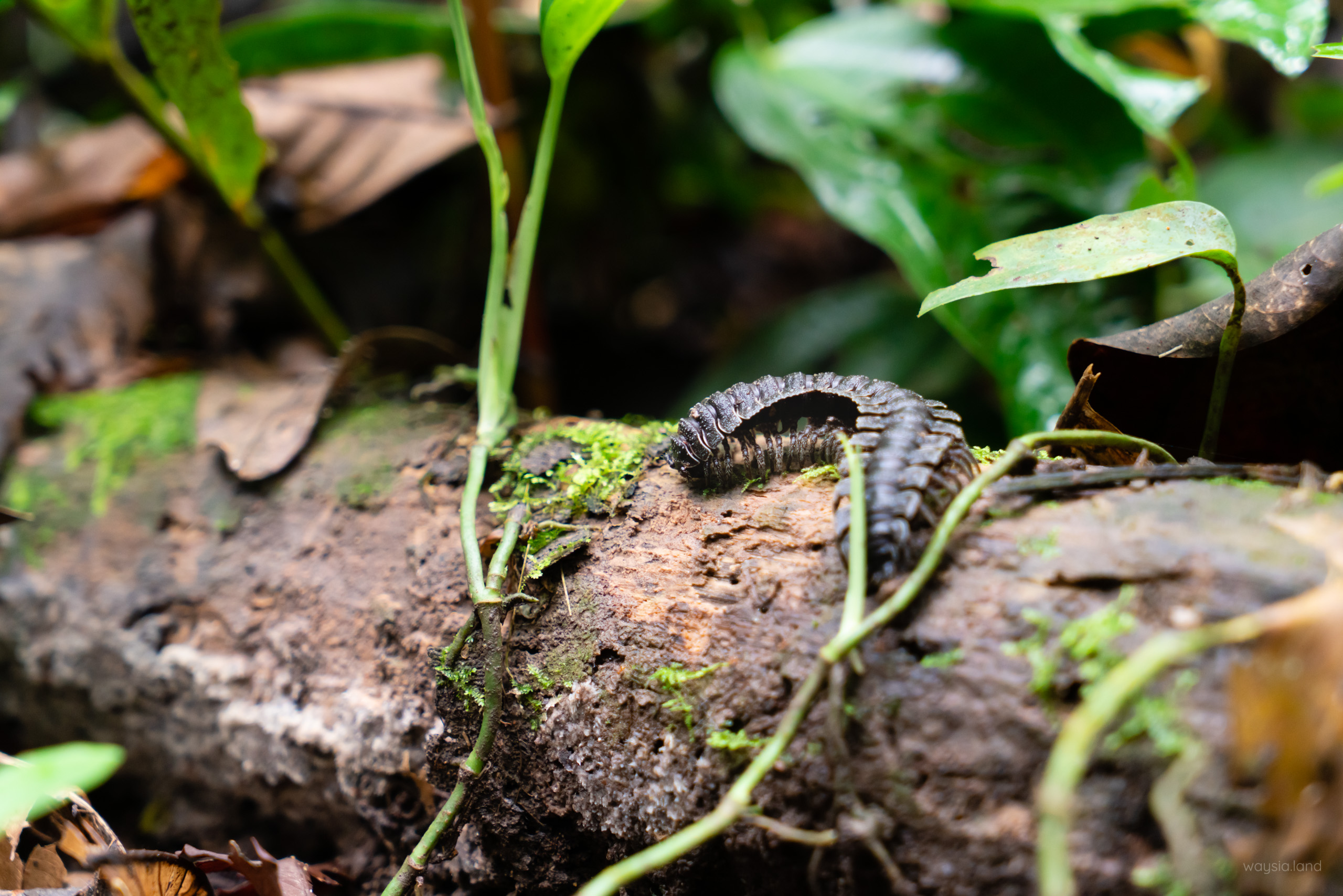
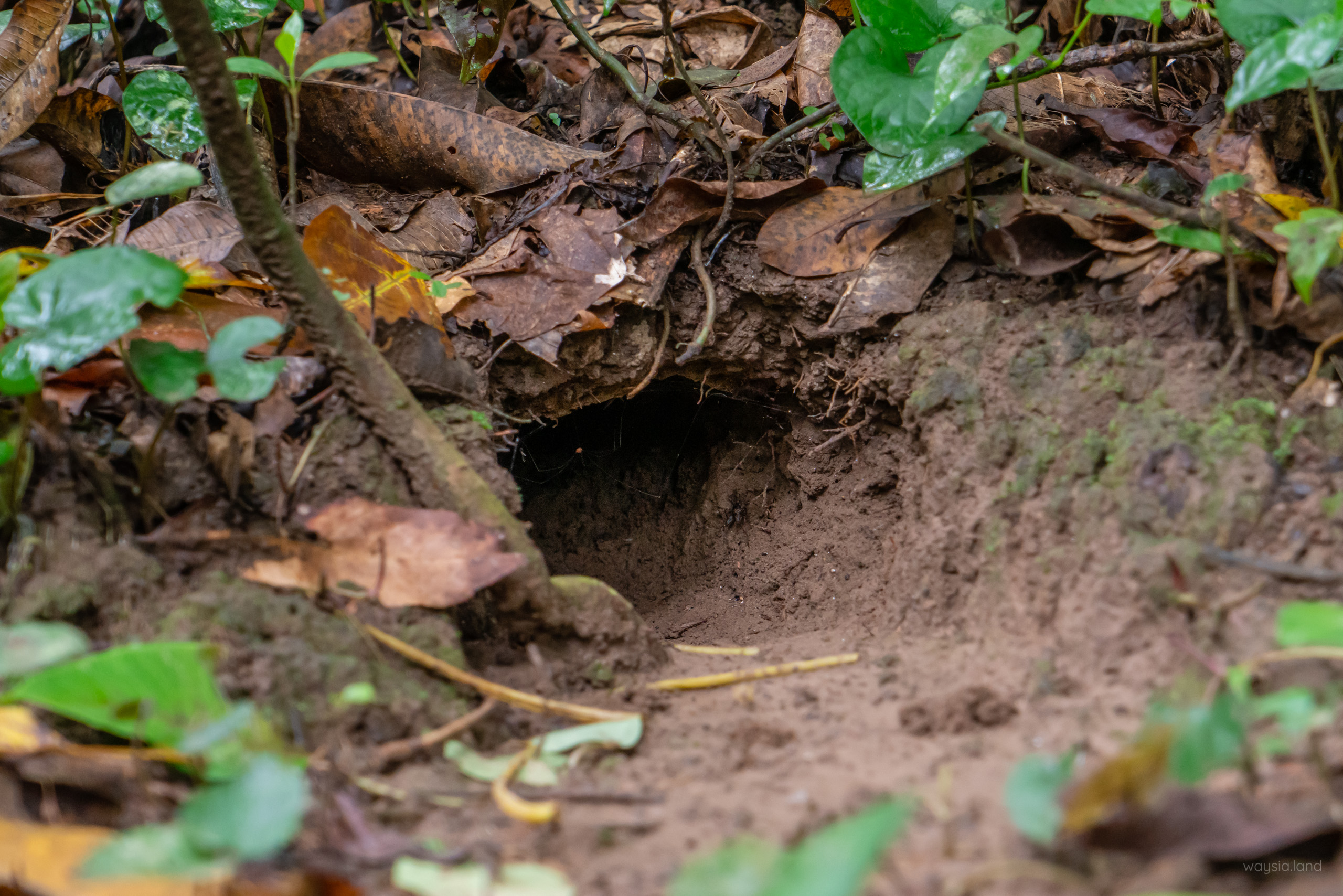
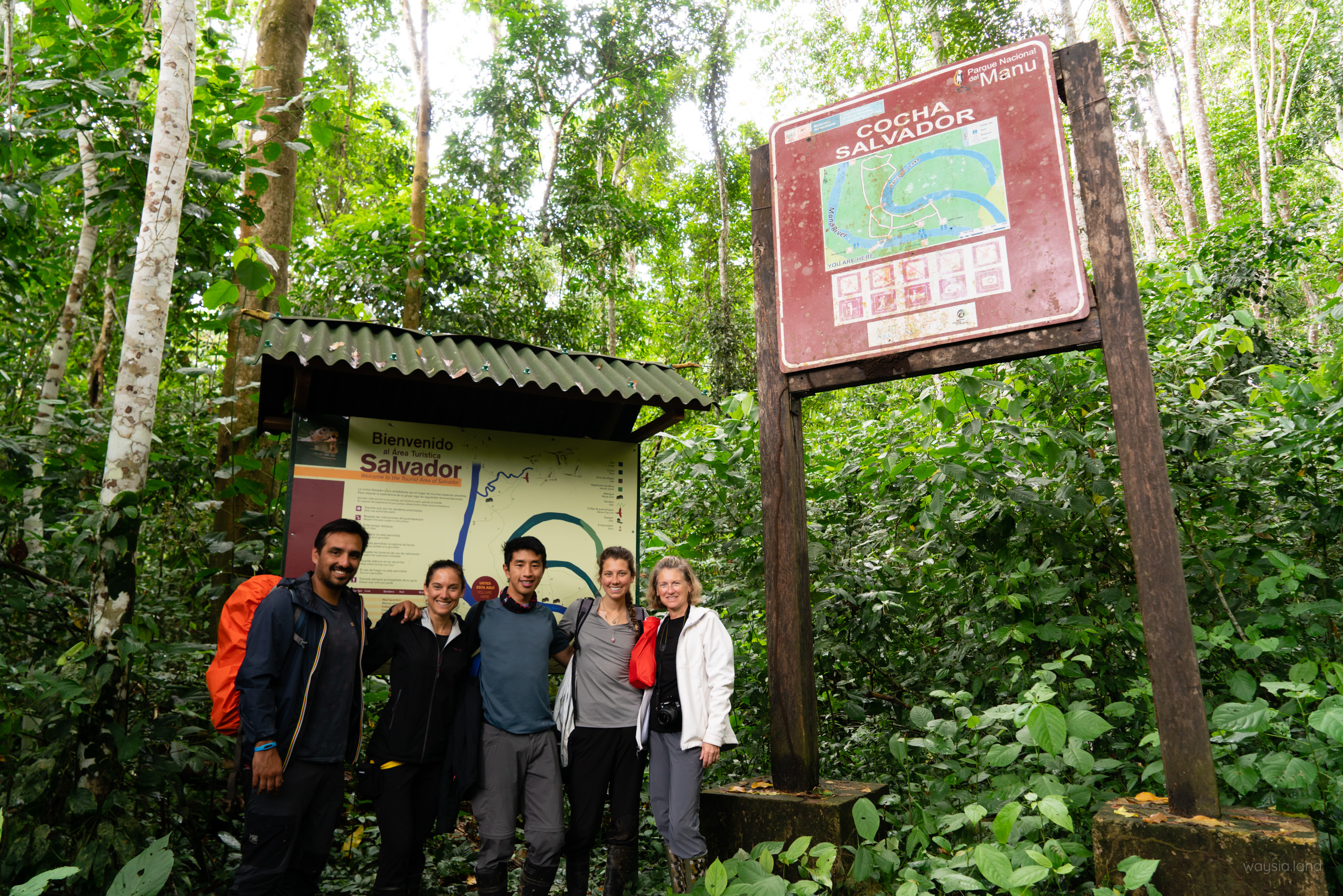
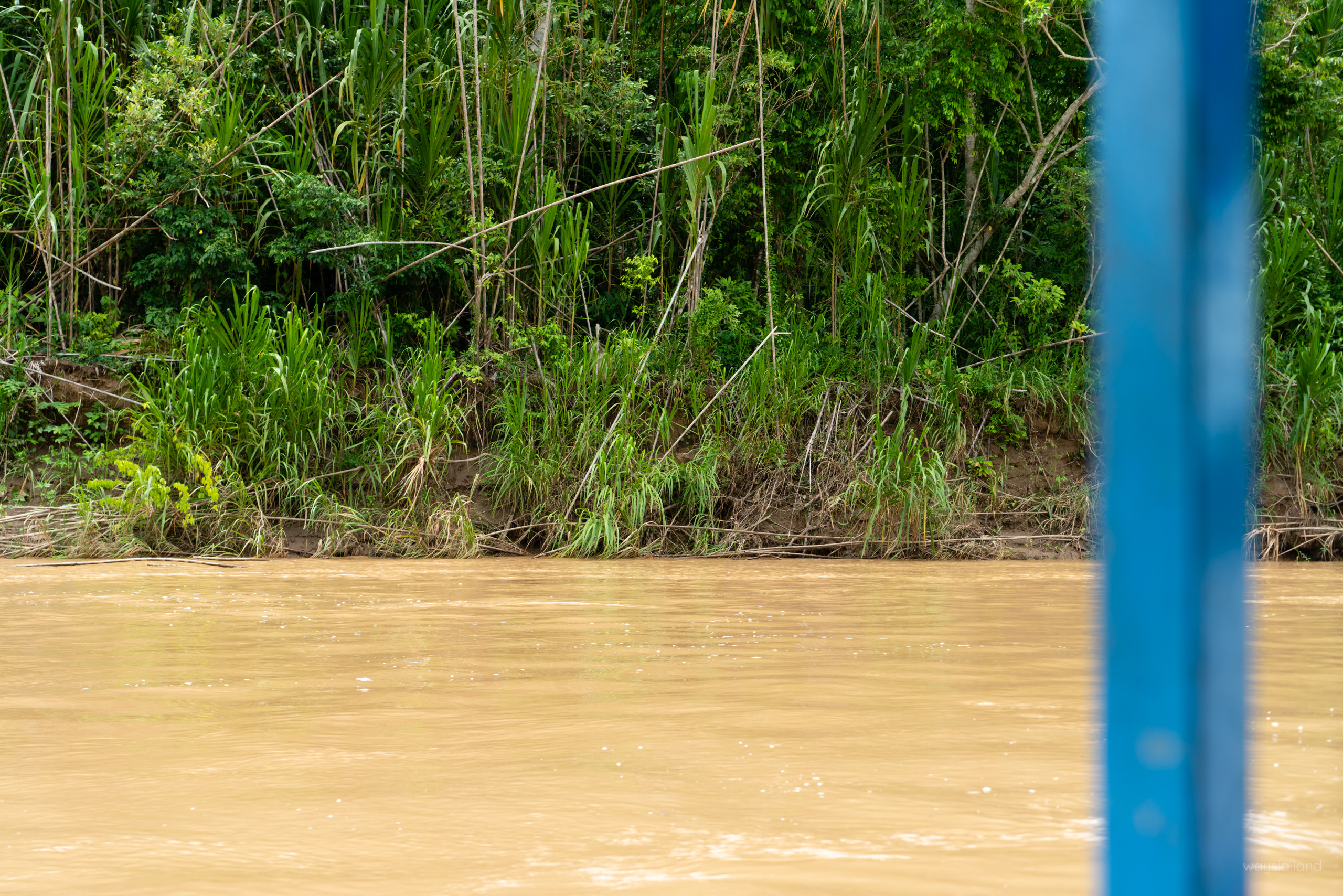
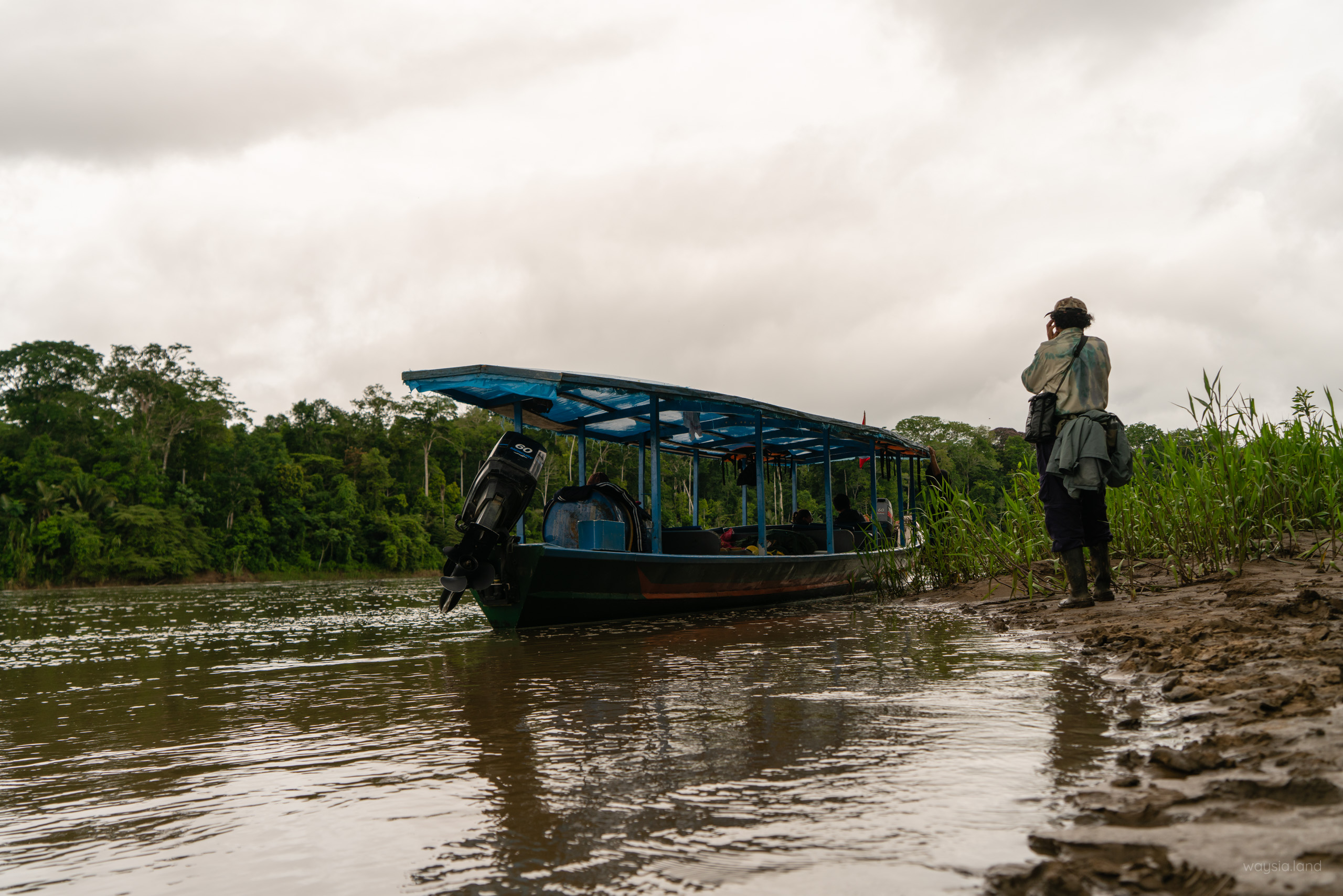
Leaving the Manu Reserve Zone
As we approached the ranger station to sign out, things started feeling real. This was past the halfway point of the trip and leaving the Manu Reserve Zone would have us leaving the prime areas for wildlife spotting. While it would still be possible, we still hadn’t seen a jaguar, the prize thing to see in the Amazon. A true apex predator. Prior to my research on Amazon trips, I couldn’t have cared less about seeing a jaguar. I knew nothing about jaguars. If you asked me then where they lived, I’d probably have said something like Africa. But now it was like a competition, I just had to see one. While I would much rather see an anaconda, they are so rare they aren’t even on people’s ‘to see list’.
We walked into the ranger station to sign out. We had a bit more time to look around and buy a souvenir t-shirt. They didn’t really have a lot of souvenir options and I’m pretty sure 2 t-shirt styles were the only choice. Remember that while tourism exists here, it’s not an infection, yet.
I hadn’t noticed earlier but on the wall, there was a bunch of photos of animals with slides underneath. These are the most popular animals to try and find. The slides are also neat. Our guide walked over and revealed the names of the ones we actually saw. 4 out of the top 6 so far, not too bad, missing the jaguar and I believe tapir, but who’s counting…
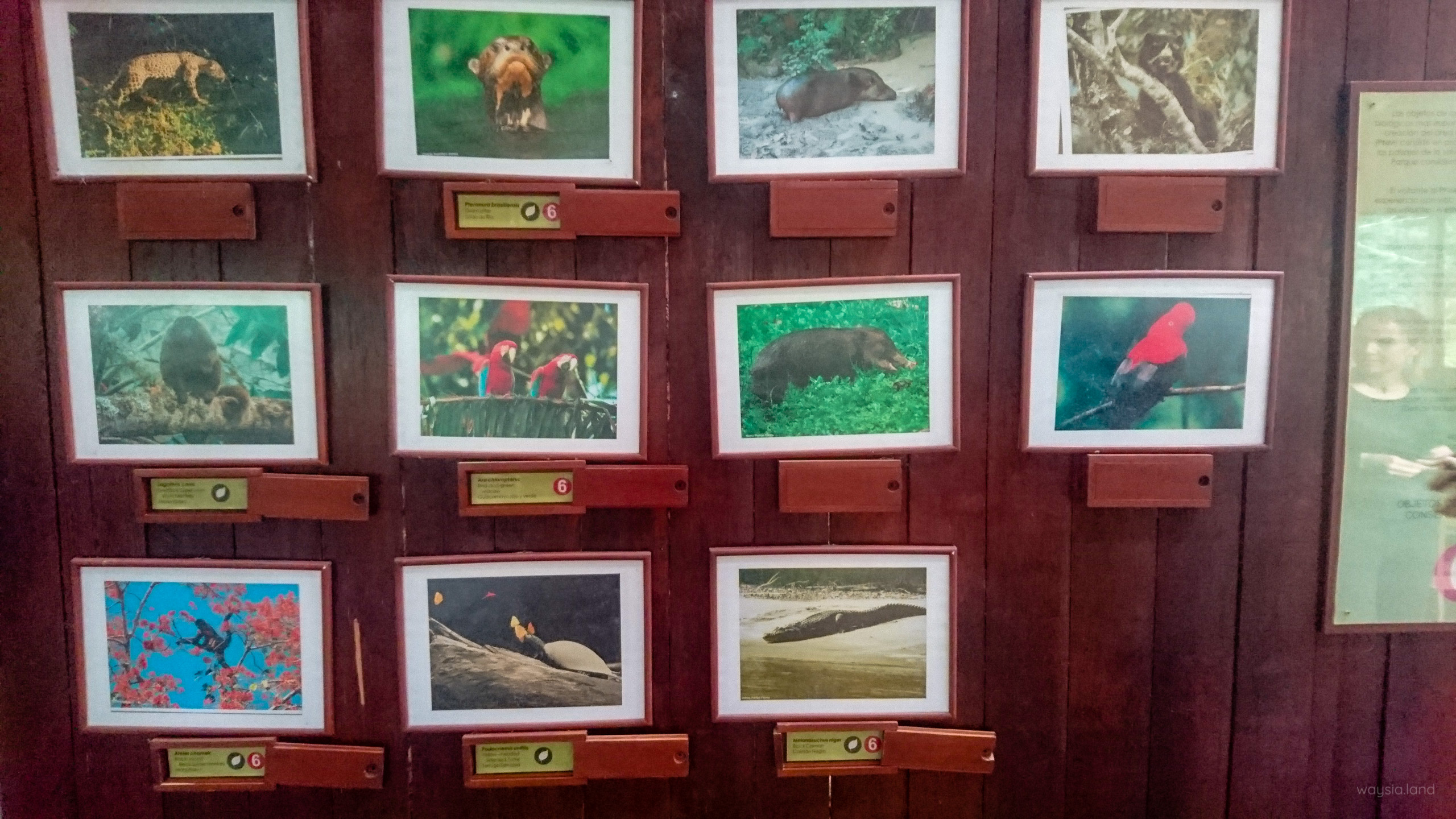
As he was speaking Spanish, I wasn’t able to tell if the guide was already talking to the ranger about, or if he even remembered the catamaran incident at the Salvador Oxbow Lake.
I gently reminded him regardless.
“What about those guys that took our catamaran?” I pointedly asked.
I don’t know if it helped the cause or not but it turns out the document he was waving about was forged. The dodgy guide also fudged/excluded something in the logbook so the ranger wouldn’t notice a discrepancy.
The punishment? The guide would be banned from tours to the Manu Reserve Zone and the tour operator would also no longer have the authorisation to sell any more tours to the area. The guide I can see getting banned. The tour operator? Maybe if it was a small or new one. While it may sound harsh, these illegitimate operators are taking away from the honest ones and their clients so there is no love lost here.
Sweet justice served.
Boca Manu
We proceeded by boat to the tiny town of Boca Manu a bit further up Rio Madre De Dios from where the turnoff to Rio Manu is.
After disembarking, while the boat refilled on fuel, we headed off to the shipyard where the boats the locals use get built.
On the way, with no one in sight asides from our group, I walked past a wheelbarrow in the middle of the road with a shotgun in it.
Interesting times, interesting places.
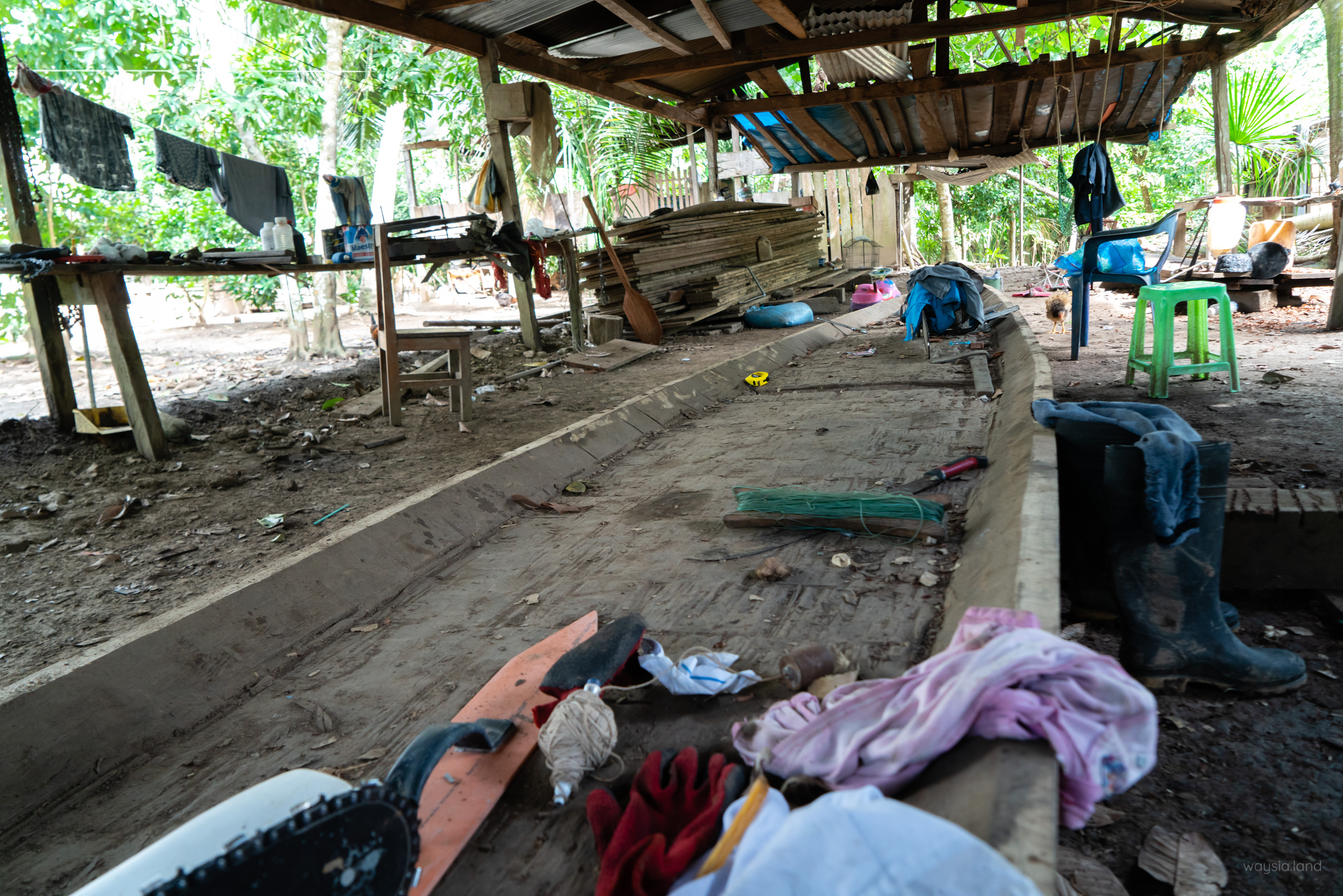
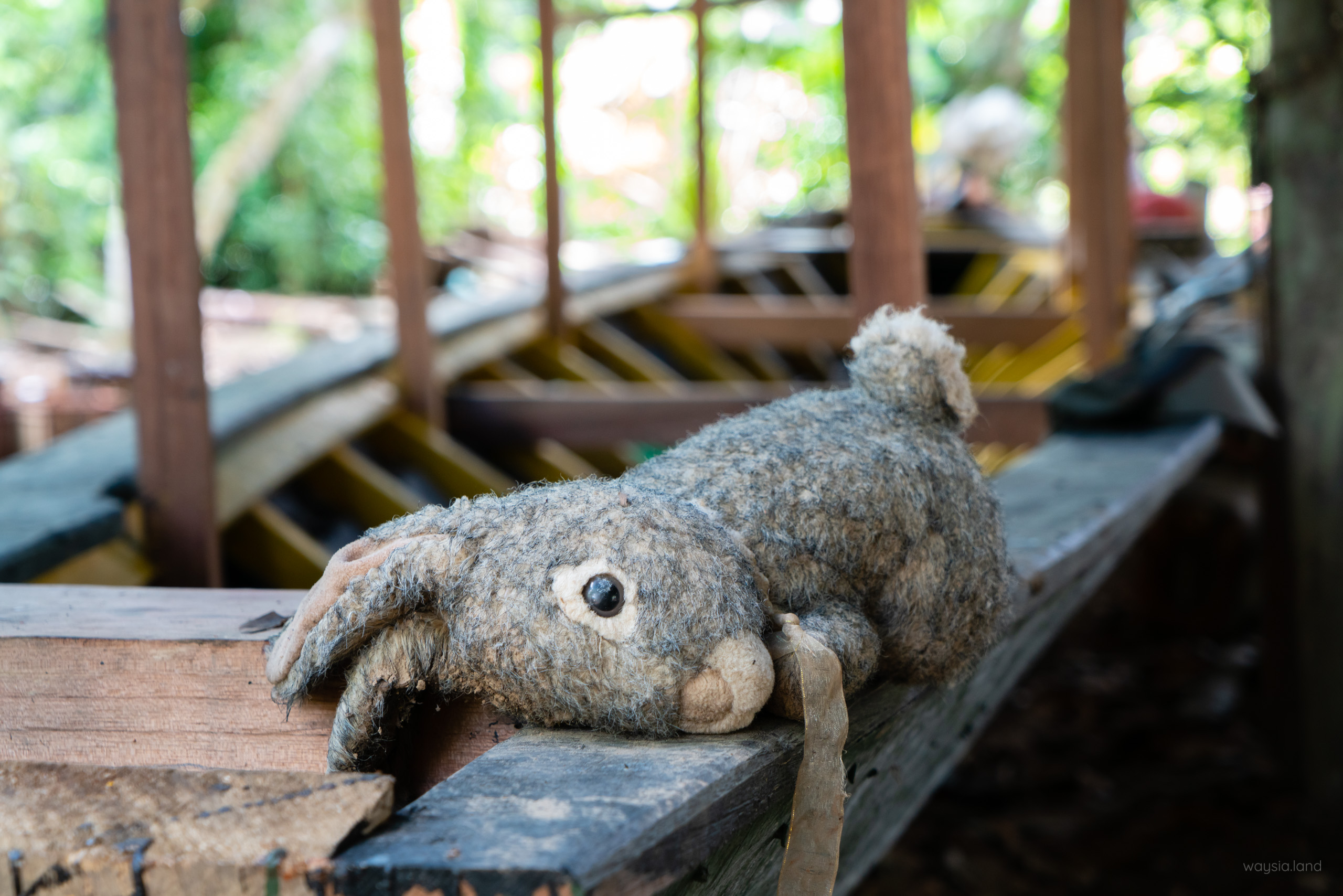
After Ricardo gave us a rundown of the techniques and other interesting information, we wandered over to an ice cream bean tree growing on the premise. Its name comes from the fact that once you open up the giant pod, there are seeds surrounded by an ice cream textured flesh you can eat. We all got to keep a pod!
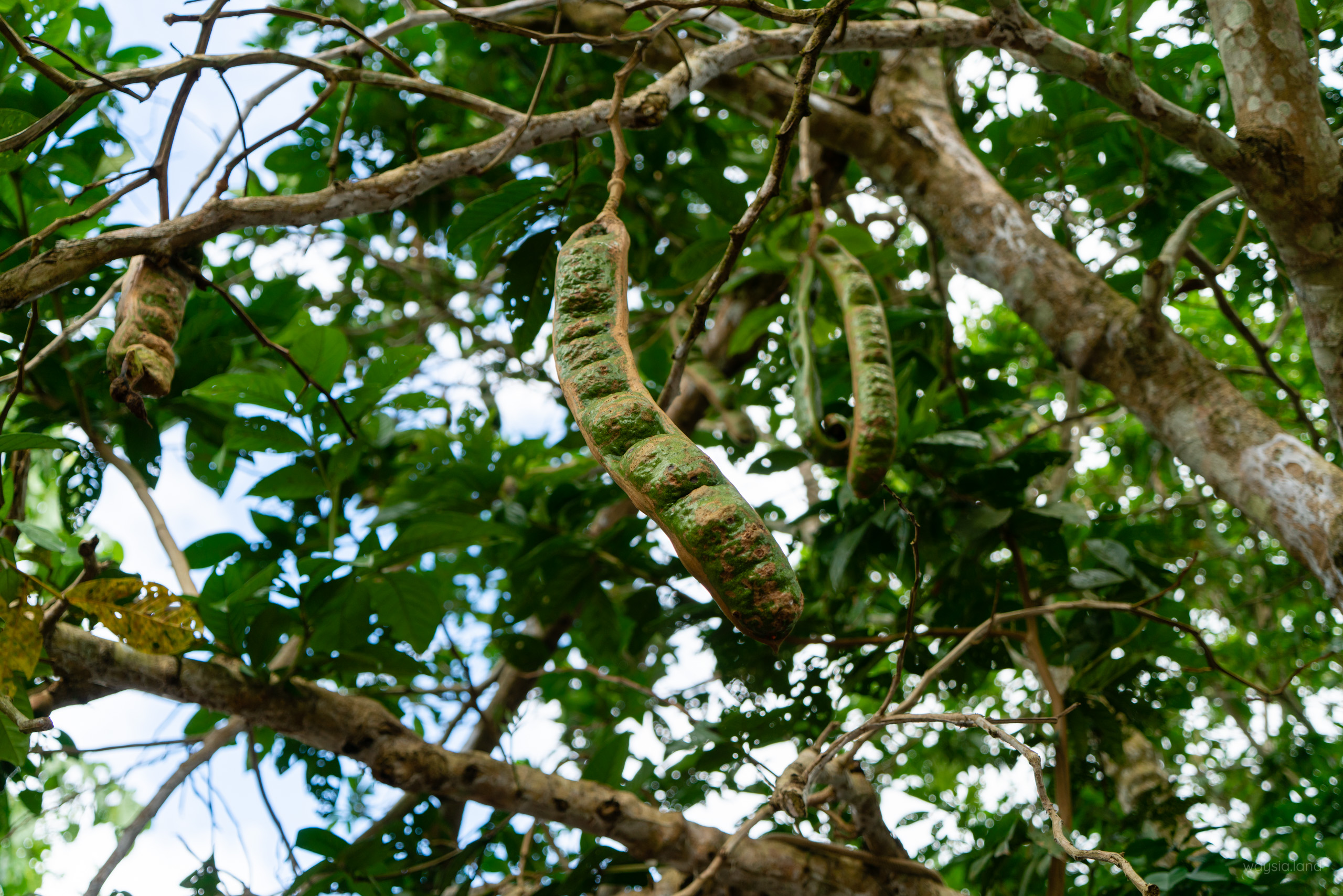
There’s also a small shop in town which sells some creature comforts. As always, opportunities on long journeys are rare, so naturally, we pounced on the idea.
A few minutes later…
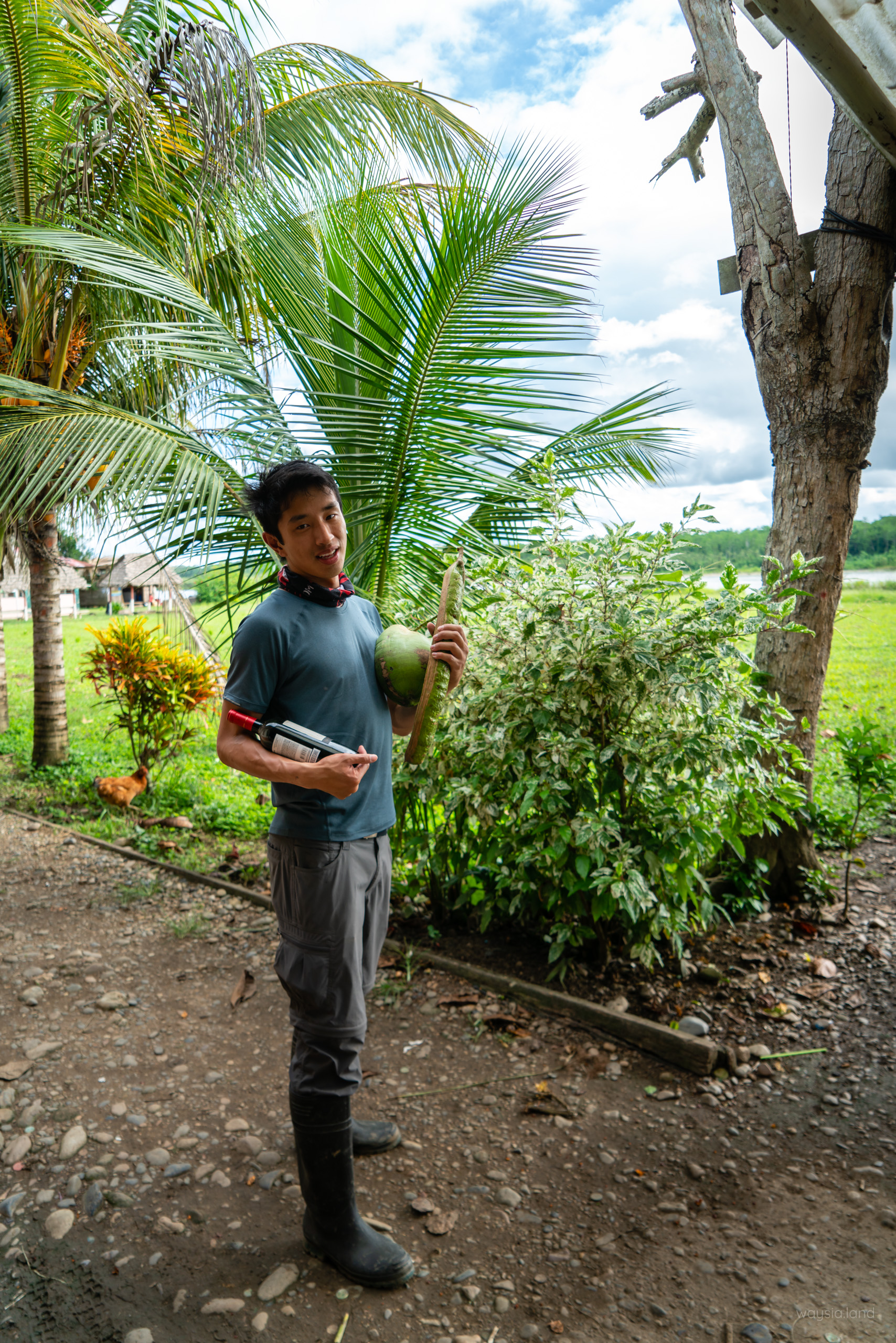
We proceeded to El Dorado Lodge back down the river where we would be staying for the night.
It was around here or the next day where we would get a chance to see the people without contact again. We didn’t see them. We did, however, hear about a guy who came to Manu for the sole reason of seeing them. Knowing that seeing them was by chance only (roughly 10%) he still wanted to see them so badly he booked a private Manu tour. Fortunately for him, he did end up seeing them exclaiming something along the lines of “I can die now” in a JD from Scrubs style fashion. Given what I said earlier about whether ‘people without contact’ is an appropriate name, I wouldn’t really call it an “I can die now” moment. Maybe if he discovered a new tribe? Each to their own…
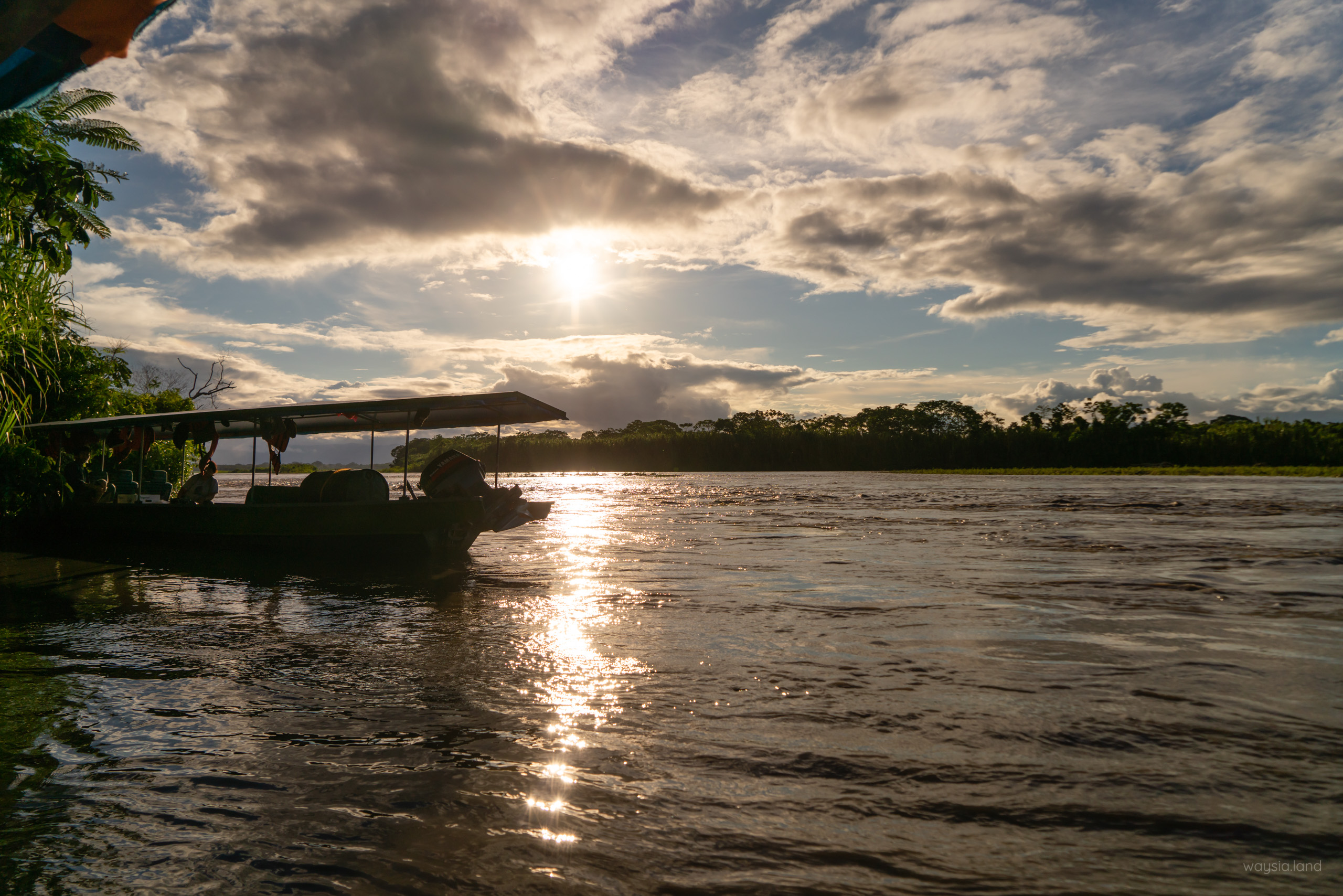
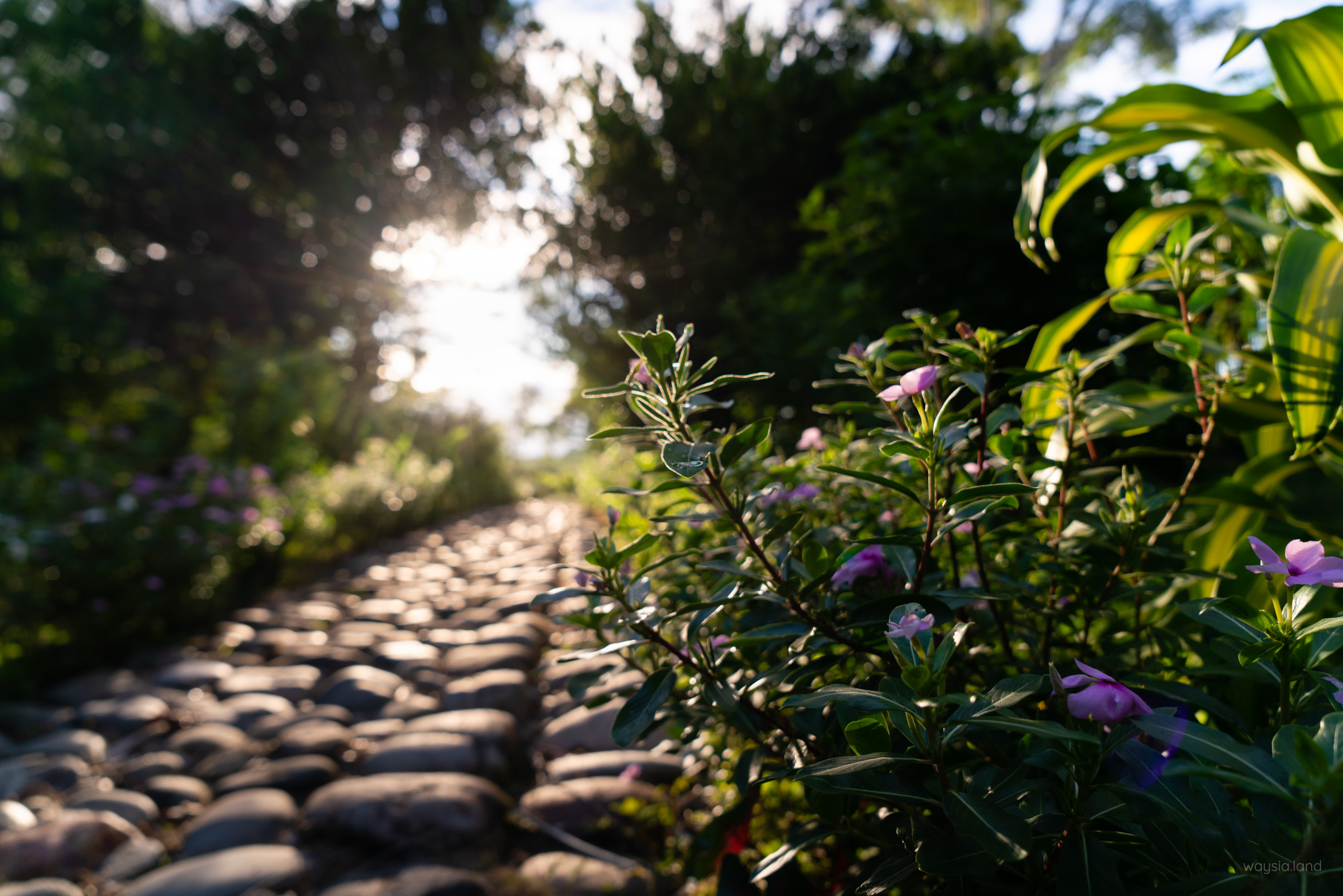
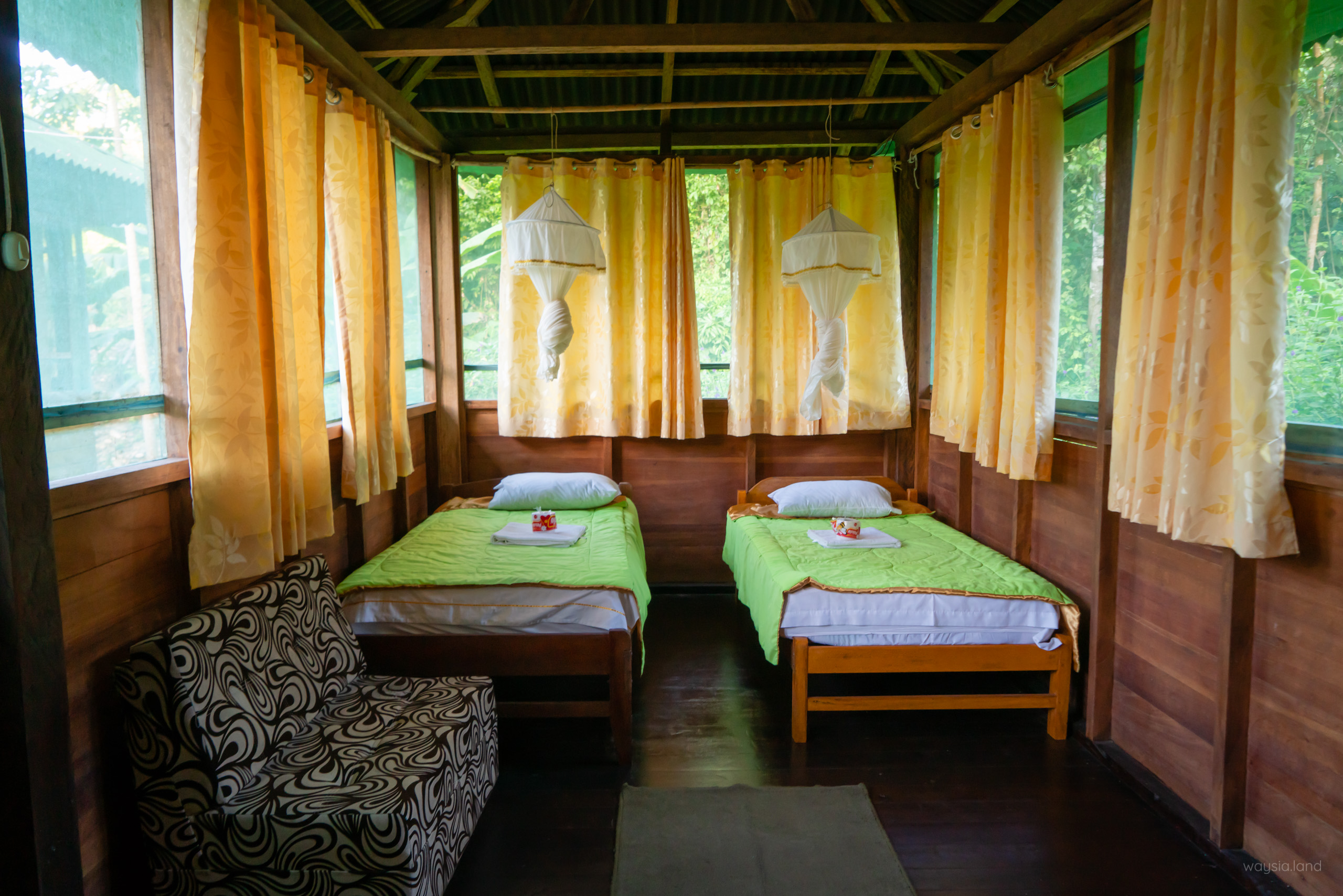
Amazon Night Jungle Walk #2
Today would be another night jungle walk in hopes of seeing more wildlife. There was a trail behind the lodge that leads to a lookout.
Along the path, there was this cute column of leafcutter ants. Another crazy thing I’d never seen before.
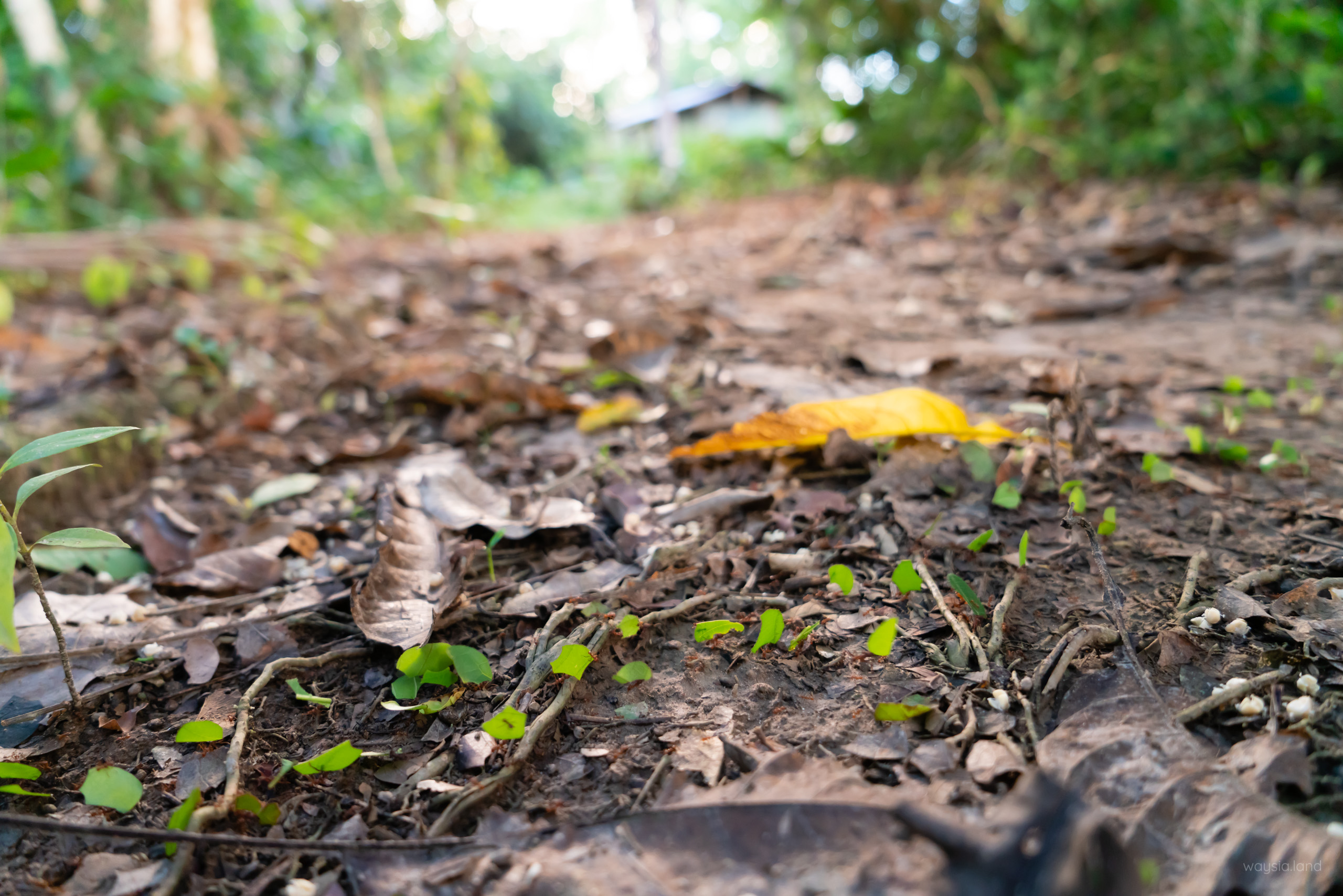
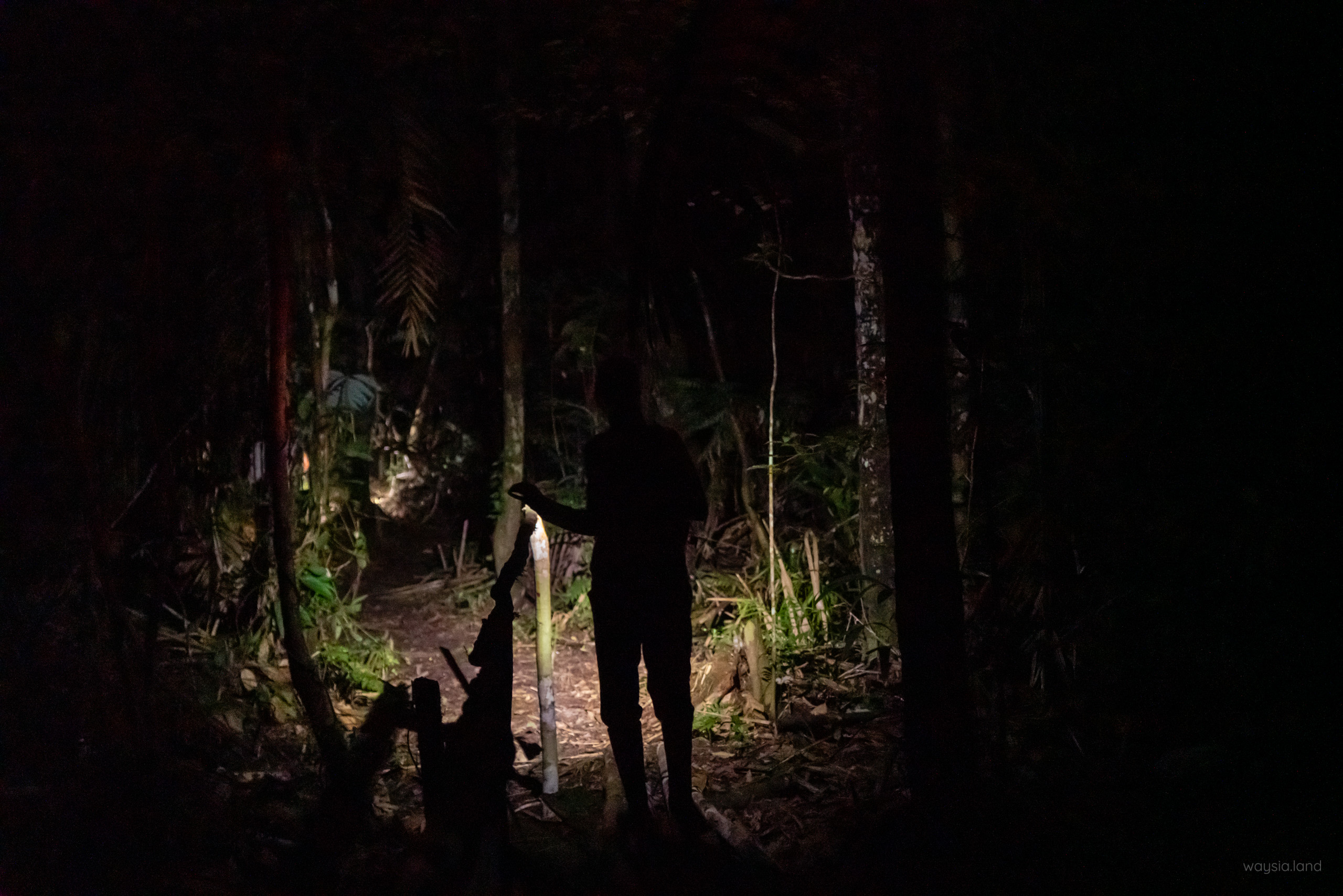
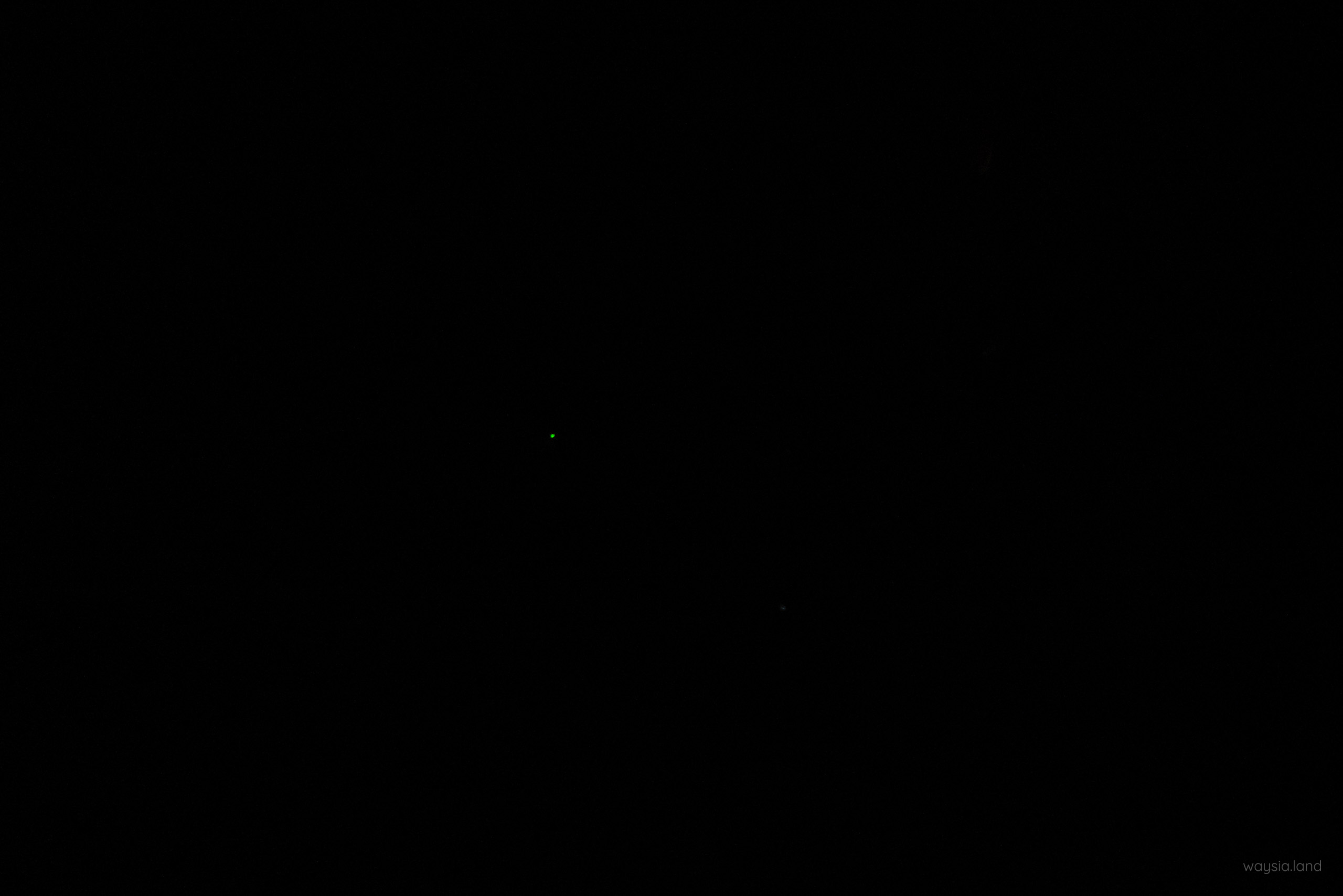
Darkness fell and it fell quick. Unlike before, we didn’t stop to examine every small creature no matter how tempting. Our goal was to get to a lookout which looked out onto some kind of mud or clay bog. There was a chance of seeing a larger ground mammal like a tapir come through here. The viewing platform was huge, large enough to sleep several dedicated people and even had mosquito nets in place. We waited a decent while and saw a lot of bats, but nothing else came through. Sadface. On the way back we did see a rarer monkey thanks to Audrey’s eagle eyes, so at least there was that.
We closed off the day with dinner and the wine we had bought. It was Audrey’s last night so we would be saying goodbye tomorrow and this was as good as an excuse as any to drink it. This place was still middle of nowhere so we packed out our empty bottles to help do our part.
Manu Amazon – Day 5 – The Clay Lick and Hot Springs
Bad weather overnight rained out the trail to the clay lick so we would take the boat and go an alternate route. Clay licks are walls of clay that macaws lick to help their diet. So far we had seen a lot of macaws but they were at a very far distance.
As luck would have it there was a fallen tree over the river we were heading down. There was a small clay lick that we had just past by which is what we had to settle for. We saw dozens of macaws and parrots but the majority were sitting in the trees or flying overhead rather than licking this clay.
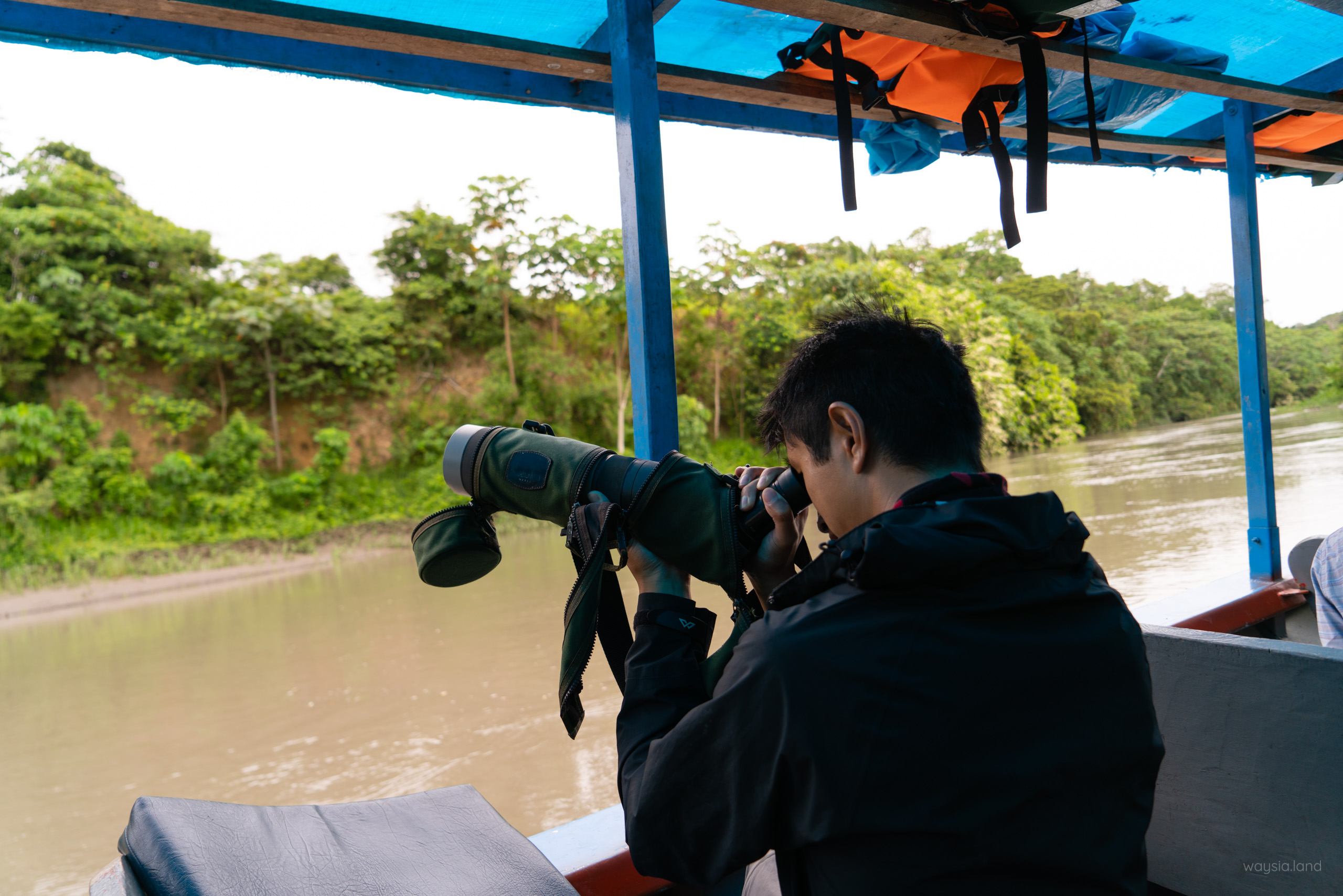
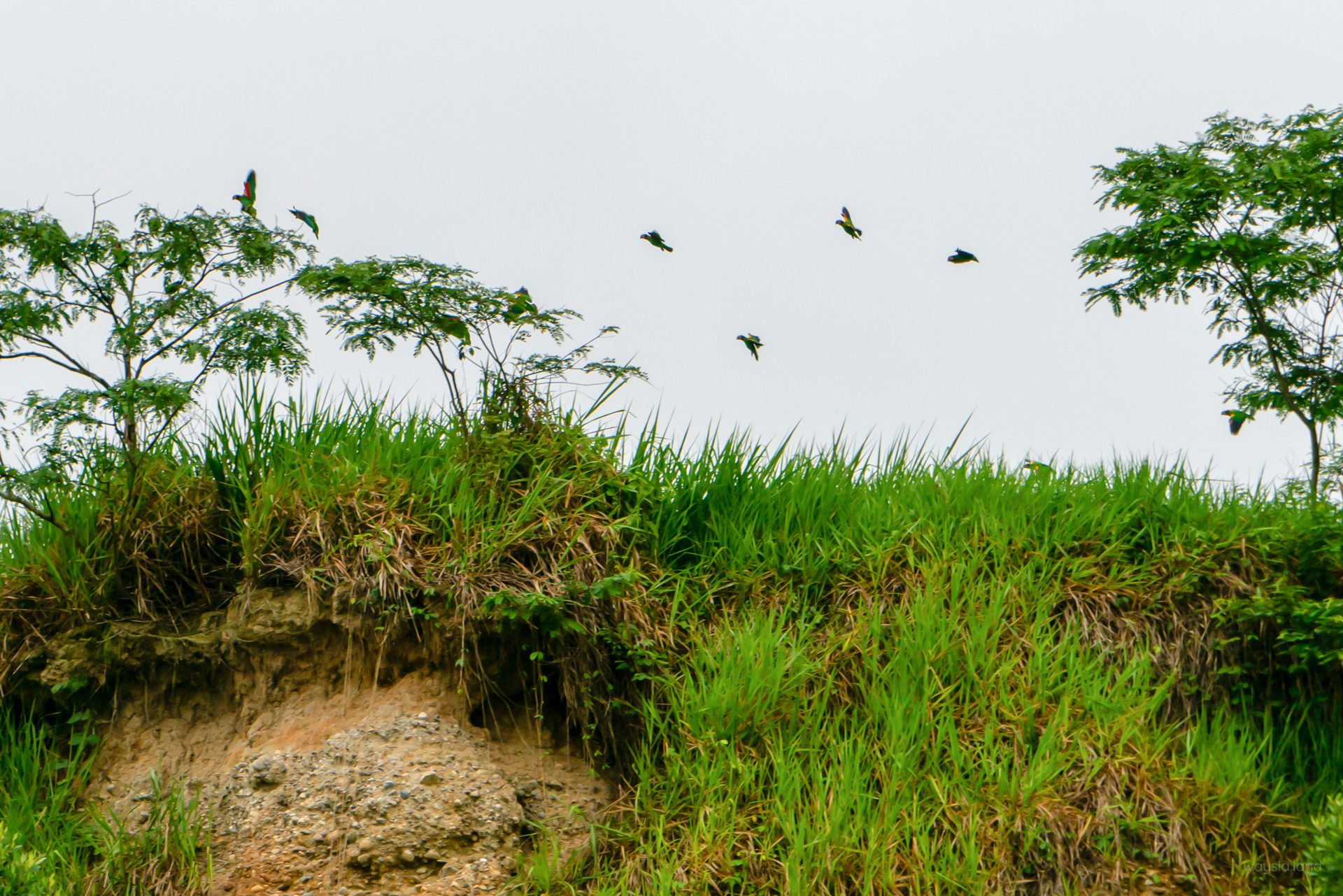
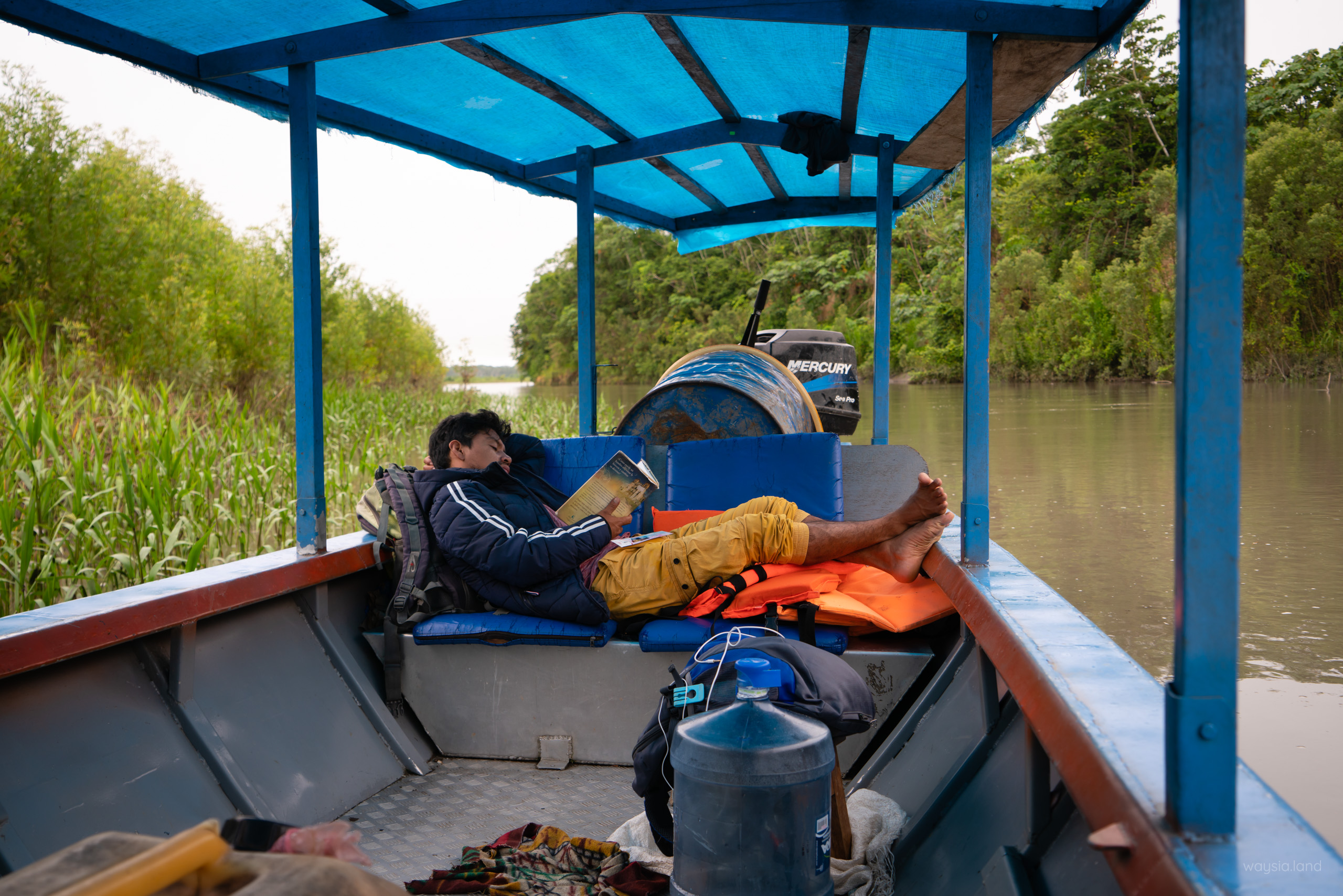
We continued our journey back to civilisation but not before stopping off at a natural hot spring. It was only a few Sols so it was well worth it.
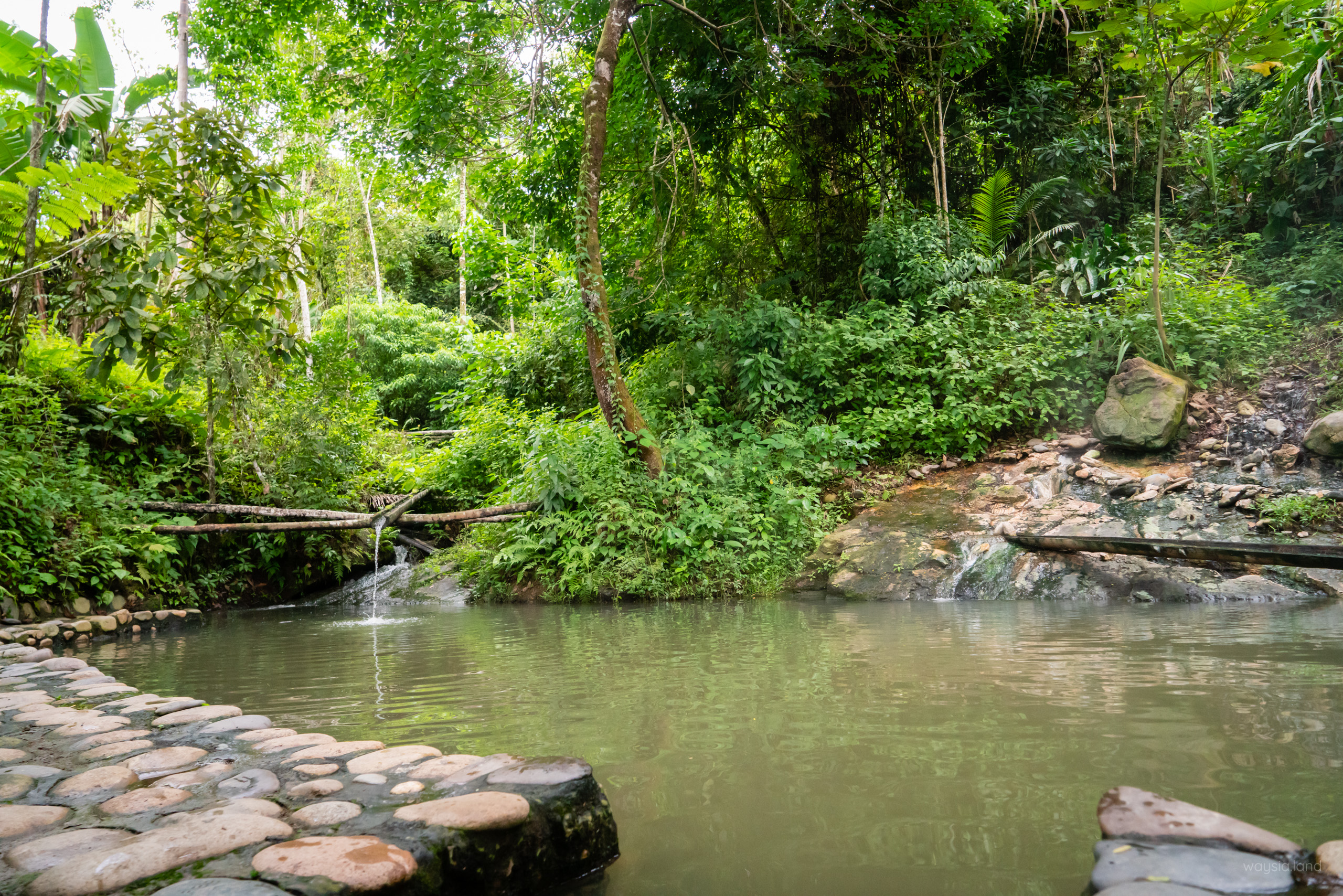
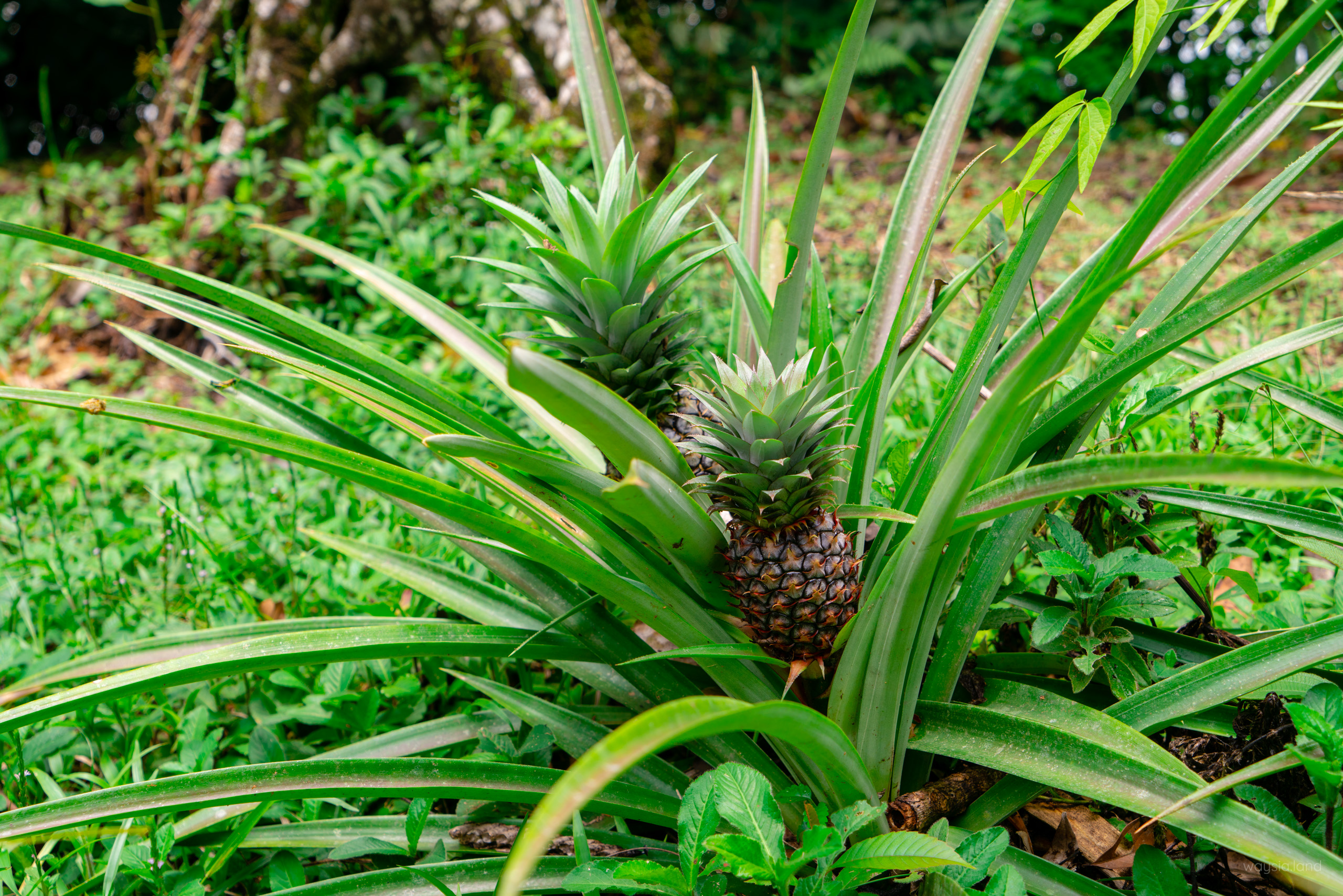
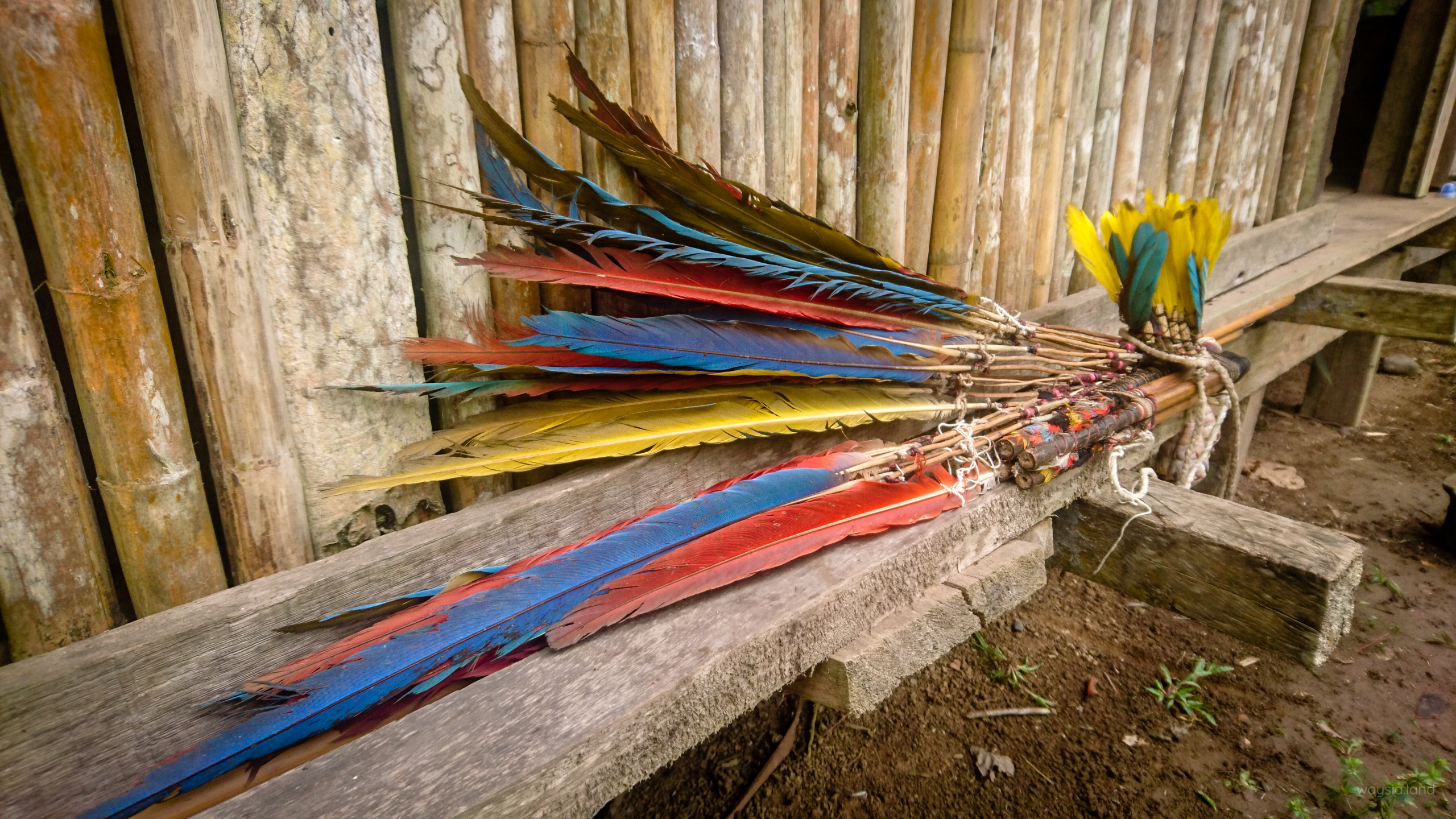
Now was the perfect time to drink our coconuts. Our guide had made us bamboo straws which was cool. I forgot mine so the hot spring folk ended up chopping me a new one 😅
In Thailand, when you buy a coconut, the green shell is pre-hacked to a degree so when they sell, they give it 3 more chops making a lid for you to remove and put your straw in. This hole is large enough to put a knife or spoon in to eat the inside. Everywhere in South America, they will typically drill a small hole in it for a straw. So when you’re finished drinking, you can’t eat the inside.
Although they didn’t drill a hole, the opening in mine was too small. As our guy’s had machetes, I got them to crack it open.
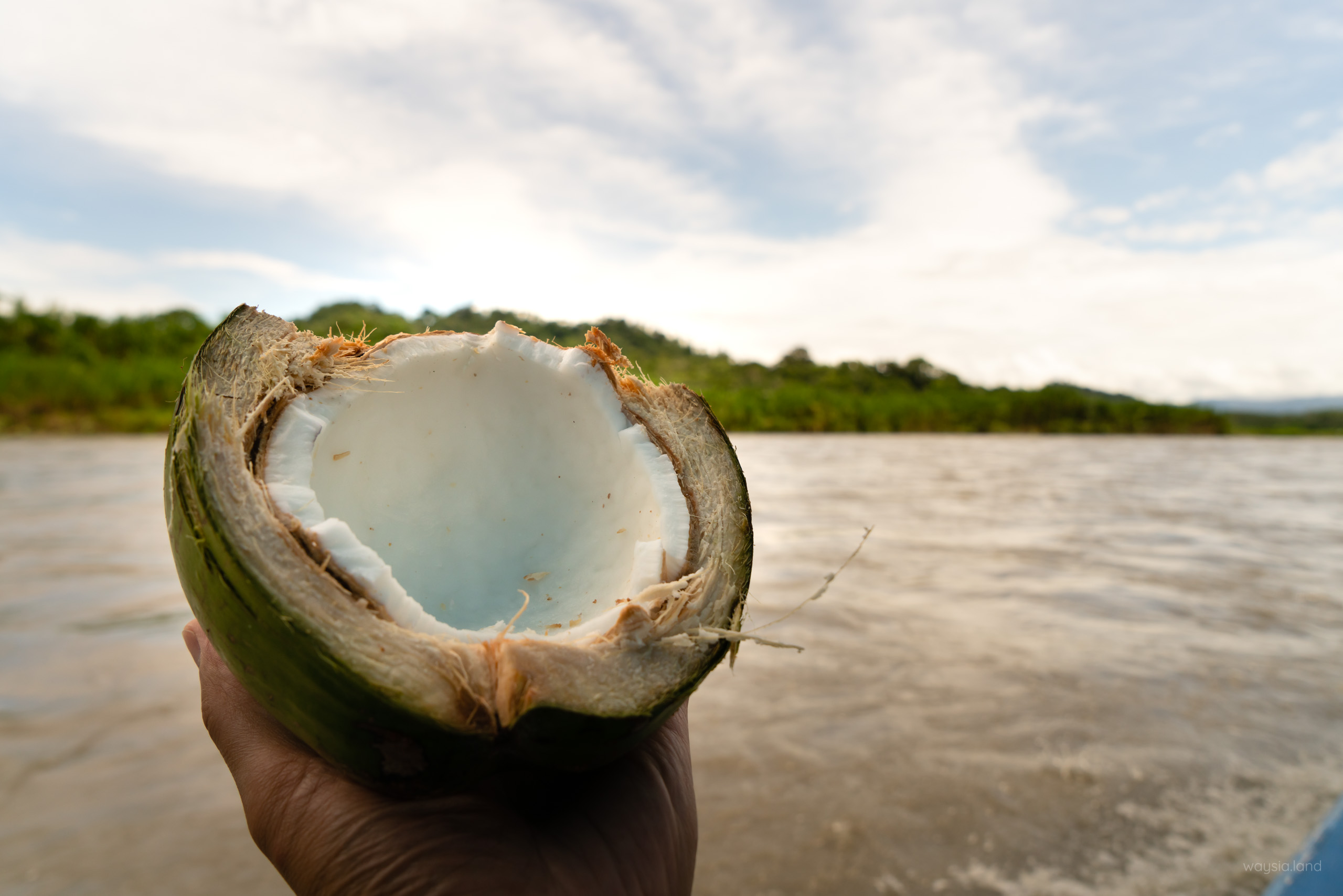
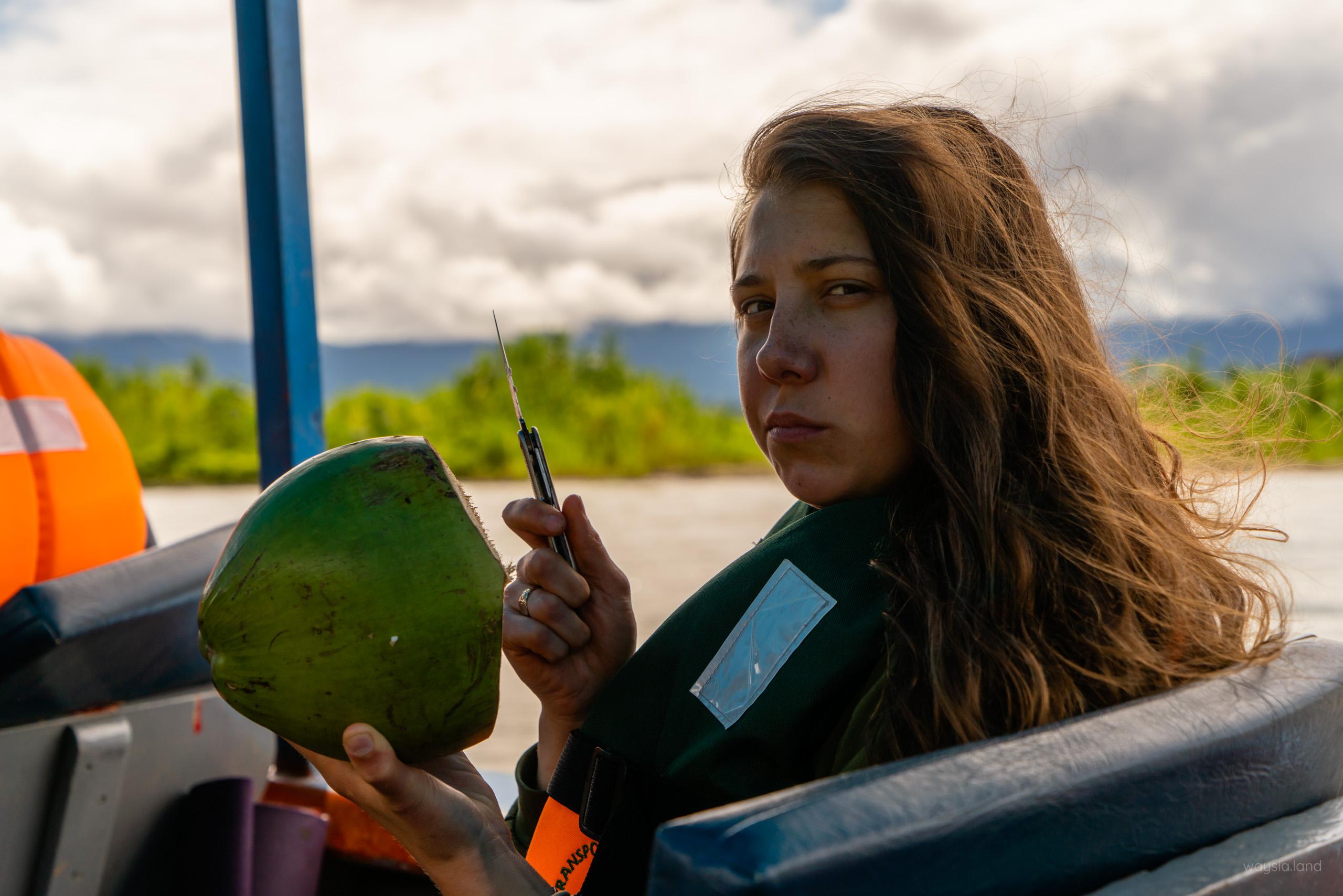
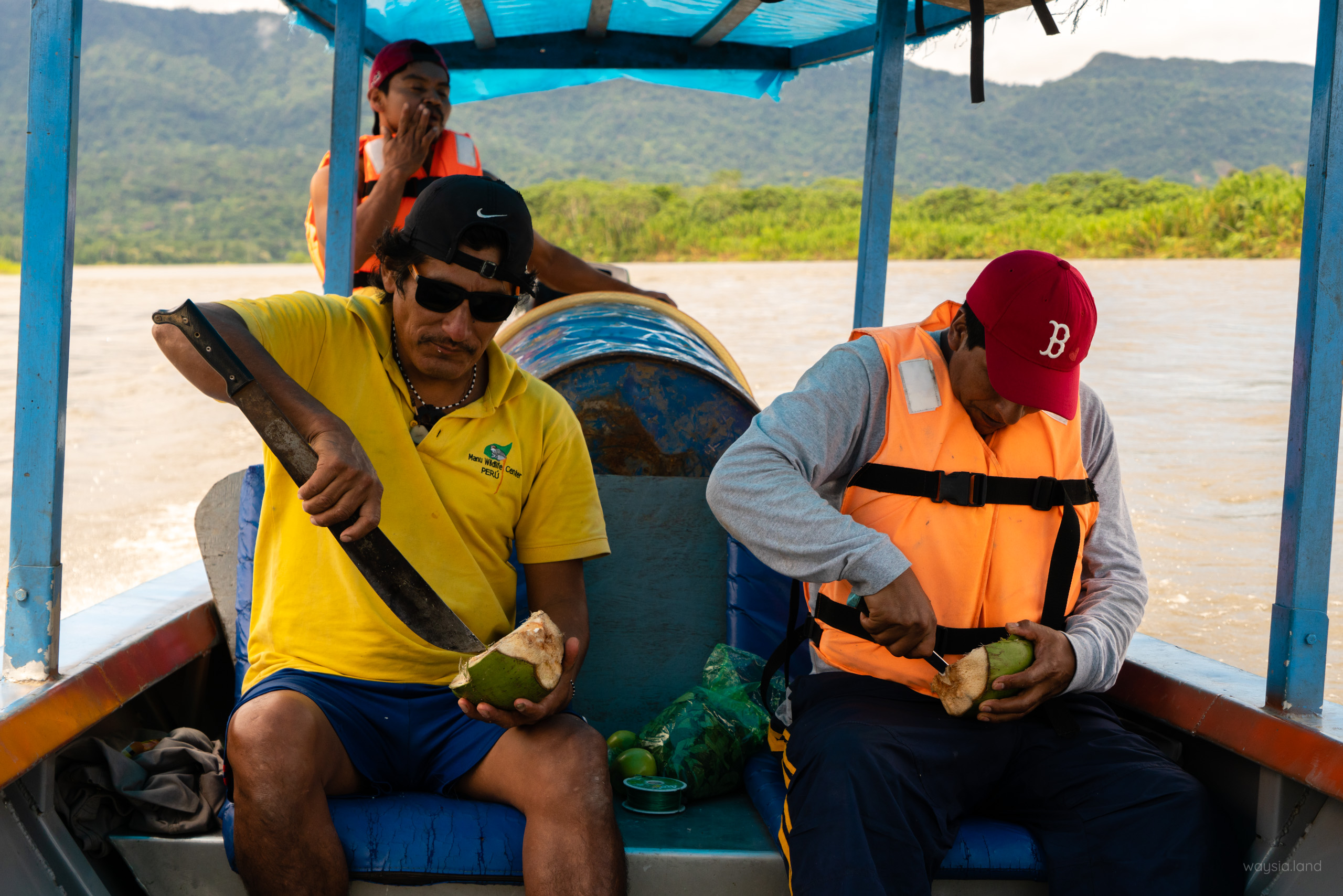
We finished our coconuts, bid farewell to Audrey and continued on our journey until we disembarked at Atalaya.
I hadn’t had a Coke Zero in a while and I really wanted one. My Spanish was limited but I knew enough to ask if they had any. The important things. I asked about 4 shops but none of them sold it. Damn.
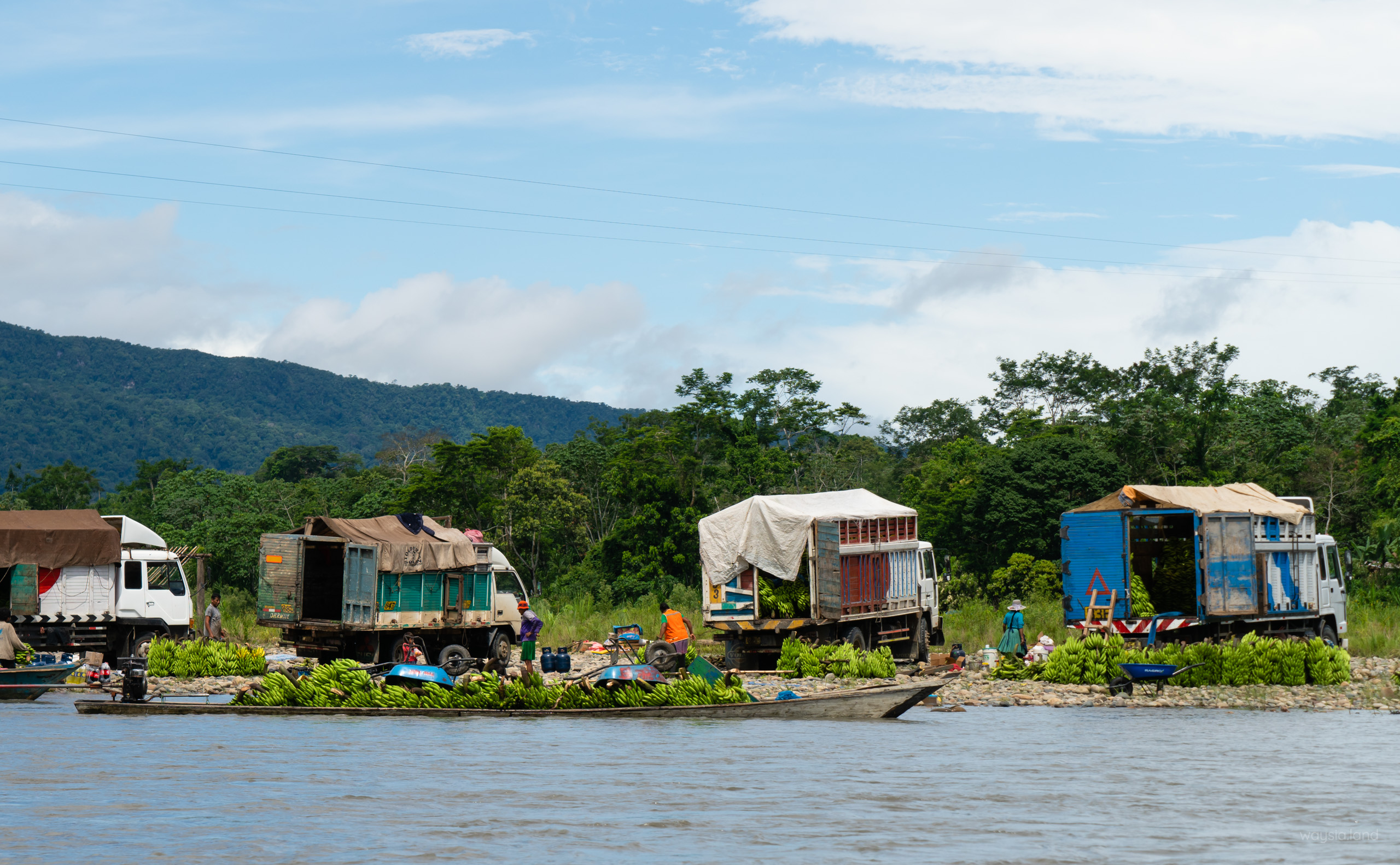
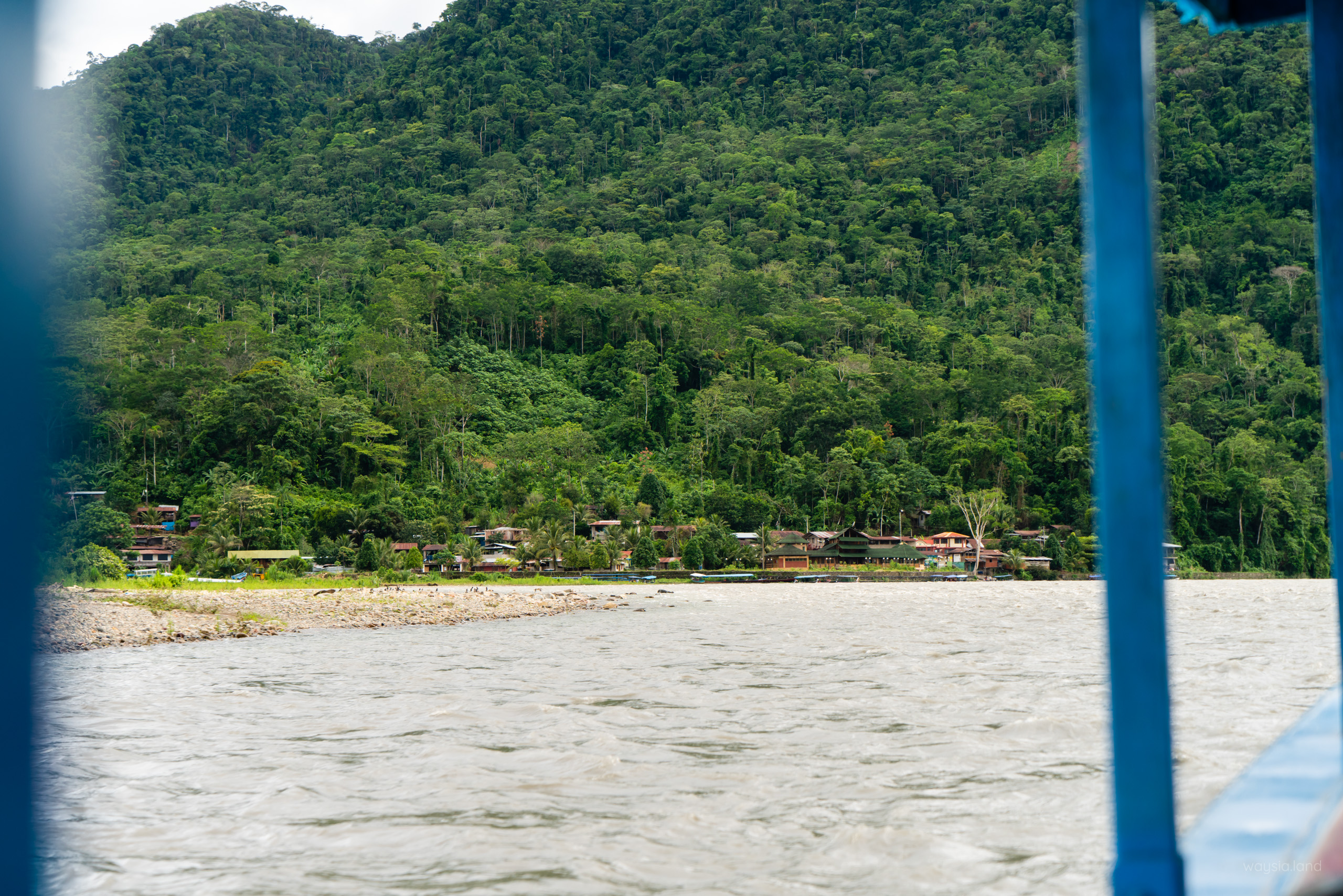
Bamboo Lodge
We were staying at Bamboo Lodge tonight, it was a bit further out but Kathy had to catch a relatively early flight and this would mean being able to sleep in a bit longer. There was also heavy machinery scheduled to come in the opposite direction and these roads would offer almost no chance to pass once they got moving.
Me and Kathy each got own lodge! There was an upstairs with 2 beds, downstairs with 2 beds and an ensuite with shower and toilet. This was the last place we would stay at and I think all the lodges we stayed at were really good considering we were in the middle of nowhere.
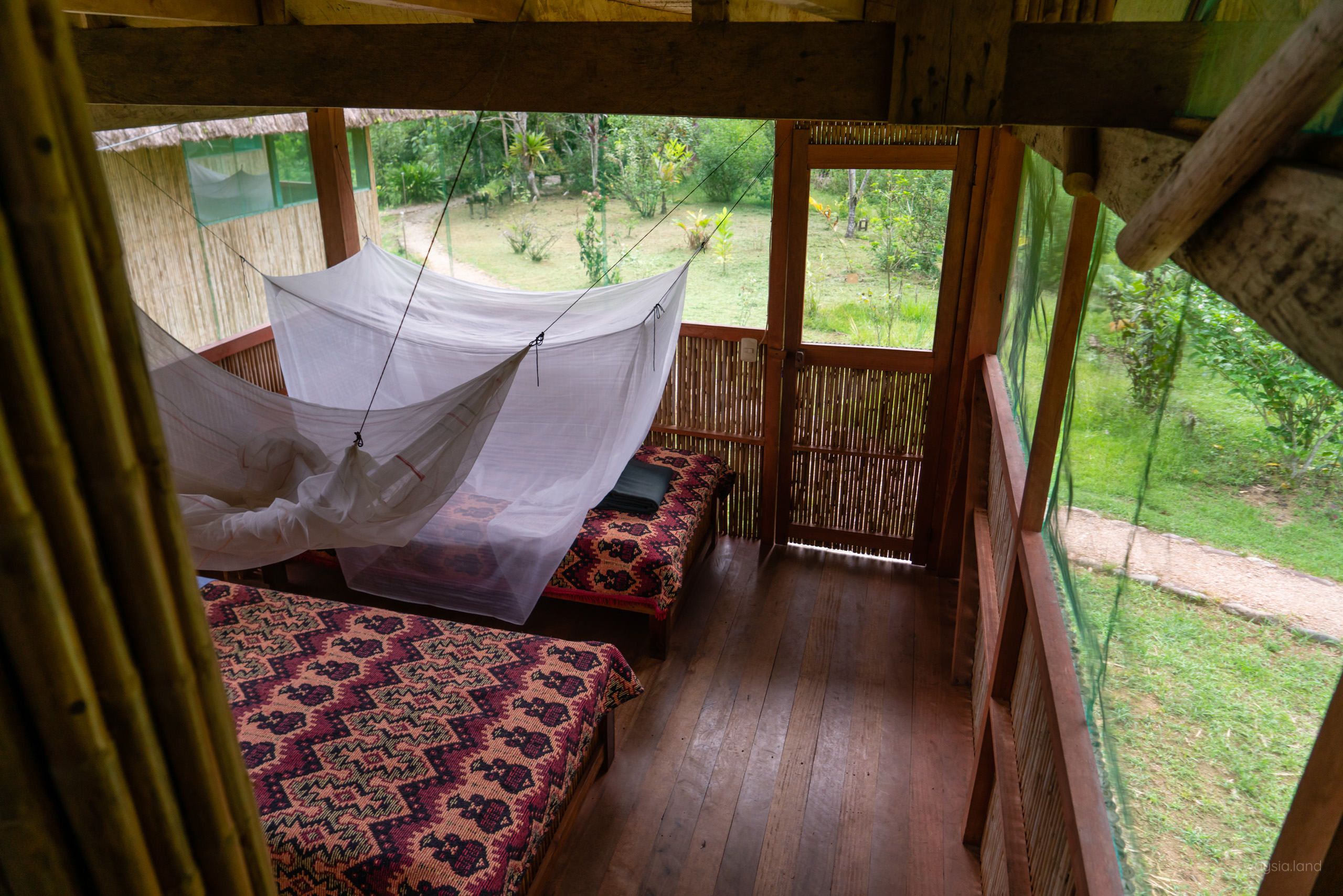
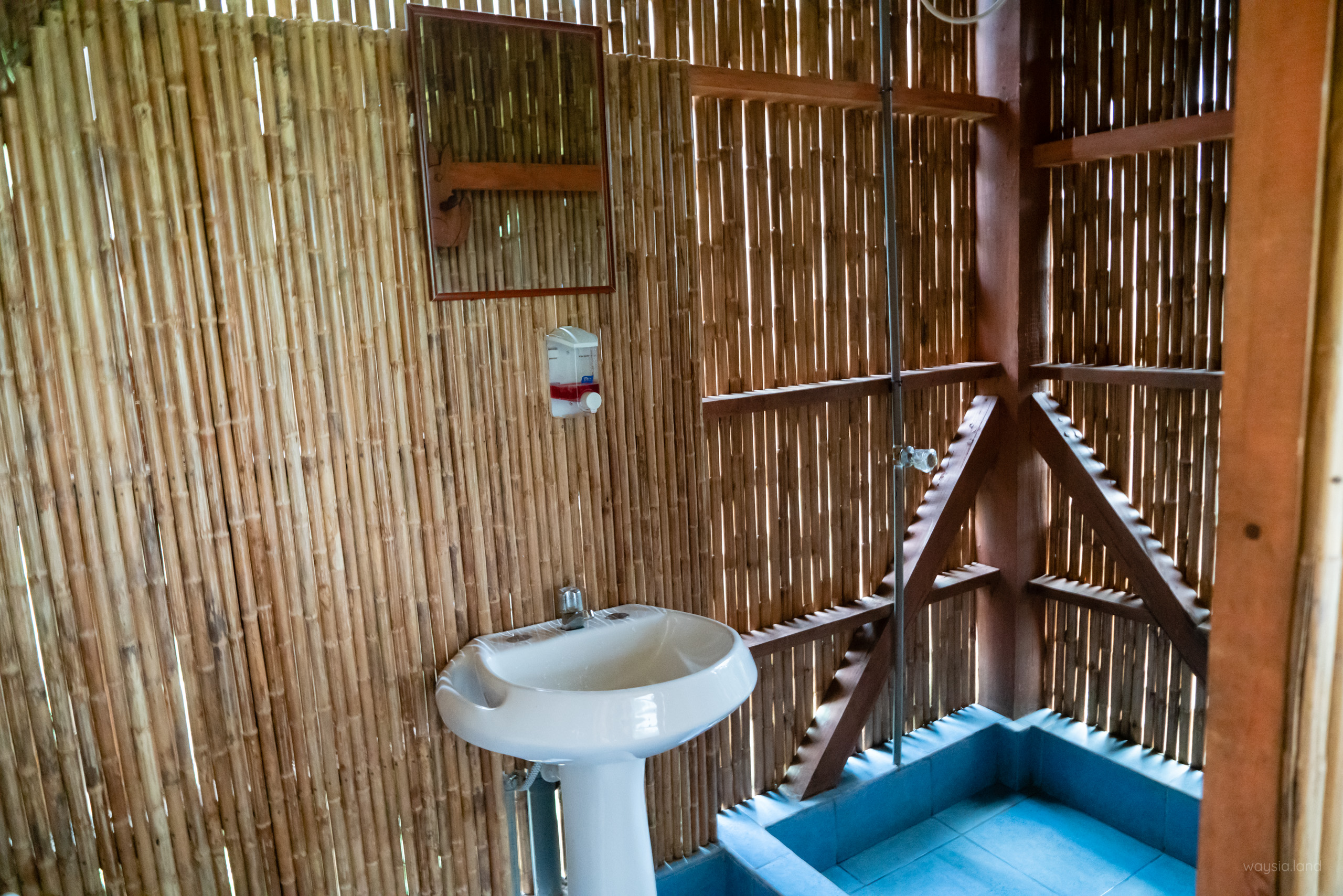
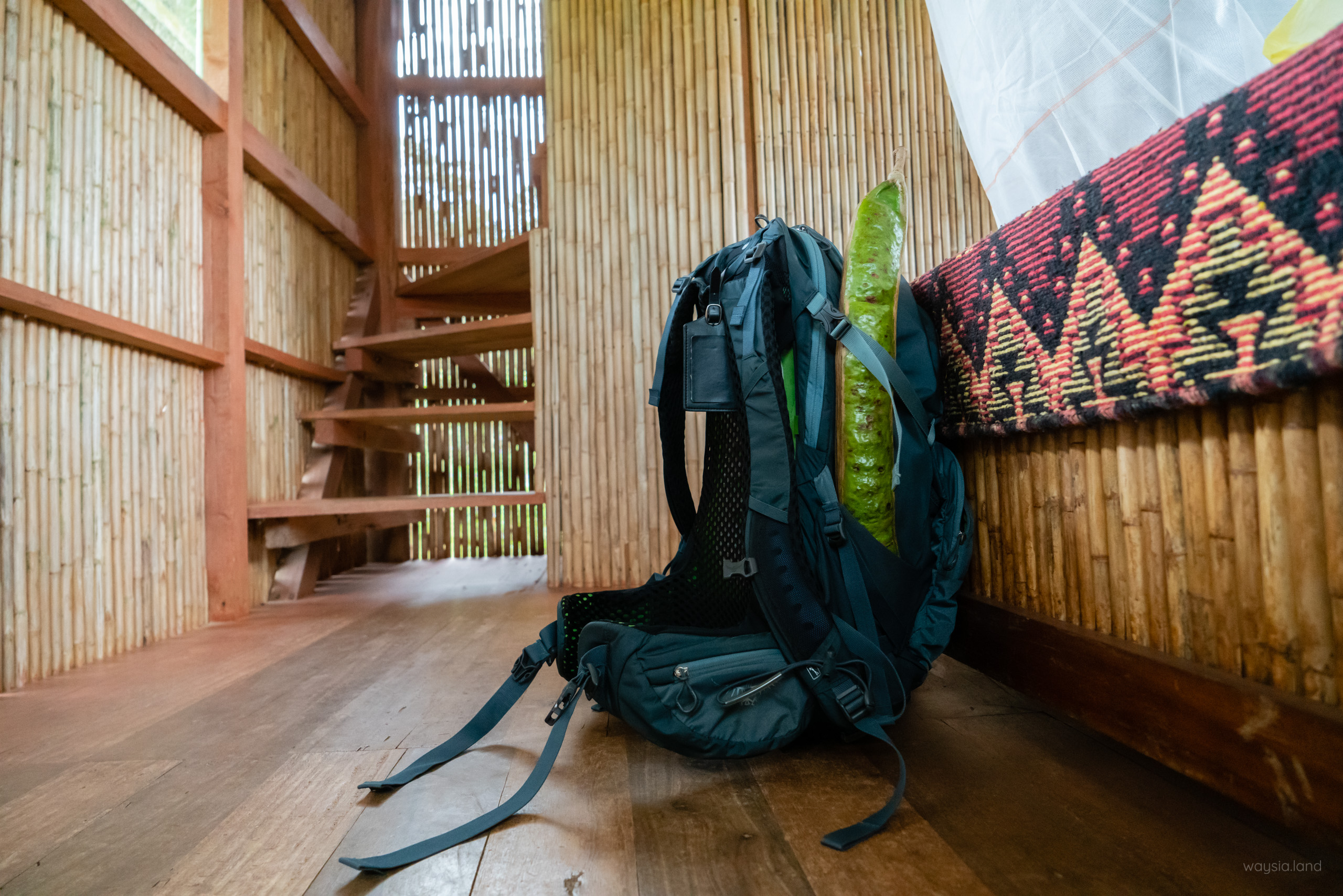
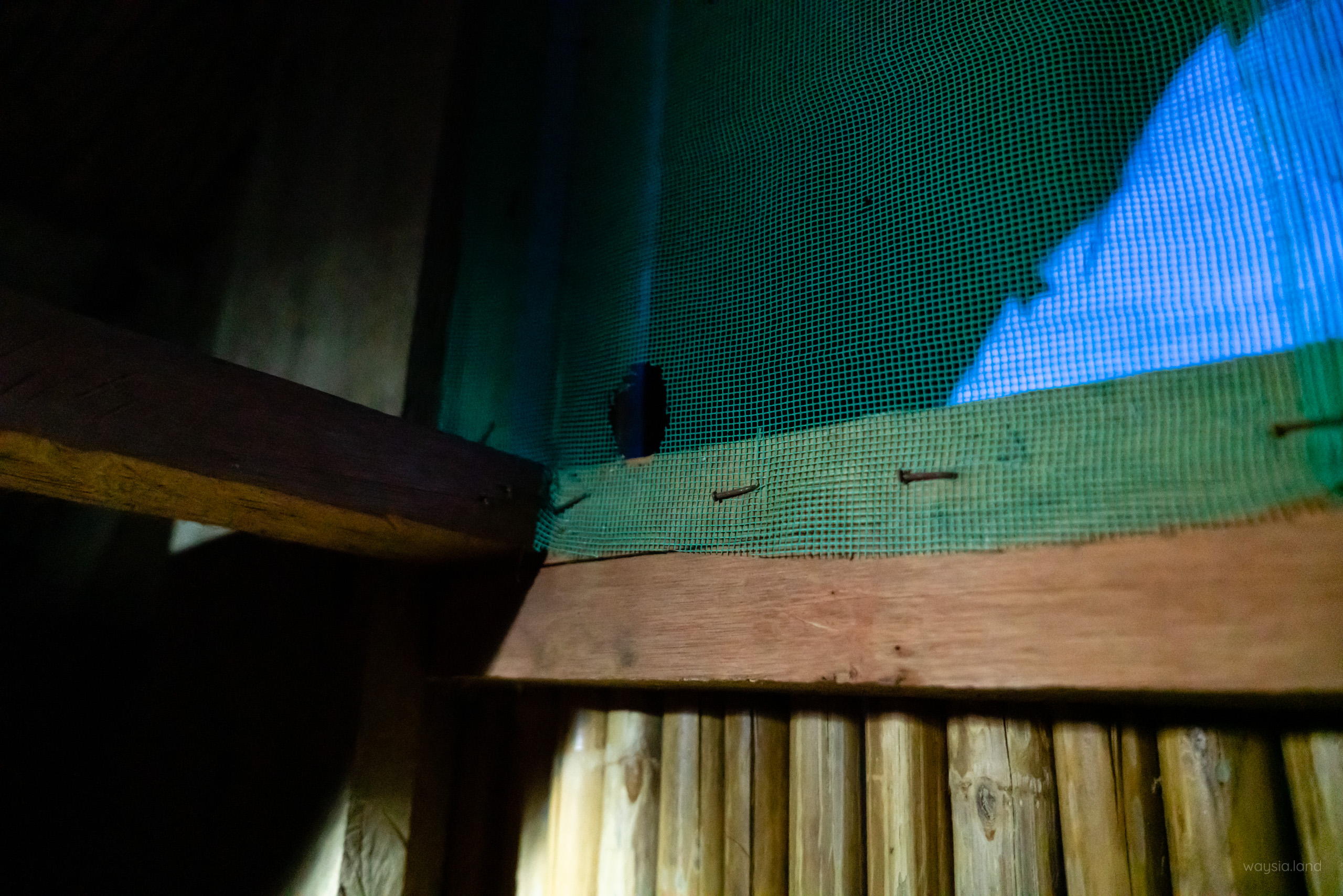
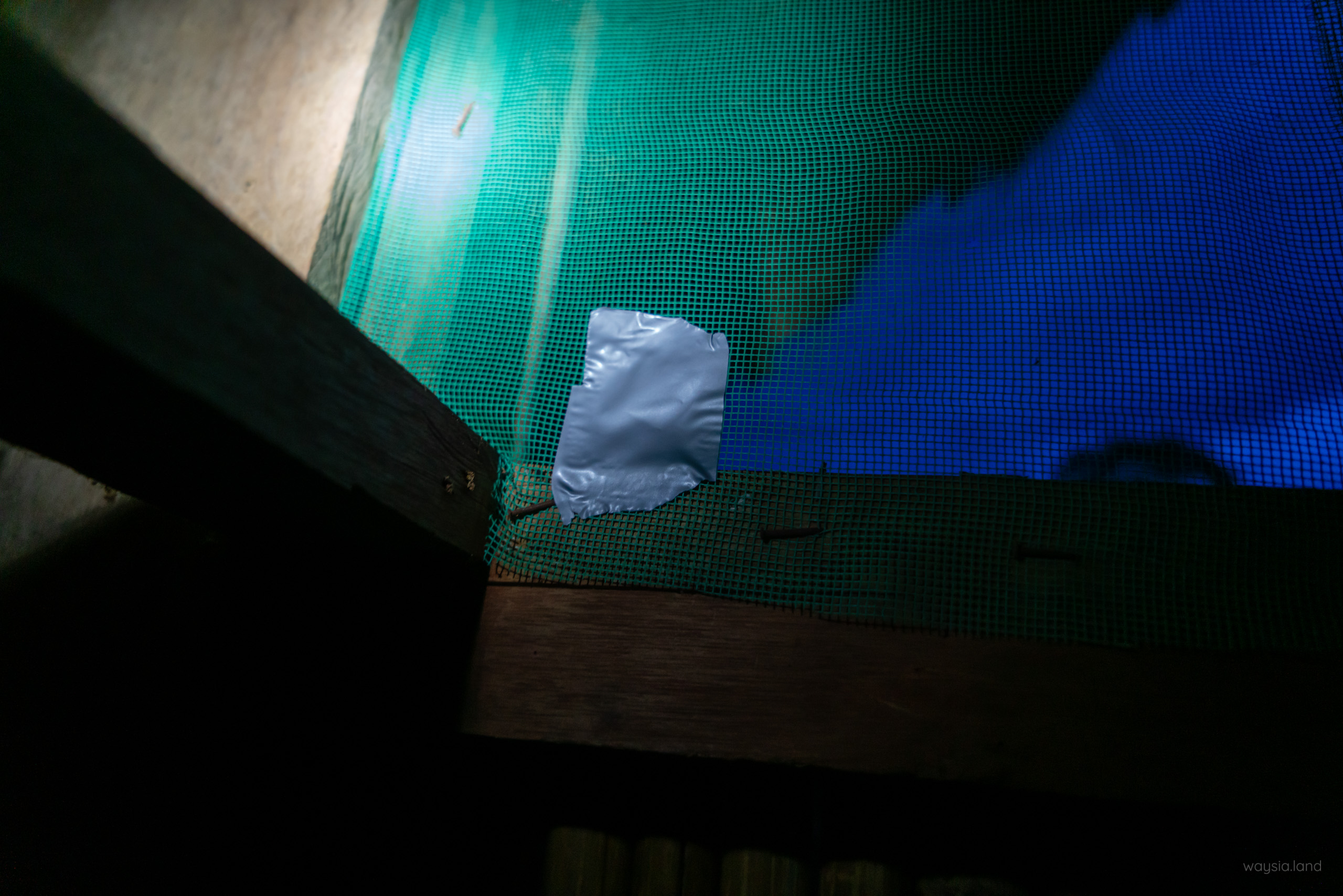
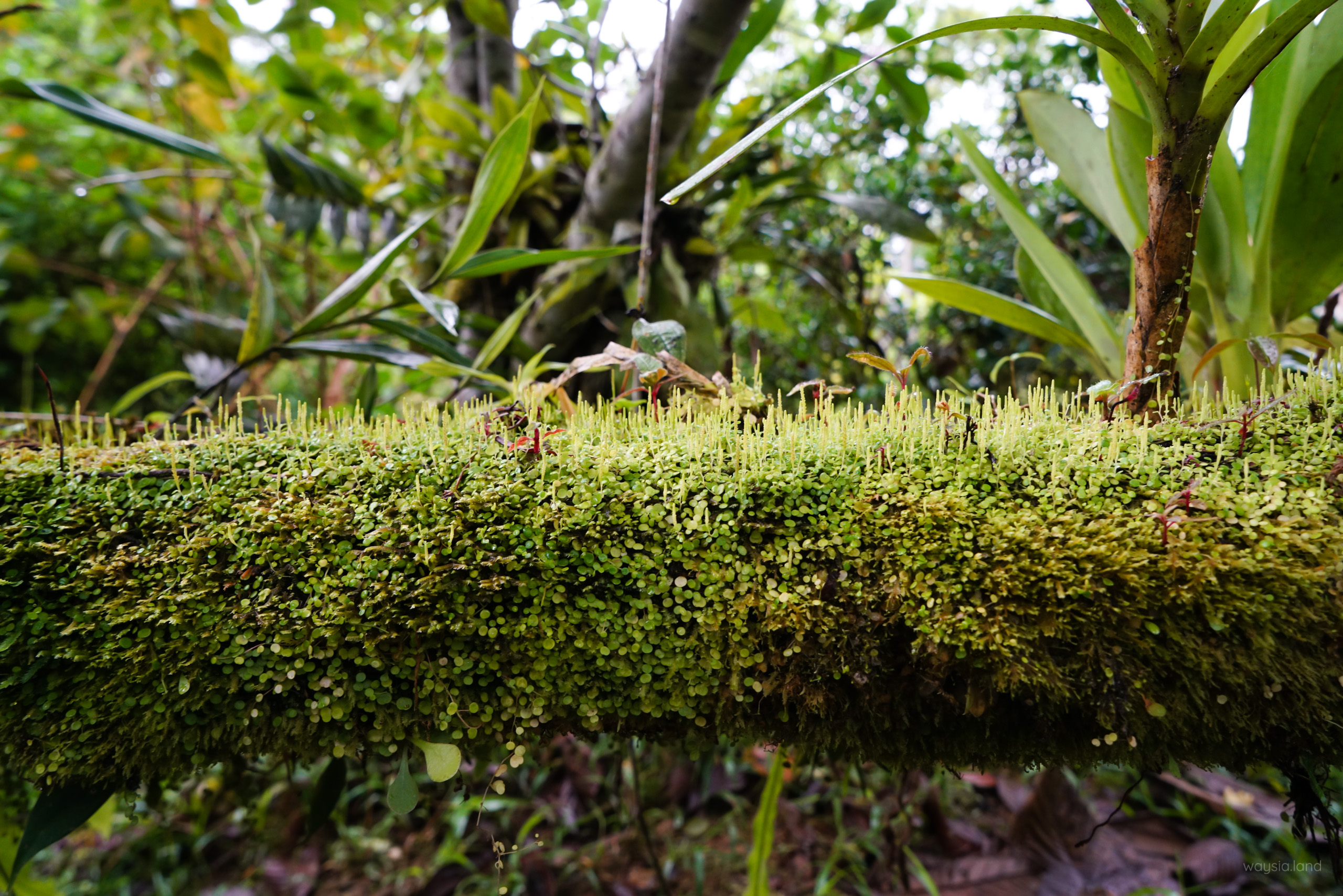
Manu Amazon – Day 6 – Is it over?
It was the last day and there was a box of leftover snacks that needed to be eaten. I happily helped to eat the chocolate snacks.
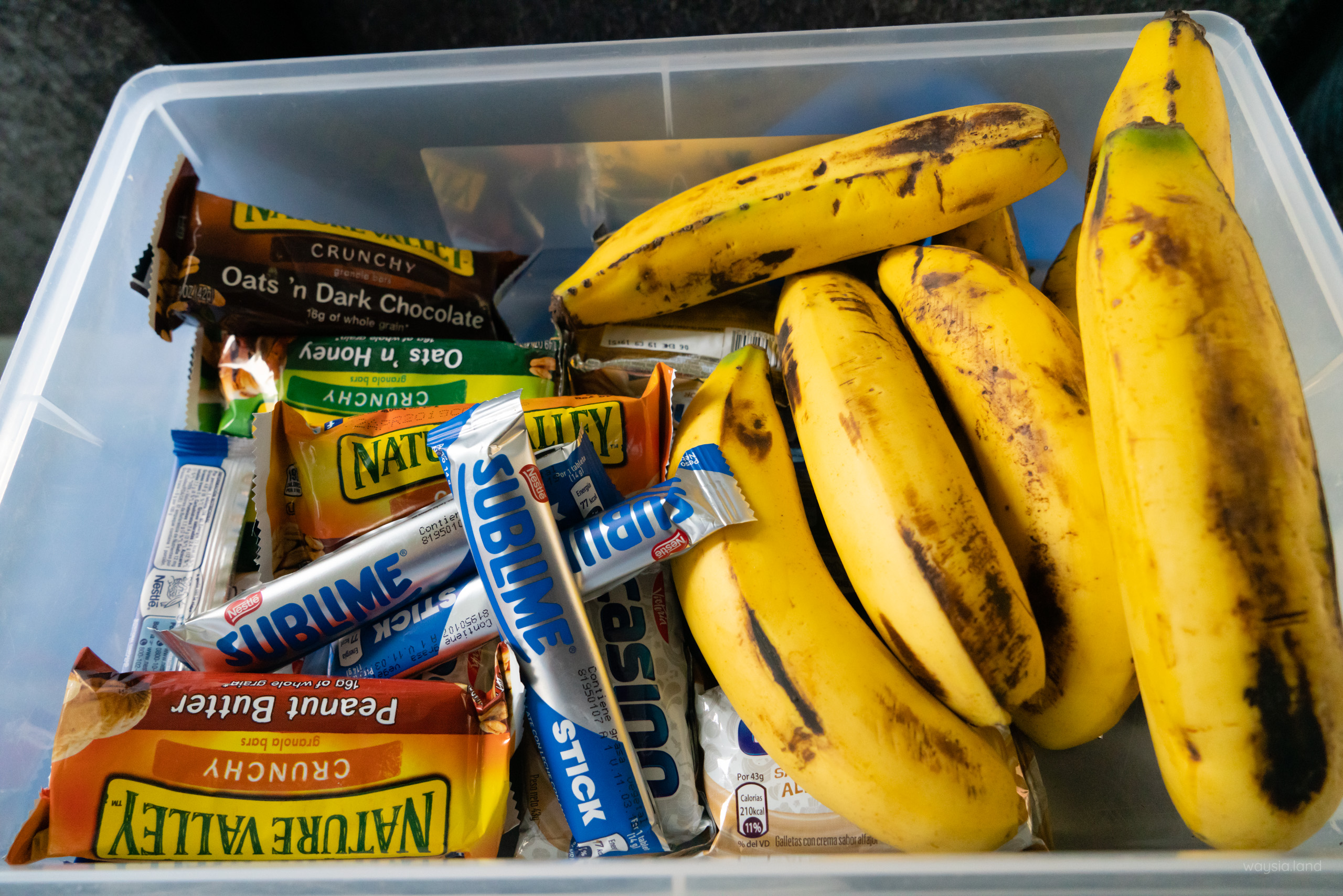
Several birds came to the lodge that morning. Ricardo mentioned hummingbirds should be there but I didn’t see any. It was possibly too late in the morning already. They aren’t native in Australia so I hadn’t seen one in my life so far. Next time…
After we got into the van, I succumbed to the idea that I probably wouldn’t see anything else on the trip. It was unlikely.
However, as we made our way up and out of the cloud forest someone yelled out something.
We all got out.
It was the red and black Andean cock of the rock! I only had time for this quick out of focus snap but it still counts.
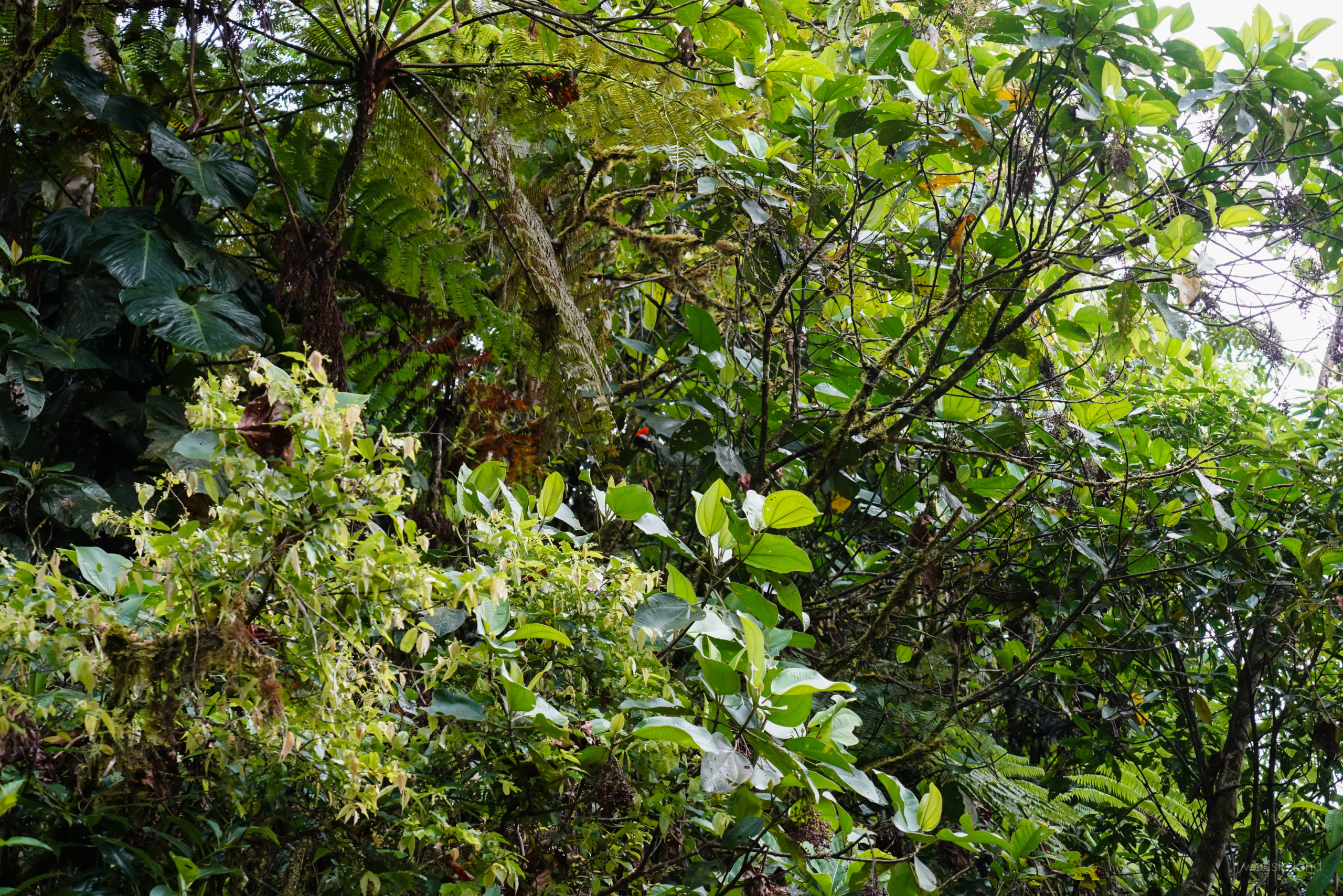
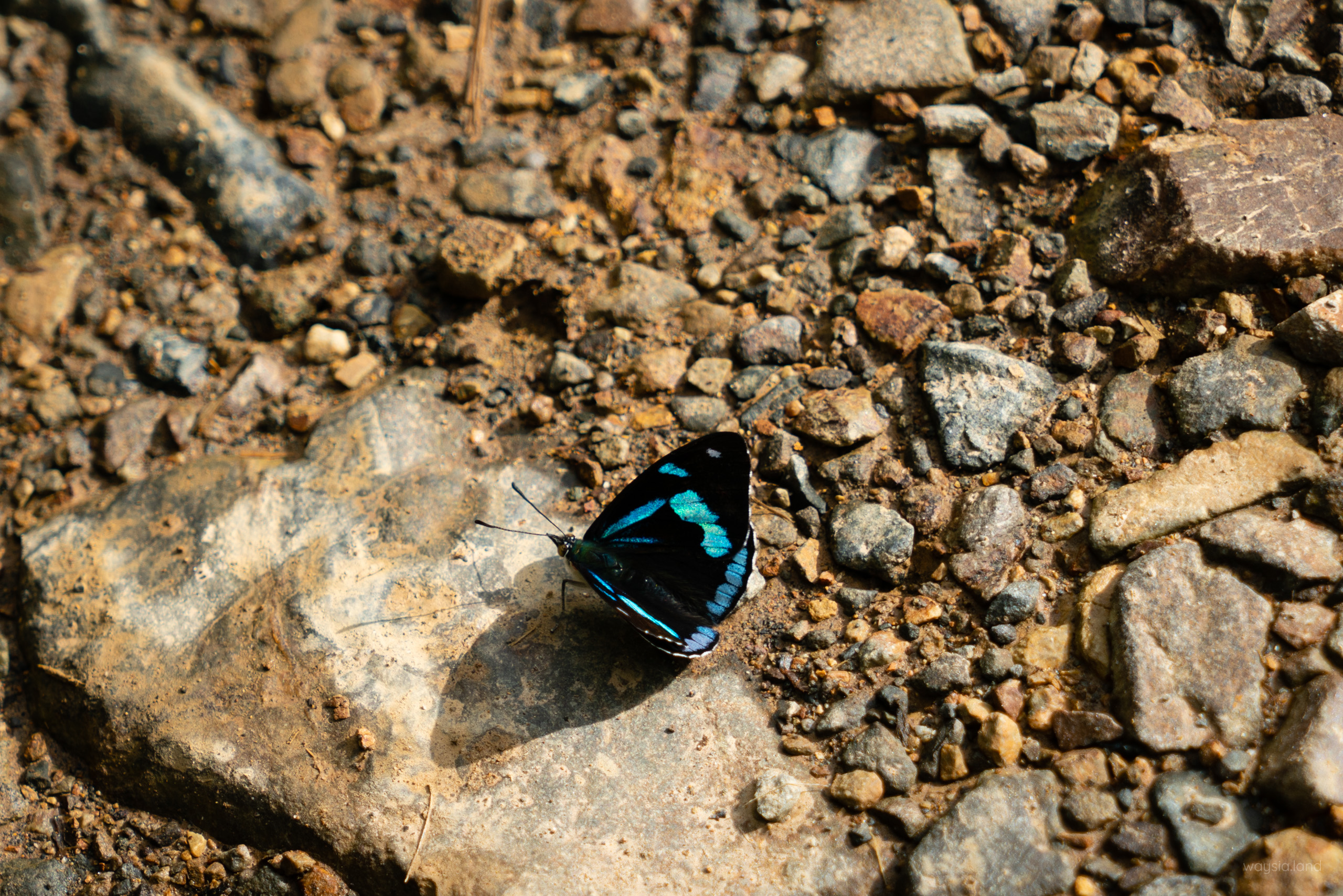
We bid farewell to Kathy at the airport and Andreas, Daniela, Ricardo and I all celebrated that evening at Green Point, an amazing vegan restaurant in Cusco. I’m not vegan but Audrey recommended it to us having previously worked there. It didn’t convert me (mmm steak) but if there’s a showcase of how good vegan food can be, Green Point is it.
Remember the people without contact? Andreas alerted us to the story making headlines THE VERY DAY we arrived back in Cusco: “Man killed on remote Indian island tried to ‘declare Jesus’ to tribe” While a different native tribe on the other side of the world, that’s one hell of a coinkydink. Killed by a barrage of arrows.
Manu Amazon – The best Amazon experience?
What an experience that was. I planned my Amazon trip around seeing a lot of wildlife in a remote location in the Amazon and Manu delivered just that.
I’ve discovered spotting wildlife really makes an Amazon trip. It’s almost like a competition where you and your group are working together to spot them all to win while the animals do their best to hide from you. There’s no guaranteed sightings which makes it even more thrilling.
While seeing a rare animal is awesome, even if you don’t, the potential of seeing one is most of the fun. Always being alert, always looking for that elusive jaguar (except while sleeping on the boat). No matter how rare, always keeping an eye out for a giant anaconda. I’ve never been so into wildlife spotting in my entire life.
How much wildlife you see is highly dependant on how long your trip is. The longer you stay the more you’ll see. Also, if my trip didn’t go to the Manu Reserve Zone, I probably would have only seen 1-3% of what I saw if I only went to the Manu Cultural Zone – so be wary of tours only going to this area if wildlife sightings are what you’re after. If you can’t afford to spend the time to get here or simply don’t want to, more accessible Amazon areas would suit you better than Manu.
The lack of accessibility to the area is a huge plus to me. Seeing only a few other groups of tourists made this a truly remote and unspoilt experience.
In terms of the tour, it was pretty flawless. Ricardo the guide, was not only very amiable but he also had an immense amount of knowledge. I believe all guides to the Manu Reserve Zone must be a biologist by study which really elevates the experience. Although a couple of the lodges could probably have done a better job maintaining the netting keeping insects out of the toilet areas, they were really nice overall. I booked through the excellent Wild Watch Peru although 2020 prices look significantly more than the deal I got back in 2018. Official website: https://www.wildwatchperu.com
If you’re looking for a more immersive Amazon experience, are willing to travel to get there, are willing to spend 6 or more days in total, you won’t be disappointed with an Amazon trip in Manu.
My only gripe is that my Amazon trip wasn’t for a longer period…
